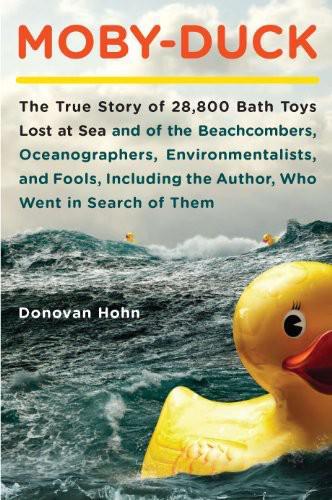
Moby-Duck: The True Story of 28,800 Bath Toys Lost at Sea and of the Beachcombers, Oceanographers, Environmentalists, and Fools, Including the Author, Who Went in Search of Them
by
Donovan Hohn
Published 1 Jan 2010
He’d just need a few weeks’ notice to set everything up. Dongguan, I learned, is an industrial town in the Pearl River Delta Economic Zone, an alluvial maze of factories and shipping routes radiating outward into Guangdong Province from Hong Kong. The Pearl River Delta is mainly what people have in mind when they talk about China’s “economic miracle.” Newspapers often refer to it as “the workshop of the world,” a phrase, first applied to England in the nineteenth century, that has in the twenty-first century drifted east. The iPod is manufactured in the Pearl River Delta, and so is Chicken Dance Elmo. So are most of the cheap, ubiquitous goods labeled MADE IN CHINA that we Americans buy.
…
So are most of the cheap, ubiquitous goods labeled MADE IN CHINA that we Americans buy. Although, reading the newspaper, I tended to imagine the Pearl River Delta as a polluted wasteland where workers toiled miserably away in dark Satanic mills, not all my Pearl River dreams were bad ones. In The Oracle Bones, his exquisitely reported book about life in China at the turn of the millennium, Peter Hessler quotes a song sung in commemoration of the country’s thirty-year experiment with capitalism, an experiment that began when Deng Xiaoping established the Pearl River Delta Economic Zone. “In the spring of 1979,” one verse of this song goes,An old man drew a circle on the southern coast of China And city after city rose up like fairy tales And mountains and mountains of gold gathered like a miracle. . . .
…
In Shenzhen, known as the Overnight City because of the speed with which it sprouted up, mushroomlike, out of the rice paddies and fishing towns that preceded it, the annual growth rate in some years surpassed 30 percent. Despite recent competition from Beijing and Shanghai, the Pearl River Delta remains China’s most productive region. Home to just 3 percent of the country’s population, it nonetheless accounts for more than 25 percent of China’s foreign trade. The late Chinese sociologist Fei Xiaotong once described the Pearl River Delta as “a store at the front and a factory in the back.” Hong Kong is the store; Guangdong Province is the factory. Journeying from the one to the other, I imagined, would be like traveling upstream toward the headwaters of my material universe.

World Cities and Nation States
by
Greg Clark
and
Tim Moonen
Published 19 Dec 2016
Land‐limited cities such as Singapore have not spilled over into a manufacturing hinterland, whereas Hong Kong has been able to through its relationship with the Pearl River Delta. But, for many emerging world cities, the major challenge is dealing with scale and getting 12 World Cities and Nation States Table 1.2: Size and scale of world cities and world city regions City City population/m. City size/ km2 Hong Kong London Moscow 7.3 8.8 12.2 1100 1500 2500 Mumbai 12.6 440 New York Paris São Paulo 8.5 2.2 12 1100 105 1500 Shanghai Singapore Seoul Tokyo Toronto 24.2 5.5 9.8 13.5 2.9 6200 720 605 2200 630 Regional population/m Region Greater Pearl River Delta Greater South East Moscow and Moscow Region Mumbai Metropolitan Region Tri‐state region Île‐de‐France São Paulo Metropolitan Region Yangtze River Delta — National Capital Region Tokyo Metropolis Greater Toronto Area 65 24 19 Region size/km2 55,000 39,700 47,000 21.5 4350 23 12 21 34,000 12,000 8000 100 — 26 36 6.7 100,000 — 12,000 14,000 14,000 Sources: Census and Statistics Department, The Government of the Hong Kong Special Administrative Region, 2015; Greater London Authority Datastore, 2015; INSEE, 2016a, 2016b; Russian Federation Federal Statistics Service, 2014; Municipal Corporation of Greater Mumbai, 2015; IBGE, 2015; National Bureau of Statistics of China, 2015; Department of Statistics Singapore, 2015; Seoul Metropolitan Government, 2015; Tokyo Metropolitan Government, 2014; Ontario Ministry of Finance, 2014; Statistics Bureau of Guangdong Province, 2015; Office for National Statistics (UK), 2014; United Nations Department of Economic and Social Affairs, 2014; United States Census Bureau, 2014; EMPLASA, 2016; Statistics Korea, 2016; Geographical Information Authority of Japan, 2014; OECD Stat., 2016.
…
Within and across national borders, networks of cities often form a complementary system of different functions and specialisations. This often demands new national approaches. In China, for example, since the mid‐2000s the national urban policy has begun to plan its huge scale of urbanisation by identifying large regional city clusters as strongholds of future sustainable development. The Pearl River Delta, Yangtze River Delta and the Beijing–Tianjin–Hebei regions have all become the subject of regional plans, with the aim of accelerating development, bridging regional divides and restructuring the economy. The third trend to which nation states have to respond is the emerging capacity of multiple cities in the same nation to acquire international roles.
…
City size/ km2 Hong Kong London Moscow 7.3 8.8 12.2 1100 1500 2500 Mumbai 12.6 440 New York Paris São Paulo 8.5 2.2 12 1100 105 1500 Shanghai Singapore Seoul Tokyo Toronto 24.2 5.5 9.8 13.5 2.9 6200 720 605 2200 630 Regional population/m Region Greater Pearl River Delta Greater South East Moscow and Moscow Region Mumbai Metropolitan Region Tri‐state region Île‐de‐France São Paulo Metropolitan Region Yangtze River Delta — National Capital Region Tokyo Metropolis Greater Toronto Area 65 24 19 Region size/km2 55,000 39,700 47,000 21.5 4350 23 12 21 34,000 12,000 8000 100 — 26 36 6.7 100,000 — 12,000 14,000 14,000 Sources: Census and Statistics Department, The Government of the Hong Kong Special Administrative Region, 2015; Greater London Authority Datastore, 2015; INSEE, 2016a, 2016b; Russian Federation Federal Statistics Service, 2014; Municipal Corporation of Greater Mumbai, 2015; IBGE, 2015; National Bureau of Statistics of China, 2015; Department of Statistics Singapore, 2015; Seoul Metropolitan Government, 2015; Tokyo Metropolitan Government, 2014; Ontario Ministry of Finance, 2014; Statistics Bureau of Guangdong Province, 2015; Office for National Statistics (UK), 2014; United Nations Department of Economic and Social Affairs, 2014; United States Census Bureau, 2014; EMPLASA, 2016; Statistics Korea, 2016; Geographical Information Authority of Japan, 2014; OECD Stat., 2016. Shanghai* Tokyo Hong Kong** São Paulo London Moscow Seoul Toronto Mumbai Paris Singapore City Area in km2 Metropolitan Region Area in km2 * Metro area = Area of Yangtze River Delta Economic Zone ** Metro area = Area of Pearl River Delta Economic Zone Figure 1.2: Comparative size of world cities and their metropolitan regions. New York Introduction: Clash of the centuries? 13 30,000 City density Metro density 25,000 People per km2 20,000 15,000 10,000 5,000 ai gh an nt o Sh w ro To co os nd on M ng ky o Lo To rk Ko g Yo on H or e ew N Si ng ap ul o l Pa ou o Se ris Pa Sã M um ba i 0 NB: Population and area data for metro regions from OECD where available, otherwise based on independent sources.
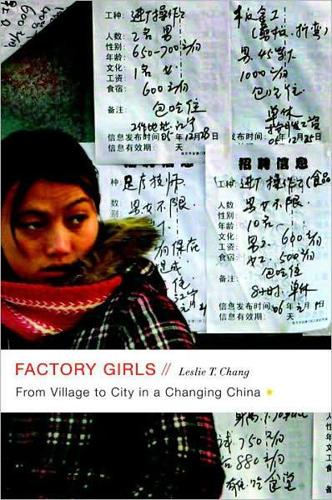
Factory Girls: From Village to City in a Changing China
by
Leslie T. Chang
Published 6 Oct 2008
The innards of a mountain spill out, red-earthed and raw, where its face was blasted away; exit ramps off the highway disappear in fields of marshy weeds. A brand-new corporate headquarters looks out on rice paddies, fishponds, and duck farms; miraculously, people are still farming here. In the seventeenth century, settlers turned the floodplains of the Pearl River Delta into one of China’s most fertile regions, supplying fish, vegetables, and rice to the country and exporting silk to Europe. Today in the land of full-throttle industry, it is these glimpses of nature that are unsettling. The farmers are mostly migrants, the lowest of the low, for they have traveled a thousand miles from home but have still not left the farm behind.
…
But when jobs at the first factory fell through, they stayed. They had come to the city, and already they were changed. I MET YONGXIA AND DALI on my second day in town. It was a hot February morning, the sky bleached a dingy white and the air humming with heat and motorcycle exhaust; in the Pearl River Delta, summer would begin in another month. I took the girls to a noodle shop and ordered Cokes. They sipped them carefully through straws as they told me the story of how they had left home. I explained that I was a reporter for the Wall Street Journal. Yongxia turned my business card over and over, mulling its unfamiliar Beijing address.
…
The companies relied on traditional networks of extended family and friends; the first thing a chuanxiao salesman usually did was to browbeat every friend and relative into buying something. They promised wealth and fulfillment. And they offered a clear road map to success: Get to know three people a day. The industry flourished in the small towns and migrant communities of the Pearl River Delta. Here where rural and urban worlds met, people envied the success of others and were hungry to have it themselves. If someone they knew promised instant wealth and a miracle cure, they were easily swayed. The rise of chuanxiao companies worried the central government. Some of the companies traded in fake, smuggled, or shoddy goods; their training meetings, where charismatic leaders drove members into an evangelical selling frenzy, came to look disturbingly similar to cults.

The Rise of the Network Society
by
Manuel Castells
Published 31 Aug 1996
Hong Kong developed its functions as a global business center. 3 However, Hong Kong’s manufacturing exports capacity did not fade away: it simply modified its industrial organization and its spatial location. In about ten years, between the mid-1980s and the mid-1990s, Hong Kong’s industrialists induced one of the largest- scale processes of industrialization in human history in the small towns of the Pearl River Delta. By the end of 1994, Hong Kong investors, often using family and village connections, had established in the Pearl River Delta 10,000 joint ventures and 20,000 processing factories, in which were working about 6 million workers, depending upon various estimates. Much of this population, housed in company dormitories in semi-rural locations, came from surrounding provinces beyond the borders of Guandong.
…
For Emma Kiselyova-Castells, without whose love, work, and support this book would not exist Figures 2.1 Productivity growth in the United States, 1995–1999 2.2 Estimate of evolution of productivity in the United States, 1972–1999 93 2.3 Growth in trade and capital flows, 1970–1995 2.4 Goods in international trade by level of technological intensity, 1976/1996 2.5 Foreign direct investment 2.6 Cross-border mergers and acquisitions, 1992–1997 2.7 Export shares 2.8 Share of growth from high-tech sector in the United States, 1986–1998 2.9 Declining dividends payments 4.1 Percentage of the United States’ population that is foreign-born, 1900–1994 4.2 Total fertility rates for nationals and foreigners in selected OECD countries 4.3 Index of employment growth by region, 1973–1999 4.4 Part-time workers in employed labor force in OECD countries, 1983–1998 4.5 Self-employed workers in employed labor force in OECD countries, 1983–1993 4.6 Temporary workers in employed labor force in OECD countries, 1983–1997 4.7 Non-standard forms of employment in employed labor force in OECD countries, 1983–1994 4.8 Employment in the temporary help industry in the United States, 1982–1997 4.9 Percentage of working-age Californians employed in “traditional” jobs, 1999 4.10 Distribution of working-age Californians by “traditional” job status and length of tenure in the job, 1999 4.11 The Japanese labor market in the postwar period 4.12 Annual growth of productivity, employment, and earnings in OECD countries, 1984–1998 5.1 Media sales in 1998 for major media groups 5.2 Strategic alliances between media groups in Europe, 1999 5.3 Internet hosts, 1989–2006 5.4 Internet CONE and country code domain names by city worldwide, July 1999 5.5 Internet CONE and country code domain names by city in North America, July 1999 5.6 Internet CONE and country code domain names by city in Europe, July 1999 5.7 Internet CONE and country code domain names by city in Asia, July 1999 6.1 Largest absolute growth in information flows, 1982 and 1990 6.2 Exports of information from the United States to major world regions and centers 6.3 System of relationships between the characteristics of information technology manufacturing and the industry’s spatial pattern 6.4 The world’s largest urban agglomerations (>10 million inhabitants in 1992) 6.5 Diagrammatic representation of major nodes and links in the urban region of the Pearl River Delta 6.6 Downtown Kaoshiung 6.7 The entrance hall of Barcelona airport 6.8 The waiting room at D.E. Shaw and Company 6.9 Belleville, 1999 6.10 Las Ramblas, Barcelona, 1999 6.11 Barcelona: Paseo de Gracia 6.12 Irvine, California: business complex 7.1 Labor force participation rate (%) for men 55–64 years old in eight countries, 1970–1998 7.2 Ratio of hospitalized deaths to total deaths (%), by year, 1947–1987, in Japan 7.3 War deaths relative to world population, by decade, 1720–2000 Tables 2.1 Productivity rate: growth rates of output per worker 2.2 Productivity in the business sector 2.3 Evolution of the productivity of business sectors 2.4 Evolution of productivity in sectors not open to free trade 2.5 Evolution of US productivity by industrial sectors and periods 2.6 Cross-border transactions in bonds and equities, 1970–1996 2.7 Foreign assets and liabilities as a percentage of total assets and liabilities of commercial banks for selected countries, 1960–1997 2.8 Direction of world exports, 1965–1995 2.9 Parent corporations and foreign affiliates by area and country 2.10 Stocks valuation, 1995–1999 4.1 United States: percentage distribution of employment by industrial sector and intermediate industry group, 1920–1991 4.2 Japan: percentage distribution of employment by industrial sector and intermediate industry group, 1920–1990 4.3 Germany: percentage distribution of employment by industrial sector and intermediate industry group, 1925–1987 4.4 France: percentage distribution of employment by industrial sector and intermediate industry group, 1921–1989 4.5 Italy: percentage distribution of employment by industrial sector and intermediate industry group, 1921–1990 4.6 United Kingdom: percentage distribution of employment by industrial sector and intermediate industry group, 1921–1992 4.7 Canada: percentage distribution of employment by industrial sector and intermediate industry group, 1921–1992 4.8 United States: employment statistics by industry, 1920–1991 4.9 Japan: employment statistics by industry, 1920–1990 4.10 Germany: employment statistics by industry, 1925–1987 4.11 France: employment statistics by industry, 1921–1989 4.12 Italy: employment statistics by industry, 1921–1990 4.13 United Kingdom: employment statistics by industry, 1921–1990 4.14 Canada: employment statistics by industry, 1921–1992 4.15 Occupational structure of selected countries 4.16 United States: percentage distribution of employment by occupation, 1960–1991 4.17 Japan: percentage distribution of employment by occupation, 1955–1990 4.18 Germany: percentage distribution of employment by occupation, 1976–1989 4.19 France: percentage distribution of employment by occupation, 1982–1989 4.20 Great Britain: percentage distribution of employment by occupation, 1961–1990 4.21 Canada: percentage distribution of employment by occupation, 1950–1992 4.22 Foreign resident population in Western Europe, 1950–1990 4.23 Employment in manufacturing by major countries and regions, 1970–1997 4.24 Employment shares by industry/occupation and ethnic/gender group of all workers in the United States, 1960–1998 4.25 Information technology spending per worker (1987–1994), employment growth (1987–1994), and unemployment rate (1995) by country 4.26 Main telephone lines per employee (1986 and 1993) and Internet hosts per 1,000 population (January 1996) by country 4.27 Men’s and women’s employment ratios, 15–64 years old, 1973–1998 4.28 Percentage of standard workers in the chuki koyo system of Japanese firms 4.29 Concentration of stock ownership by income level in the United States, 1995 7.1 Annual hours worked per person, 1870–1979 7.2 Potential lifelong working hours, 1950–1985 7.3 Duration and reduction of working time, 1970–1987 7.4 Principal demographic characteristics by main regions of the world, 1970–1995 7.5 Total fertility rates of some industrialized countries, 1901–1985 7.6 First live births per 1,000 women by age group of mother (30–49 years) and by race in the United States, 1960 and 1990 7.7 Comparisons of infant mortality rates, selected countries, 1990–1995 (estimates) Preface to the 2010 Edition of The Rise of the Network Society We live in confusing times, as is often the case in periods of historical transition between different forms of society.
…
In the United States, in 2005, the Urban Land Institute defined 10 megalopolitan areas housing 68 percent of the American population. Yet, the largest metropolitan regions in the world are in Asia. The largest one, which I identified early in the first edition of this volume, is a loosely connected region that extends from Hong Kong to Guangzhou, incorporating the manufacturing villages of the Pearl River Delta, the booming city of Shenzhen, on the Hong Kong border, and the adjacent areas of Zhuhai and Macau, each one with a distinctive economy and polity, fully interdependent with the other components of this South China metropolitan region, with a population of approximately 60 million people. This prefigures the megapolitan future of China.
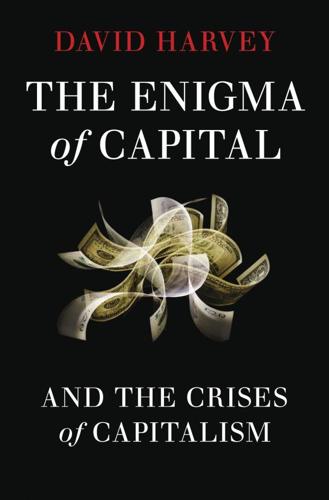
The Enigma of Capital: And the Crises of Capitalism
by
David Harvey
Published 1 Jan 2010
This was paralleled by an astonishing spurt in the industrialisation of entirely new spaces in the global economy, particularly those with specific resource or organisational advantages – Taiwan, South Korea, Bangladesh and the special production zones such as Mexico’s maquiladoras (tax-free assembly plants) or the export platforms created in China’s Pearl River delta. Global shifts in production capacity accompanied by highly competitive technological innovations, many of which were labour-saving, contributed further to the disciplining of global labour. The United States still retained immense financial power, even as it lost its earlier dominance (though not significance) in the realm of production.
…
Compact industrial centres with names like Manchester and Birmingham were linked with each other and to the main commercial port cities of Bristol and Liverpool, as well as to the teeming capital city of London, by threads of dirt turnpikes and skinny slivers of canals. Barges full of coal and raw materials were laboriously towed along the canals either by sweating horses or, as Marx records in Capital, by almost starving women. Locomotion was slow. Flying over the Pearl River delta in 1980, one would have seen tiny villages and towns with names like Shenzhen and Dongguan nestled in a largely self-sufficient agrarian landscape of rice, vegetable, livestock production and fish farming, socialised into communes ruled with an iron fist by local party officials who were also carrying an ‘iron rice bowl’ to guard against the threat of starvation.
…
But instead of examining these spheres sequentially as we did earlier in the analysis of capital circulation, we now think of them as collectively co-present and co-evolving within the long history of capitalism. In a given society at a particular point in space and time – Britain in 1850, or the Pearl River delta of China now, say – we can define its general character and condition largely in terms of how these seven spheres are organised and configured in relation to each other. Something can also be said about the likely future development of the social order in such places given the tensions and contradictions between the activity spheres, even as it is recognised that the likely evolutionary dynamic is not determinant but contingent. ——— Capital cannot circulate or accumulate without touching upon each and all of these activity spheres in some way.
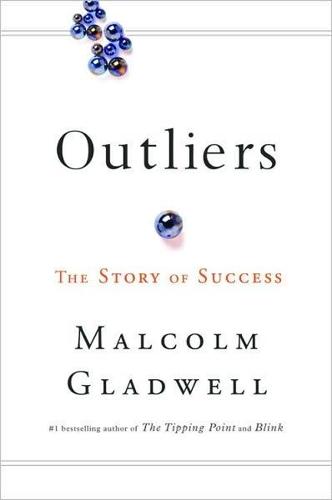
Outliers
by
Malcolm Gladwell
Published 29 May 2017
[sound of tone] END OF RECORDING Outliers, The Story of Success CHAPTER EIGHT Rice Paddies and Math Tests “NO ONE WHO CAN RISE BEFORE DAWN THREE HUNDRED SIXTY DAYS A YEAR FAILS TO MAKE HIS FAMILY RICH.” Outliers, The Story of Success 1. The gateway to the industrial heartland of Southern China runs up through the wide, verdant swath of the Pearl River Delta. The land is covered by a thick, smoggy haze. The freeways are crammed with tractor trailers. Power lines crisscross the landscape. Factories making cameras, computers, watches, umbrellas, and T-shirts stand cheek by jowl with densely packed blocks of apartment buildings and fields of banana and mango trees, sugarcane, papaya, and pineapple destined for the export market.
…
Working in a rice field is ten to twenty times more labor-intensive than working on an equivalent-size corn or wheat field. Some estimates put the annual workload of a wet-rice farmer in Asia at three thousand hours a year. Outliers, The Story of Success 4. Think, for a moment, about what the life of a rice farmer in the Pearl River Delta must have been like. Three thousand hours a year is a staggering amount of time to spend working, particularly if many of those hours involve being bent over in the hot sun, planting and weeding in a rice paddy. What redeemed the life of a rice farmer, however, was the nature of that work. It was a lot like the garment work done by the Jewish immigrants to New York.
…
The psychologist James Flynn points out, though, that the overwhelming majority of Chinese immigrants to the Westthe people who have done so well in math hereare from South China. The Chinese students graduating at the top of their class at MIT are the descendants, chiefly, of people from the Pearl River Delta. He also points out that the lowest achieving Chinese Americans are the so-called Sze Yap people, who come from the edges of the Delta, “where soil was less fertile and agriculture less intense.” + There is actually a significant scientific literature measuring Asian “persistence.” In a typical study, Priscilla Blinco gave large groups of JapaneseandAmericanfirstgradersaverydifficultpuzzleandmeasured how long they worked at it before they gave up.

Connectography: Mapping the Future of Global Civilization
by
Parag Khanna
Published 18 Apr 2016
Copenhagen airport is now closer for Malmö residents than their own, and Swedish taxis have their own stands there. Baltic nations tried to form an entente shortly after World War I but were split by Soviet expansionism. A century later, the much larger Baltic Union has emerged from Norway to Lithuania and is directly connected to western Europe by the Øresund Bridge. In China’s Pearl River delta—where cities such as Hong Kong, Macau, and Zhuhai have very different legal arrangements with Beijing—a Y-shaped bridge (over artificial islands and through a six-kilometer tunnel) set to open in 2017 will connect all three cities, cutting the passage across the southern mouth of the delta from four hours to one hour.
…
The population of the greater Mexico City region is larger than that of Australia, as is that of Chongqing, a collection of connected urban enclaves spanning an area the size of Austria. Cities that were once hundreds of kilometers apart have now effectively fused into massive urban archipelagoes, the largest of which is Japan’s Taiheiyo Belt that encompasses two-thirds of Japan’s population in the Tokyo-Nagoya-Osaka megalopolis. China’s Pearl River delta, Greater São Paulo, and Mumbai-Pune are also becoming more integrated through infrastructure. At least a dozen such megacity corridors have emerged already. China is in the process of reorganizing itself around two dozen giant megacity clusters of up to 100 million citizens each.*3 And yet by 2030, the second-largest city in the world behind Tokyo is expected not to be in China but to be Manila.
…
When I cycled around Batam in late 2014, I saw rows of colorful, private two-story condominiums under construction for families of workers who just a few years earlier came from huts in Sumatran villages. Singapore doesn’t have a natural hinterland, but now it can buy and build one. Much like Hong Kong’s integration into the Pearl River delta, the more investment, production, and other services become integrated across the three countries, the more they coordinate their master planning of infrastructure to maximize flows. When countries are willing to sell, trade, or open their territory to foreign governance at such large scale, it is a sign of the shift toward a supply chain world where optimizing economic geography supersedes preserving territorial sovereignty.

Pocket Rough Guide Hong Kong & Macau
by
Rough Guides
Published 18 Jul 2024
Along with lightly steamed whole fish, there’s masterful deep-fried squid with chillies and salt. Slightly overpriced, with set menus for two. $$$ Cheung Chau Bun Festival iStock < Back to Lamma and Cheung Chau Macau Restaurants Sixty kilometres west of Hong Kong across the Pearl River delta – and now connected by a US$18 billion-dollar bridge – the former Portuguese enclave of Macau occupies a 26-square-kilometre peninsula and two artificially fused islands jutting off the Chinese mainland. With well-preserved colonial architecture and Portuguese-influenced cuisine, Macau’s European heritage is more obvious than Hong Kong’s, though the majority of the population is Chinese.
…
By ferry Hong Kong has two downtown ferry ports: the Hong Kong–Macau Ferry Terminal in the Shun Tak Centre in Sheung Wan, Hong Kong Island (on top of Sheung Wan MTR station), which handles traffic to Macau and Shenzhen airport in China; and the China Ferry Terminal on Canton Road, Tsim Sha Tsui, Kowloon (from where Tsim Sha Tsui MTR station is a 10–15min walk), whose services include Macau and various Chinese towns through the Pearl River delta. Macau also has two ports: the central Outer Harbour Jetfoil Terminal on Avenida da Amizade for Shekou (Shenzhen Port) and Hong Kong ferries and the new Taipa Terminal, next to Macau airport, which besides Hong Kong also handles traffic to Shenzhen airport. All regular passenger ferries between Hong Kong, Macau and Shenzhen are run by Turbojet (turbojet.com.hk), which operate about 7am to midnight depending on the route.
…
< Back to Essentials Chronology 4000 BC Hong Kong and Macau area inhabited by fishermen and farmers. 1279 AD Fleeing invading Mongol armies, China’s last Song emperor dies during a naval battle off Hong Kong. 1368–1660 The Ming dynasty sees the first substantial settlement of Hong Kong and Macau by Han Chinese (China’s dominant ethnic group). 1513–1612 The Portuguese explore the Pearl River Delta and are allowed by the Chinese government to settle the Macau peninsula as a hub for their expanding trade with Japan and Southeast Asia. The town takes shape in the early seventeenth century, when Jesuits fund the construction of the massive São Paulo cathedral; forts are added from 1612 to repel the Dutch, who are attempting to muscle in on regional trade. 1639 Dutch intrigues get the Portuguese expelled from Japan; their trading network in Southeast Asia begins to unravel and Macau’s fortunes go into a decline. 1750 The British are allowed to establish trading houses on the southern Chinese mainland at Guangzhou (Canton) city, ending all serious Portuguese influence in the area.
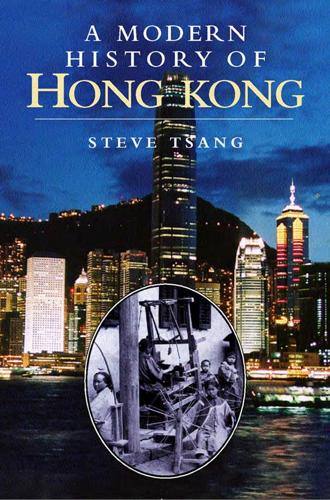
A Modern History of Hong Kong: 1841-1997
by
Steve Tsang
Published 14 Aug 2007
They were prepared to do whatever it took to clear bureaucratic red tape, secure the supply of raw material and ensure production at the quality contracted by overseas buyers. Owners of small factories in the Pearl River delta region frequently managed their investments in person or engaged Hong Kong managers, super visors and foremen to ensure production went smoothly. The latter was particularly important in the early stages of transplanting Hong Kong factories to the Pearl River delta region. It could b e d o n e b e c a u s e t h e t wo s h a r e d t h e s a m e l a n g u a g e, a n d m a j o r improvements in communication (such as the introduction of a through train service between Hong Kong and Canton in 1979) made it possible to post Hong Kong employees on the mainland on a cost-effective basis.
…
Although it has been steadily declining in importance as a contributor to the GDP, in real ter ms the value of manufacturing output continued to expand, from $US4.1 billion in 1980 ECONOMIC TAKE-OFF 177 to $US12.7 billion in 1992, before starting to fall steadily.94 In the meantime, as Hong Kong’s manufacturing sector transformed itself into a high value-added production centre, it took the lead to turn the Pearl River delta into a low-cost centre for contract manufacturing. Production that could no longer be cost effectively done locally was transferred to the Chinese mainland. The scale and pace of Hong Kong’s transfer of industrial production can be illustrated in general terms by the number of workers in the PRC employed by Hong Kong companies.
…
With a huge discrepancy in production costs, Hong Kong industrialists could cut their expenditure substantially 178 A MODERN HISTORY OF HONG KONG by relocating their production facilities to Guangdong.96 This was notwithstanding lower productivity per worker, and various bureaucratic red tape and extra-legal payments required to ensure the production process was not interrupted in the PRC. It worked, because most Hong Kong industrialists kept an office in Hong Kong to look after the non-production side of the industry. They made the most of Hong Kong’s strength in marketing and design and of the low-cost production in the Pearl River delta.97 The third reason was closely related to the second one. It was the ability of Hong Kong entrepreneurs to grasp what would be needed to make the most of the complementary conditions on the one hand and to minimise the effect of the PRC system in disrupting production on the other. Most Hong Kong investments on the mainland started as small to medium-sized enterprises.
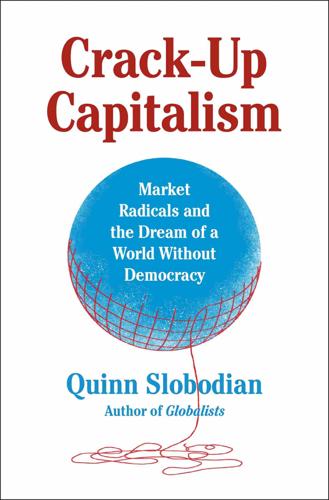
Crack-Up Capitalism: Market Radicals and the Dream of a World Without Democracy
by
Quinn Slobodian
Published 4 Apr 2023
While the MPS members gathered for their political education and shopping junket, Deng was preparing a plan for reform that came to be called “crossing the river by feeling for the stones.”86 It could have been called crossing the river by feeling for the zones. After he became paramount leader in December 1978—and Time’s Person of the Year—the first four experimental special economic zones (SEZs) were created on the Pearl River Delta, nestled up to Hong Kong on the South China Sea. In contrast to the shock treatment meted out by Augusto Pinochet to Chile after his 1973 coup, or the Big Bang overnight price reforms carried out in postcommunist Russia and Eastern Europe, China used a model of “experimental gradualism,” opening up sluices and locks to foreign investors and market-determined prices rather than dynamiting the levee and letting it all flood in.87 The first opening for the experiment in capitalist hydraulics was the district of Bao’an—on the other side of the Shenzhen River, which divided the New Territories from China—fifteen miles from Central Hong Kong but a world away in terms of the standard of living in the late 1970s.
…
In January 1979, the seam between the two worlds was breached when a Hong Kong businessman pitched the idea of a zone for what would later be called Shenzhen. He brought with him the import from Hong Kong closest to the neoliberals’ heart: the 15 percent corporate tax rate.88 By spring of that year, Hong Kong businesspeople were invested in a couple of hundred light industry projects on the Pearl River Delta, with many more waiting. “Just as the Americans have taken advantage of the underpaid, nimble-fingered factory girls of Hong Kong to cut costs by processing their goods here,” one journalist wrote, “so Hong Kong capitalists involved in less sophisticated, labor-intensive industries are turning speculative eyes on the underpaid Communist workers.”89 For many years, arriving in Shenzhen would have felt like entering a foreign country.
…
Nor did he mention the importance of language and kinship ties across the border that facilitated Hong Kong’s role as the switchboard and front shop for the mainland factory, a cockpit for the Chinese boom.109 To give just one example of the diaspora in action, the Hong Konger who opened the first zone in the Pearl River Delta had been born in Bao’an himself and fought with the communists in the revolution. When he applied to open the zone, his request was forwarded on by his former military superior, who had become the Chinese minister of communications.110 Hong Kong was no island adrift in the South China Sea. Even through the years of division, it remained knitted into the mainland’s side.111 Rather than attend to any of this complex history, Friedman opted instead, as he spoke to students at the University of Hong Kong, to remind them of the dangers of democracy.
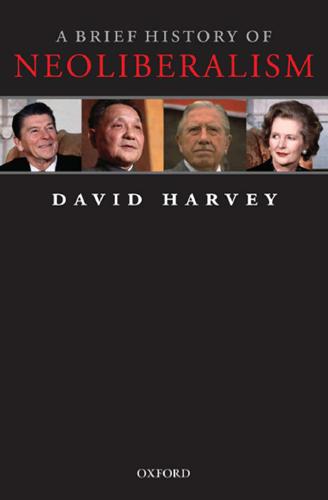
A Brief History of Neoliberalism
by
David Harvey
Published 2 Jan 1995
The general progress of neoliberalization has therefore been increasingly impelled through mechanisms of uneven geographical developments. Successful states or regions put pressure on everyone else to follow their lead. Leapfrogging innovations put this or that state (Japan, Germany, Taiwan, the US, or China), region (Silicon Valley, Bavaria, Third Italy, Bangalore, the Pearl River delta, or Botswana), or even city (Boston, San Francisco, Shanghai, or Munich) in the vanguard of capital accumulation. But the competitive advantages all too often prove ephemeral, introducing an extraordinary volatility into global capitalism. Yet it is also true that powerful impulses of neoliberalization have emanated, and even been orchestrated, from a few major epicentres.
…
They are putting the finishing touches on a vast, entirely new annex city that they hope will draw 300,000 engineers and researchers, the vanguard of a new China’.18 It is also the site of construction for what is slated to be the largest shopping mall in the world (built by a Chinese billionaire, it has seven zones modelled on Amsterdam, Paris, Rome, Venice, Egypt, the Caribbean, and California, each constructed with such close attention to detail as to be indistinguishable, we are told, from the real thing). Such new tier cities are locked in ferocious inter-urban competition. In the Pearl River delta, for example, each city is now trying to capture as much business as possible ‘by outbuilding its neighbors, often with duplicative results. Five international airports were built in the late 1990s in a 100–kilometer radius, and a similar boom is starting for ports and bridges’.19 Provinces and cities resist Beijing’s efforts to rein in their investments, in part because they have the power to fund their own projects by selling rights to develop real estate.
…
Hourly wages in textile production in China in the late 1990s stood at 30 cents compared to Mexico’s and South Korea’s $2.75, Hong Kong’s and Taiwanese levels hovering around $5, and the US’s cost of more than $10.33 Chinese production was, however, largely subservient in the initial stages to the Taiwanese and Hong Kong merchants, who commanded the access to global markets, took the lion’s share of the trading profits, and increasingly achieved backward integration into production by buying out or investing in the TVEs or SOEs. Production facilities employing as many as 40,000 workers are not uncommon in the Pearl River delta. Furthermore, low rates of pay make capital-saving innovations possible. Highly productive US plants use expensive automated systems, but ‘Chinese factories reverse this process by taking capital out of the production process and reintroducing a greater role for labor’. The total capital required is typically reduced by one-third.
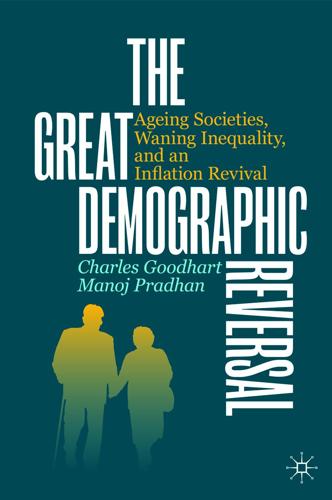
The Great Demographic Reversal: Ageing Societies, Waning Inequality, and an Inflation Revival
by
Charles Goodhart
and
Manoj Pradhan
Published 8 Aug 2020
Land was heavily subsidised and businesses were given all the help they needed to set up and operate businesses efficiently. Infrastructure including power and distribution networks was prioritised. The Pearl River Delta in Guangzhou province is the best known and most successful of these economic zones. Since 1978, nearly 30% of all foreign investment has gone to this region, and its growth rate has exceeded national growth by over 3% on average. Starting as a collection of villages amidst a rural landscape even by the mid-1980s, the World Bank describes the Pearl River Delta as the largest urban area in the world today. Its 9 biggest cities house a population of just less than 60 million.
…
The earliest of these events was Deng Xiaoping’s ‘socialism with Chinese characteristics’, particularly the second phase starting in 1992. The first phase of this drive started in 1978 with reforms to agriculture, an invitation to private enterprises to re-enter the Chinese economy, and the creation of special economic zones (including the Pearl River Delta that we discuss below) where foreign investment was allowed. Though price controls were lifted for urban industries, the economy was still dominated by fairly inefficient state-owned enterprises (SOEs hereafter). It was in the second phase that privatisation of SOEs began, when small, medium and even some large SOEs were closed or sold to the private sector.
…
Paradox of thrift Paris club, creditors’ debt sustainability Parisians, can take Metro Parkinson’s Parliament Participation Participation of elderly workers in Japan, highest Participation rate, inversely related to pension generosity Participation rate, negatively related to pension generosity Participation rate(s) Part-time workers, increasing proportion in Japan Patriotic nationalism Patterson, C. Pay-as-you-go system PBOC, committed to process of deleveraging PBoC intervene PBoC’s campaign Pearl River Delta PEMEX Pension benefits in Japan, degraded Pension benefits, need to fall for participation to rise Pension, generosity likely to fall Pension, pay-outs to failing managers Pension reform, in Germany Pensions Pensions, benefits of Pensions, funds Pensions, generosity of Pensions, promised increases by populists Pensions, protection Pensions, raising Pensions, rising public expenditures on Pension system Pension system unsustainable, German People’s Bank of China (PBoC) Permanent Normal Trade Relations (PNTR) Personal savings, insufficient Personal, savings, prime period for being reduced Peru Petrobras Petro-currency countries Petrol/gasoline, tax rate on Phelps, E.S.

Aerotropolis
by
John D. Kasarda
and
Greg Lindsay
Published 2 Jan 2009
Here, Kasarda’s framework dovetails with what we already know about globalization. The world is a network. Cities now connect more easily to each other than to the towns and villages that lie just beyond their borders, or to the national capitals that supposedly call their shots. It’s how the cities of the Pearl River Delta can become “the world’s factory,” and why their fate is bound up in the flat-screen TV you dragged home from Best Buy. It’s how Las Vegas and Macau—an oasis and an island, separated by seven thousand miles—can duel to become the world’s gambling mecca. And it’s why the manicured lawns of the Infosys campus in Bangalore still abut urban squalor outside its gates: because the Microsoft of India has nothing in common with the countryside.
…
So while we fret about the making—about exchange rates and spare factory capacity and a real estate bubble threatening to dwarf our own—China is quietly preparing to set loose its people on the world. It’s there for the taking. Inside the “World’s Factory” Crossing the border from Hong Kong means passing from the developed world to the developing one, from a city of skyscrapers to a sprawl of factory towns on a scale Henry Ford could not have foreseen. Beyond lies the Pearl River Delta, stretching for a hundred miles inland. For Liam Casey this chasm is his commute. Twice, his driver handed over our passports at checkpoints, opening the van doors so the attendants could match the names to our faces. “You’re going to love this,” Casey said, just when I thought we were in the clear.
…
Liam Casey arrived in 1996, a few years after paramount leader Deng Xiaoping declared “to get rich is glorious” while passing through the city on his farewell tour. Deng is the father of Shenzhen, having chosen this sleepy fishing village as the first of China’s “special economic zones” in 1980. Foreign firms were invited to open shop here with few constraints or taxes, triggering the transformation of the Pearl River Delta into “the factory of the world” and Shenzhen into the “Overnight City,” having grown two-hundred-fold since then. While Shanghai’s Blade Runner landscape symbolizes China’s future, Shenzhen is the template for its instant cities. Until the crisis, the Delta was the world’s biggest boomtown, crowding 5 percent of China’s population into less than 1 percent of its land, where they produced 20 percent of the country’s GDP and 40 percent of its exports.

Age of the City: Why Our Future Will Be Won or Lost Together
by
Ian Goldin
and
Tom Lee-Devlin
Published 21 Jun 2023
One such example is the melding together of Tokyo, Yokohama, Chiba and a number of other nearby cities into Greater Tokyo, the largest city in the world with a population of 37 million. Back in 2008, the urbanist Richard Florida and colleagues identified 40 such ‘mega regions’ around the world that together accounted for two-thirds of global economic output.16 The trend has further accelerated since then. The rapidly growing Pearl River Delta area in China, for example, encompasses nine increasingly interconnected cities with a total population of 65 million, equivalent to that of the UK or France, and a total output of $1.2 trillion, nearly equivalent to that of Spain.17 In his 1961 magnum opus The City in History, renowned historian Lewis Mumford described the city as both a container and a magnet.18 As cities have continued to bleed outwards, it is the magnet that has become the most apt metaphor for understanding our urban world.
…
The development of what is now the world’s largest high-speed rail network has been an important factor in fuelling urban growth in China’s inland regions, allowing them to connect with the country’s coastal ports. Today, China is in the process of consolidating its sprawling network of cities into 19 ‘supercity clusters’. The largest of these, the Pearl River Delta cluster, was described in the Introduction. The Yangtze River Delta cluster centred on Shanghai and the Beijing-Tianjin-Hebei cluster will be of a similar magnitude. Together, these 19 clusters are expected to account for 80 per cent of the country’s GDP by 2030.31 China’s planners envisage two horizontal and three vertical ‘corridors’ of land and water linkages that will connect these urban clusters together.32 Avoiding diverging living standards between coastal and inland cities has been a perennial challenge for China’s leaders.
…
Index abortion here abstract mathematics here Achaemenid Empire here Adani, Gautam here agglomeration effects here agriculture here, here, here, here, here, here, here, here, here and carbon emissions here and disease here, here productivity here, here vertical farming here Ahmedabad here air-conditioning here, here airports here, here, here, here Albuquerque here Alexandria here Allen, Paul here Allen, Thomas here Altrincham here Amazon here, here, here Amazon rainforest here Amsterdam here Anatolia here Anderson, Benedict here Anheuser-Busch here antibiotics here, here, here Antonine Plague here Anyang here apartment conversions here, here Apple here, here, here Aristotle here Arizona State University here Arlington here Assyrian merchants here Athens, Ancient here, here, here, here, here, here Atlanta here, here Austin here, here, here automation here, here, here, here, here, here, here, here axial precession here Baghdad, House of Wisdom here Baltimore here, here Bangalore here, here Bangkok here Bangladesh here, here, here, here Barlow, John Perry here Bauhaus here Beijing here, here Belmar redevelopment here Berkes, Enrico here Berlin here, here, here Berlin Wall, fall of here Bezos, Jeff here biological weapons here ‘biophilia’ here biospheres here bird flu here Birmingham here, here Black Death here, here, here Blake, William here Bloom, Nick here BMW here ‘bobo’ (bourgeois bohemian) here, here, here Boccaccio, Giovanni here Boeing here, here, here Bogota here Bologna here Bonfire of the Vanities here Borneo here Boston here, here, here Boston University here, here Brand, Stewart here Brazil here, here Brexit here, here, here Bristol here Britain broadcasting here deindustrialization here education here enclosure movement here foreign aid here high-speed rail here, here house prices here immigration here industrialization here, here infant mortality here ‘levelling up’ here life expectancy here mayoralties here per capita emissions here per capita incomes here remote working here social housing here Brixton riots here broadcasting here Bronze Age here, here, here, here bronze, and shift to iron here Brooks, David here Brynjolfsson, Eric here Burgess, Ernest here bushmeat here, here Byzantine Empire, fall of here Cairncross, Frances here Cairo here calendar, invention of here Cambridge, Massachusetts here Cambridge University here canals here, here, here ‘cancel culture’ here Cape Town here Catholic Church here C40 Cities partnership here Chadwick, Edwin here Chang’an (Xi’an) here, here, here, here Charles, Prince of Wales here charter cities here Chengdu here Chiba here Chicago here, here, here, here, here, here, here, here childbirth, average age at here childcare here, here, here, here, here China here ancient here, here, here, here call-centre workers here cereal production here civil strife here and Covid-19 pandemic here Cultural Revolution here definition of cities here economic liberalization here entry into WTO here Household Responsibility System here hukou system here One Child Policy here Open Coastal Cities here per capita emissions here rapid ageing here Special Economic Zones here technology here urbanization here China Towns here Chinese Communist Party here cholera here, here, here, here Chongqing here cities, definition of here Citigroup here city networks here civil wars here Cleveland here, here, here, here climate change here, here, here, here, here, here, here, here, here, here coastal cities here, here, here, here commuting here, here, here, here, here, here, here, here Concentric Zone Model here Confucius here conspiracy theories here Constantinople here, here containerization here, here Copenhagen here, here Corinth here Cornwall here corruption here Coventry here, here covid-19 see pandemics crime rates here ‘cyberbalkanization’ here cycling here, here, here, here Damascus here Dark Ages here, here data science here de Soto, Hernando here deforestation here, here, here, here Delhi here Dell here Delphic oracle here democracy here, here, here Democratic Republic of Congo here, here, here, here, here, here Deng Xiaoping here dengue fever here Denmark here, here Detroit here, here, here, here, here, here, here Dhaka here, here, here, here, here Dharavi here Diana, Princess of Wales here diasporas here, here Dickens, Charles here district heating systems here Dresden here drought here, here, here, here, here, here, here Drucker, Peter here dual-income households here, here Dubai here, here, here Dunbar, Kevin here Düsseldorf here East Antarctic ice sheet here East China Sea here, here Easterly, William here Eastern Mediterranean here, here, here Ebola here Edinburgh here education here, here, here, here, here, here, here, here, here, here, here, here, here, here higher education here, here, here, here; see also universities Japanese school system here Egypt here, here Ancient here, here, here, here Ehrenhalt, Alan here electric vehicles (EVs) here Engels, Friedrich here Enlightenment here Epic of Gilgamesh here Erfurt here Ethiopia here, here Euripides here European Enlightenment here exchange rates here Facebook here, here, here fake news here famine here, here fertility rates here, here, here ‘15-minute city’ principle here Fischer, Claude here Fleming, Alexander here flooding here, here, here, here, here, here, here Florida, Richard here, here food shortages here Ford, Henry here, here foreign aid here fossil fuels here, here France here, here, here, here, here, here, here, here, here, here, here Frankfurt here Franklin, Benjamin here Friedman, Thomas here, here Fryer, Roland here Fukuoka here, here Gaetani, Ruben here Galileo Galilei here Ganges River here Garden Cities here Garden of Eden here Gates, Bill here, here gay community here General Electric here General Motors here genetic engineering here gentrification here, here, here, here, here George, Andy here Germany here, here, here, here, here, here Gingrich, Newt here glaciers here Glasgow here Glass, Ruth here global financial crisis here, here, here global population, size of here globalization here, here, here, here, here, here, here, here, here, here Goldstein, Amy here Google here, here, here Goos, Maarten here Grant, Adam here Great Depression here, here Greece, Ancient here, here, here, here, here Griffith Observatory here Gropius, Walter here Gruen, Victor here Gulf Stream here Haiti here Hamburg here Hanseatic League here, here Harappa here, here Harry, Prince here Harvard University here hate speech here Haussmann, Baron here, here Hawaii here Hazlitt, William here healthcare here, here, here, here, here, here, here, here, here, here heatwaves here, here Hebei here Heckscher, Eli here Herodotus here Himalayas here Hippocrates here Hippodamus here Hittite Empire here HIV here, here Ho Chi Minh City here Holocene here, here, here homophily here Hong Kong here house prices here, here, here, here, here, here, here Houston here, here, here Howard, Ebenezer here Hudson River here Hugo, Victor here Hume, David here Hurricane Katrina here hybrid working, see remote and hybrid working ice melting here, here import substitution industrialization here InBev here India here, here, here, here, here, here, here, here, here fertility rates here Indonesia here, here Indus River here Indus Valley here, here, here inequality here, here, here, here, here, here, here, here, here, here, here infant and child mortality here, here, here, here influenza here, here, here ‘information cocoons’ here Instagram here internet here, here, here, here, here, here invention here, here, here, here, here, here, here, here, here, here irrigation here, here, here, here Italy here Jacobs, Jane here, here, here Jakarta here, here James, Sheila here Japan here, here, here, here, here, here, here, here, here post-war development here schooling system here Jenner, Edward here Jesus Christ here Jobs, Steve here jobs apprenticeships here ‘lousy’ and ‘lovely’ here tradeable and non-tradeable here Justinian Plague here Kashmir here Kenya here Kinshasa here, here Kish here knowledge workers here, here, here, here, here, here, here, here, here, here, here, here Koch, Robert here Kolkata here Korean War here Krugman, Paul here Kushim Tablet here Lagash here Lagos here, here, here, here, here, here, here Lahore here land titling programmes here Las Vegas here Latin language here Lee Kuan Yew here, here Leeds here, here Leicester here Leipzig here, here, here, here Letchworth here life expectancy here, here, here, here, here, here Liverpool here, here Ljubljana here London here, here, here, here, here, here, here bike lanes here Canary Wharf here, here Chelsea here, here, here China Town here cholera outbreaks here City of London here, here coffeehouses here and Covid-19 pandemic here financial services here gentrification here, here, here Great Stink here, here heatwaves here, here house prices here, here hybrid working here, here immigration here, here incomes here, here mayoralty here migration into inner London here population growth here, here, here poverty here, here public transport here, here, here slum housing here social housing here suburbanization here Los Angeles here, here, here, here Louisville here Luoyang here Luther, Martin here Luton Airport here Luxembourg here, here Lyon here McDonald’s here McDonnell Douglas here McLuhan, Marshall here Madagascar here malaria here, here, here, here Malaysia here Mali here malls, reinvention of here Manchester here, here, here, here, here, here, here Manila here Manning, Alan here Markle, Meghan here marriage here Marshall, Alfred here Marshall, Tim here Marx, Karl here Maya here, here measles here, here, here Meetup here mega regions here Mekong River here Memphis, Egypt here, here Mesoamerica here, here Mesopotamia here, here, here metallurgy here metaverse here methane here, here Mexico here Miami here, here, here microbiology here Microsoft here, here, here middle class, rise of here migration policy here millennial generation here Milwaukee here, here Minoan civilization here Mistry, Rohinton here MIT here MMR vaccine here ‘modernization’ theory here Mohenjo-Daro here, here Moretti, Enrico here, here mortality rates here, here, here, here, here, here, here, here, here, here, here, here motor car, invention of here Moynihan, Daniel here Mumbai here, here Mumford, Lewis here, here, here, here Munich here, here Mycenaean civilization here Nagoya here, here Nairobi here Nashville here National Landing, Arlington here Natural History Museum here natural resource exports here Nestlé here Netherlands here network effects here New Economics Foundation here New Orleans here, here New York here, here, here, here, here, here, here, here, here, here carbon emissions here and Covid-19 pandemic here gentrification here, here housing here, here, here incomes here, here Manhattan here, here, here, here, here population growth here, here and rising sea levels here slum housing here suburbanization here, here subway here waste and recycling here New York Central Railroad here New York World Fair here Newcastle here Nextdoor here Niger here Nigeria here, here, here, here Nilles, Jack here, here Nipah virus here Norway here, here Nottingham here Novgorod here ocean and air circulation here office rental and sales prices here Ohlin, Bertil here Oldenburg, Ray here online deliveries here OpenTable here Osaka here, here Oslo here Ottoman Empire here Oxford, population of here Oxford University here Pacific Belt Zone here Padua here Pakistan here, here, here pandemics here, here, here, here, here, here, here, here, here, here, here, here, here, here and zoonotic diseases here paramyxovirus here Paris here, here, here, here, here, here, here, here, here, here, here, here, here, here, here, here Paris Conference (2015) here Park Chung-hee, General here parks here Pasteur, Louis here Pearl River Delta here, here Peñalosa, Enrique here per capita income here Philadelphia here Philippines here, here Phoenix here, here Pixar here plague here, here, here, here Plato here plough, invention of here pollution here, here, here, here air pollution here, here, here, here population growth here, here, here, here, here, here, here, here PORTL here potter’s wheel, invention of here printing press here, here productivity here, here, here, here, here agricultural here, here Protestantism, rise of here public transport here, here, here, here, here, here, here, here, here, here, here, here, here, here Putnam, Robert here, here quarantine here railways here, here, here, here, here high-speed rail here, here, here Ralston Purina here Reagan, Ronald here recycling here, here religion here remote and hybrid working here, here, here, here Renaissance Florence here, here, here renewable energy here, here Republic of Letters here République des Hyper Voisins here ‘resource curse’ here Rheingold, Howard here Ricardo, David here Rio de Janeiro here Riverside, San Francisco here robotics here Rockefeller, John D. here Roman Empire here, here, here Rome, Ancient here, here, here, here, here, here Romer, Paul here Rotterdam here Rousseau, Jean-Jacques here, here Sahel here, here sailboat, invention of here St Augustine here St Louis here, here, here Salesforce here San Diego here San Francisco here, here, here, here, here, here, here, here, here, here, here gentrification here, here hybrid working here, here San Francisco Bay Area here, here, here Santa Fe here São Paulo here Savonarola, Girolamo here Scientific American here Scott, Emmett J. here sea levels, rising here, here, here Seattle here, here, here, here, here, here Second Opium War here Seneca here Seoul here Shanghai here, here, here, here, here Shantou here Sheffield here, here, here Shen Nung here Shenzhen here, here Siemens here Silk Roads here, here Sinclair, Upton here Singapore here, here, here, here Slater, Samuel here smallpox here, here Smith, Adam here, here Snow, John here social capital here social housing here, here social media here, here, here, here, here Socrates here solar panels here South Africa here South Korea here, here, here, here, here, here Southdale Center here specialization here, here, here, here, here, here Spengler, Oswald here Starbucks here Stephenson, Neal here Stewart, General William here Stuttgart here Sub-Saharan Africa here subsidiarity principle here suburbanization here, here, here, here, here, here, here, here, here Sunstein, Cass here Sweden here, here Sydney here, here, here, here, here, here Syrian refugees here, here Taiwan here Tanzania here telegraph here Tempest, Kae here Thailand here Thames River here, here Thatcher, Margaret here, here, here ‘third places’ here Tianjin here Tocqueville, Alexis de here Toffler, Alvin here Tokyo here, here, here, here trade liberalization here trade routes here Trump, Donald here, here tuberculosis here, here, here Twain, Mark here Twitter here, here typhoid here, here typhus here, here Uber here Uganda here Ukraine here, here Umayyad Caliphate here unemployment here, here United Nations here, here United States anti-global populism here anti-trust regulation and industrial consolidation here anxiety and depression here broadcasting here car registrations here cost of education here decline in trust here deindustrialization here Gilded Age here Great Migration here house prices here, here immigration here industrialization here inequality here labour mobility here ‘magnet schools’ here parking spaces here patent filings here per capita emissions here, here per capita incomes here remote working here, here, here return on equity here Rust Belt here schools funding here slavery here socioeconomic mobility here suburbanization here tax revenues here US Federal Housing Authority here US General Social Survey here US Trade Adjustment Assistance Program here universities here, here, here University College London here University of Texas here university-educated professionals here Ur here urban heat island effect here urbanism, subcultural theory of here Uruk here, here, here, here, here vaccines here, here Van Alstyne, Marshall here Vancouver here Venice here, here Vienna here, here Vietnam here voluntary associations here, here Wakefield, Andrew here walking here, here, here Wall Street here Warwick University here Washington University here WELL, The here Welwyn Garden City here wheel, invention of here wildfires here, here William the Conqueror here Wilson, Edward Osborne here, here Wilson, William here World Bank here, here World Health organization here World Trade Organization here World Wide Web here writing, invention of here Wuhan here, here Xiamen here Yangtze River here, here Yangtze River Delta here yellow fever here Yellow River here, here Yersinia pestis here Yokohama here YouTube here, here Yu the Great here Zhuhai here Zoom here Zoroastrianism here BLOOMSBURY CONTINUUM Bloomsbury Publishing Plc 50 Bedford Square, London, WC1B 3DP, UK 29 Earlsfort Terrace, Dublin 2, Ireland BLOOMSBURY, BLOOMSBURY CONTINUUM and the Diana logo are trademarks of Bloomsbury Publishing Plc This electronic edition first published in Great Britain 2023 Copyright © Ian Goldin and Tom Lee-Devlin 2023 Ian Goldin and Tom Lee-Devlin have asserted their right under the Copyright, Designs and Patents Act, 1988, to be identified as Authors of this work All rights reserved.
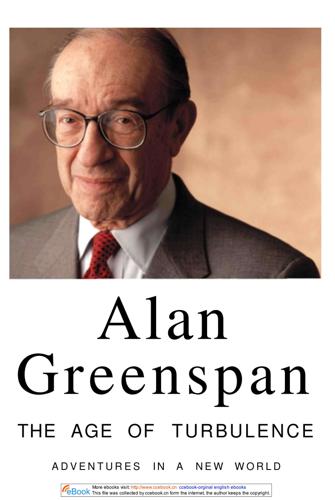
The Age of Turbulence: Adventures in a New World (Hardback) - Common
by
Alan Greenspan
Published 14 Jun 2007
That shift was not only the result of people moving to cities and some definitional changes but also the result of rural land being urbanized as new manufacturing enclaves began to sprout up ; mainly in the Pearl River delta contiguous to vibrant Hong Kong. In the 1970s this fertile area was home to sleepy farms and villages, but in the last fifteen years pioneering foreign investors from Hong Kong and elsewhere have stoked the region's growth. The delta now produces everything from toys to textiles, most of it manufactured for export. Hong Kong's example and assistance in the development of the Pearl River delta's economy has been striking. When China reestablished its sovereignty over Hong Kong in 1997, I did not hold much hope for the survival of Hong Kong capitalism.
…
Not only did the economies of the former Soviet bloc, after some chaos, embrace the ways of market capitalism, but so did most of what we previously called the third world—countries that had been neutral in the cold war but had practiced central planning or had been so heavily regulated that it amounted to the same thing. Communist China, which had edged toward market capitalism as early as 1978, accelerated the movement of its vast, tightly regulated, then more-than-500-million-person workforce toward the Free Trade Zones of the Pearl River delta. China's shift in protecting the property rights of foreigners, while subtle, was substantial enough to induce a veritable explosion in foreign direct investment (FDI) into China following 1991. From a level of $57 million 12 More ebooks visit: http://www.ccebook.cn ccebook-orginal english ebooks This file was collected by ccebook.cn form the internet, the author keeps the copyright.
…
His replacement, Karen Johnson, with a doctorate from MIT, continued my education. During my Fed years, I interacted with experts on virtually every international economic issue imaginable, from the opaque budget accounting rules governing our financial contributions to the IMF to the economics of China's Pearl River delta. I also had to continually recalibrate my views of how the U.S. economy worked in the context of ever-expanding globalization. Overseeing my schooling on the U.S. economy in addition to Don Kohn was David Stockton, the Fed's chief economist since 2000 and a Fed staffer since 1981. He never sought nor received the press that Fed governors get, but when the governors gave speeches, it was his forecast of the U.S. economy that Fed watchers were getting.

The Future Is Asian
by
Parag Khanna
Published 5 Feb 2019
British expansionism compounded the Qing Dynasty’s difficulties. Seeking to grow its trade surpluses, the British forced the Qing to absorb ever greater volumes of opium from India, leading to widespread addiction. In 1838, the British responded to the destruction of 20,000 cases of opium with military force, sailing up the Pearl River delta with gunboats and bombarding Chinese defenses, repeating the intrusions in the 1850s. These humiliations were exacerbated by European imperialists seizing Chinese ports as their own dominions in Shanghai, Tianjin, Ningbo, Fuzhou, Xiamen, and Hong Kong. China was also plagued by civil wars such as the Taiping Rebellion.
…
Starting in 1978, Mao’s successor, Deng Xiaoping, sought to blend socialism with the opportunities of the global economy. He decollectivized agriculture, allowed private enterprise, and opened the country to foreign trade and investment as the “tiger” economies had done in the preceding decade. In May 1980, Shenzhen in the Pearl River delta became the first Chinese Special Economic Zone, luring foreign capital with tax exemptions and light regulation. It rapidly achieved a 30 percent annual growth rate and mushroomed from a village with a population of 30,000 to a bustling city of 10 million. While making China the leading developing-country destination for foreign investment, Deng also signed a landmark Treaty of Peace and Friendship with Japan and improved ties with both the US and USSR.
…
Much as Vietnam has done, India is seeking to lure investment away from China toward its own coastal special economic zones for manufacturing exports.41 Whereas for decades Mumbai was India’s only significant economic hub, today the states of Andhra Pradesh and Tamil Nadu are major commercial centers. The Bangalore-Chennai-Hyderabad industrial triangle in southern India has become the country’s Pearl River delta, with 30 million people contributing 80 percent of the country’s IT services, plus innovative clusters around biomedical engineering and digital finance. India’s fastest-growing states in the past decade have been some of its most remote and backward, such as Sikkim and Bihar. Driven by construction, power generation, and manufacturing (and tourism in Sikkim’s Himalayan region), both states have been growing by 12 percent to 25 percent per year.
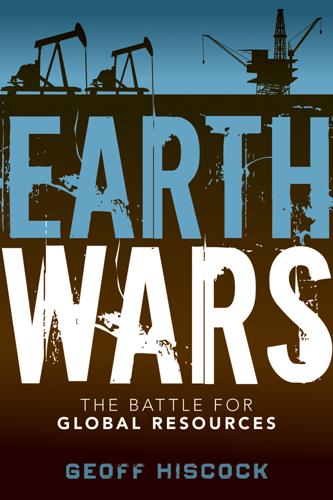
Earth Wars: The Battle for Global Resources
by
Geoff Hiscock
Published 23 Apr 2012
A thousand years ago, trading vessels would make their way from India east across that part of the Indian Ocean known as the Andaman Sea, into the Malacca Strait and on to Sumatra and the Malay Peninsula, often stopping at the capital of the Srivijaya empire (Palembang) before turning north to Tonkin and the Chinese ports of Beihai, Guangzhou, Quanzhou, Zhangzhou, and Xiamen (Amoy) and Ningbo. Guangzhou, the biggest port of them all, lies at the head of the Pearl River Delta and has a history dating back 3,000 years. As early as the Tang dynasty (618–907 ce) it was home to thriving communities of Indian and Arab traders. Long before the great fifteenth century, Chinese armadas sailed out from Taicang (a port area near Shanghai) under the command of Admiral Zheng He to explore the “western oceans” and trade with Southeast Asia, India, Africa, the Middle East, and (possibly) the Mediterranean states.
…
In 2000, the city of Shenzhen—by then its population swollen past 10 million people—marked Deng’s role as a “great planner and contributor” to its development, unveiling a 6 m bronze statue in Lianhua (Lotus) Mountain park that shows Deng in a purposeful pose. Today, Shenzhen’s economic zone has expanded to take in the container port of Yantian and it forms part of the powerful Pearl River Delta region with Guangzhou and Hong Kong. China’s gross domestic product overtook that of Japan midway through 2010 for it to become the world’s No. 2 economy, though per capita income, even on the basis of purchasing power parity, is only about one-fifth of Japan’s. According to the International Monetary Fund, U.S. nominal gross domestic product in 2010 was $14.5 trillion, compared with $5.88 trillion for China and $5.46 trillion for Japan.
…
Japanese business strategist and globalisation pioneer Kenichi Ohmae suggested in 1995 that the end of the nation state was nigh—that countries were dinosaurs waiting to die, and in their place would arise “new engines of prosperity” based on natural economic zones.8 He identified some of them as northern Italy, the upper Rhine, Silicon Valley/Bay Area, Hong Kong/southern China, Singapore-Johore-Batam, Pusan, and Fukuoka, San Diego, and Tijuana. Some of this regionalisation has come to pass—notably the Pearl River Delta encompassing Hong Kong and southern China—but equally we have seen countries keen to form supranational groupings and unions over the past 15 years: G8, G20, G77, APEC, GCC, Mercosur, the expanded EU (see Exhibit 15.1). Russian leader Vladimir Putin has created a Common Economic Space with Belarus and Kazakhstan and has even spoken of a Eurasian Union that would bring back into the fold some of the Central Asian nations that went their own way after the breakup of the Soviet Union in 1991.
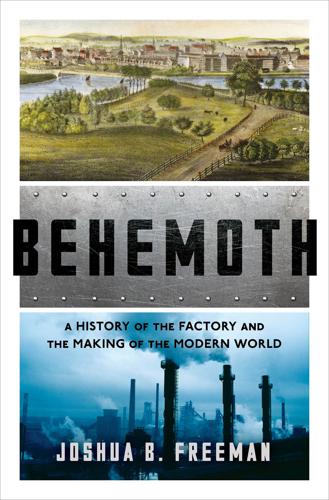
Behemoth: A History of the Factory and the Making of the Modern World
by
Joshua B. Freeman
Published 27 Feb 2018
As in China, ideological change accompanied the shift in practical policies, with the Communist Party speaking of the objective laws of the market with a certainty once reserved for the virtues of central planning. Membership in the World Trade Organization (WTO) in 2007 deepened Vietnam’s integration into global markets and further facilitated export manufacturing.18 In China, the new market-oriented policies rapidly transformed the Pearl River Delta region in Guangdong. The region was selected as one of the first special economic zones because of its relative isolation from the major population and power centers of the country and its proximity to Hong Kong and Macao, and that proved critical to its success. At the time, the economy of Hong Kong (still under British control) depended heavily on manufacturing, trade, and transportation.
…
Hong Kong businesses, in many cases with extensive experience in international trade, initially moved their simplest, most labor-intensive operations to the People’s Republic, taking advantage of far lower labor and land costs and the free reign they were given in managing labor relations. They kept their administrative, design, and marketing operations in Hong Kong and used the territory’s advanced infrastructure, including the world’s busiest container port and extensive airfreight capacity, for exporting Chinese-made goods. As the authors of a study of the Pearl River Delta put it, “Third World level costs are combined with First World caliber management, infrastructure, and market knowledge.”19 As the initial Hong Kong–based forays into manufacturing in China proved successful and the Chinese government further loosened regulations and spent heavily on infrastructure serving the special economic zones, more investment flowed in.
…
See, also, Cheng Tsu-yuan, Ashan Steel Factory in Communist China (Hong Kong: The Urban Research Institute, 1955). 12.Andors, China’s Industrial Revolution, 144–47, 158–59. 13.Andors, China’s Industrial Revolution, 135–42. 14.While there was a push during the Cultural Revolution for the despecialization of factories, there apparently was not an effort to despecialize the work of individual workers in the production process, even as they were given expanded roles in management and other aspects of factory function. Andors, China’s Industrial Revolution, 160–240. 15.Ngai, Migrant Labor, 11, 15. 16.Henry Yuhuai He, Dictionary of the Political Thought of the People’s Republic of China (London: Routledge, 2015), 287; Michael J. Enright, Edith E. Scott, and Ka-mun Chang, Regional Powerhouse: The Greater Pearl River Delta and the Rise of China (Singapore: John Wiley & Sons, 2005), 6, 36–38. 17.Pun Ngai, Made in China: Women Factory Workers in a Global Workplace (Durham, NC: Duke University Press, 2005), 1, 7. 18.Gabriel Kolko, Vietnam: Anatomy of a Peace (London: Routledge, 1997); The World Bank, “Vietnam, Overview,” Apr. 11, 2016, http://www.worldbank.org/en/country/vietnam/overview; Nguyen Thi Tue Anh, Luu Minh Duc, and Trinh Doc Chieu, “The Evolution of Vietnamese Industry,” Learning to Compete Working Paper No. 19, Brookings Institution (accessed Aug. 13, 2016), https://www.brookings.edu/wp-content/uploads/2016/07/L2C_WP19_Nguyen-Luu-and-Trinh-1.pdf. 19.Enright, Scott, and Chang, Regional Powerhouse, 6, 12, 16, 36, 38–39, 67–68, 74, 98, 101–02, 117. 20.Enright, Scott, and Chang, Regional Powerhouse, 75, 98, 108; Andrew Ross, Fast Boat to China: Corporate Flight and the Consequences of Free Trade—Lessons from Shanghai (New York: Pantheon, 2006), 24–26; Bloomberg Businessweek, Sept. 13, 2010. 21.Enright, Scott, and Chang, Regional Powerhouse, 47. 22.Ngai, Migrant Labor, 2, 20–21, 25, 32, 76–78. 23.The Guardian, July 31, 2014, https://www.theguardian.com/world/2014/jul/31/china-reform-hukou-migrant-workers; Ren, ed., China on Strike, 4-5; Ngai, Made in China, 36, 43–46. 24.For an interesting portrait of life in a state-owned factory during the 1980s, see Lijoa Zhang, “Socialism Is Great!”
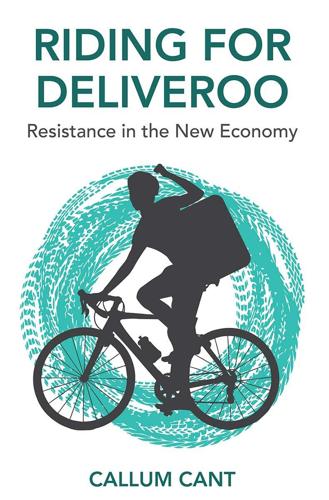
Riding for Deliveroo: Resistance in the New Economy
by
Callum Cant
Published 11 Nov 2019
Whereas Deliveroo is valued at $2 billion, Meituan is valued at $53 billion.8 Its workers make a colossal 13 million deliveries a day. They were also responsible for 11 per cent of total strike action in the service sector in China over the first half of 2017.9 The average Meituan courier is a middle-aged ex-factory-worker, ejected from the shrinking industrial sector of the Pearl River Delta and forced into the expanding urban surplus population which relies upon hyper-precarious gig work to survive.10 They rush across cities like Shenzen at dangerous speed to deliver food to the new white-collar tech workforce employed at companies like Tencent. These platform workers, often veterans of fights in their factory jobs, end up grappling with the familiar problems of work intensification, safety issues, and low wages in a new context.
…
The resulting strikes are often nationally coordinated across platforms, and sometimes result in violent confrontations with the police.11 Across the world, the expansion of food-platform work has led to the expansion of food-platform worker resistance. The fundamental dynamics we experienced in Brighton were the same as those experienced by workers in the Pearl River Delta. Invisible Organization Romano Alquati – an Italian workerist and sociologist – developed the concept of ‘invisible organization’ to suggest that the ‘spontaneous’ emergence of strikes at FIAT manufacturing plants near Turin in the 1960s were actually not very spontaneous at all. Instead, he proposed that the strikes were the result of a non-union form of self-organization which was invisible to external observers, including the union itself.12 The same concept applies almost exactly at Deliveroo.
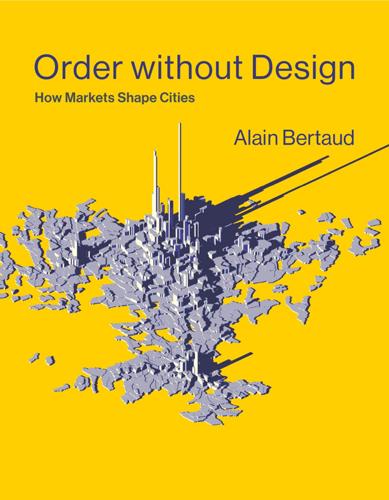
Order Without Design: How Markets Shape Cities
by
Alain Bertaud
Published 9 Nov 2018
The Spatial Structures of Large Metropolitan Areas Are Changing The spatial structures of cities are changing in most of the world. Large lower-density suburbs are developing around the traditional urban core and CBDs. In Asia, where urbanization is still low compared to the rest of the world (except Africa), we are seeing the emergence of large urban clusters like Delhi, Mumbai, Beijing-Tianjin, Shanghai-Suzhou, the Pearl River Delta, and Seoul-Incheon. These cities of more than 20 million people are evolving into much larger clusters with populations expected to exceed 30 million people by 2020. The spatial structures of these cities are demand driven and reflect the modernization of their economies, wherein large supply chains of services and manufacturing have different spatial requirements than the ones encountered in the traditional monocentric city of the past.
…
By contrast, where some of Silicon Valley conditions are met—a great university next to open land with flexible land use—similar creative activities may emerge. This has been the case in Beijing, for instance, in the area located between Peking University and Tsinghua University, and in some areas of the Pearl River Delta in southern China. However, the role played by nonvisionary but competent planners was indispensable to the success of Silicon Valley. Indeed, its success depended on the municipal management teams being able to adjust to changing demand for urban services and infrastructure that were required by the sudden transformation of an area, originally largely residential, to a new type of land use.
…
There are still many countries with very young populations who are ready to move from rural areas to urban areas, or to emigrate anywhere in the world toward the dynamic cities that would welcome them. From the beginning of the twenty-first century we will see a strong divergence between very dynamic megacities like the Pearl River Delta cities, for instance, and shrinking cities in Europe and some parts of the North American continent. Let us now look at the potential for dynamic cities. In 2014 the United Nations published a report titled “World Urbanization Prospects 2014.” I reproduce one of the major graphs from the report in figure 8.6.
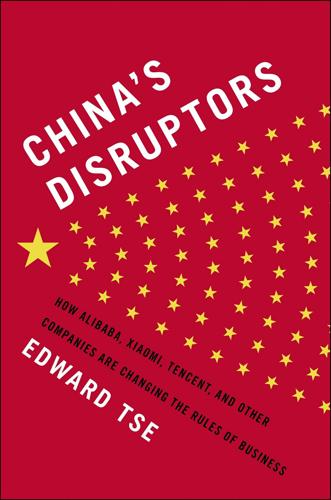
China's Disruptors: How Alibaba, Xiaomi, Tencent, and Other Companies Are Changing the Rules of Business
by
Edward Tse
Published 13 Jul 2015
Rather, it is a collection of multiple, fragmented customer segments. Though the country’s poorer inland and western regions have closed the gap on the coast in recent years, their richest cities still lag those of the eastern coast. Within any single province, wealth levels vary enormously. Even in the country’s richest regions, such as the Pearl River delta in south China, the Yangtze River delta centered on Shanghai, and the Beijing-Tianjin axis in north China, most household incomes remain those of an emerging economy, not those of a developed one. The net effect of all this fragmentation may be positive for companies seeking consumers: people recognize the benefits enjoyed by their wealthier neighbors, and want to join their ranks.
…
They set up operations to test the water, rotated expat managers in and out of the country, and periodically flew in their CEO to shake hands with officials. A lot of them went on to develop successful sourcing and export operations, tapping into the sourcing networks that rapidly built up around the Pearl River delta in Guangdong, the Yangtze river delta around Shanghai, and at several other locations. But when it came to selling into China’s markets, many struggled. Despite their global experience, financial strength, and technological advantages, many were surprised when strategies tested and tried in other parts of the world failed in China.
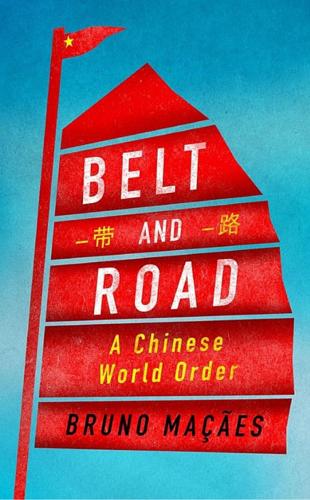
Belt and Road: A Chinese World Order
by
Bruno Maçães
Published 1 Feb 2019
I had flown to Malaysia from San Francisco, where I had met tech people who are thinking about how to build technologically optimized cities and realize the old dream of the founders of Google: “give us a city and put us in charge.” They seem to regard it as the natural next step for those who have already mastered building social networks on the internet. And so, the race is on—between two Bay Areas in San Francisco and the Pearl River Delta.1 * * * What will the world look like after the Belt and Road? In the first Belt and Road summit in 2017 Xi Jinping hailed it as the “project of the century.” If all goes according to plan, the Belt and Road will change the shape of the world economy and world politics, returning us to a time when China occupied, if not the center, at least a central place in global networks.
…
INDEX Abbasi, Zafar Mahmood, 126 Abe, Shinzo, 118, 137 Addis Ababa, Ethiopia, 68 Aden Gulf, 72 Adil, Umer, 60 Advancing the Development of the One Belt, One Road Leading Group, 39 aerospace, 88, 103 Afghanistan, 53, 107, 127, 128, 129, 135, 172 Africa, 3, 8, 25, 44, 124, 163 Djibouti, 4, 12, 46, 63, 67–8, 101, 117 Ethiopia, 46, 68, 154, 170, 186 manufacturing, 68, 77 Maritime Silk Road, 23, 26, 45, 62 oil, 64 Partnership for Quality Infrastructure, 138 piracy, 72 telecommunications, 101, 170–71 aging population, 75 Agricultural Bank of China, 48 agriculture, 11, 61, 76, 99–100, 103 Ahmedabad, Gujarat, 138 aircraft, 81, 91, 103 Akto, Xinjiang, 60 Aktogay, East Kazakhstan, 103 Alibaba, 44 Allison, Graham, 7–8 Alps, 189 aluminum, 17, 20, 88 Andalusia, Spain, 189 Andijan, Uzbekistan, 54 anti-dumping, 92, 113 Antwerp, Flanders, 65 Apollo program, 9 aquaculture, 71 Arabian Sea, 72, 106 Arctic, 4, 62, 66, 188 artificial intelligence (AI), 44, 75, 88 Arunachal Pradesh, India, 111 Asian Development Bank, 45, 137 Asian Financial Forum, 49 Asian Infrastructure Investment Bank, 48 Association of Southeast Asian Nations (ASEAN), 122 Astana International Exchange, 56 Astana, Kazakhstan, 25–6, 39, 56, 58 asteroids, 187 Athens, 8 Atlantic Ocean, 3, 115, 119, 138, 139 Atushi, Xinjiang, 60 Australia, 5, 12, 25, 119, 121, 122, 132–3, 135 automated vehicles, 88, 90, 186, 187, 190 automobile industry, 74, 81, 86, 90–91, 97, 104 Autor, David, 177 aviation, 81, 91, 103 Azad Jammu and Kashmir (AJK), 60 Azerbaijan, 186 Badakhshan, Afghanistan, 128 Baidu, 188 Baldwin, Richard, 74, 80 Balkans, 8, 12, 140 Balochistan, Pakistan, 60, 105 Gwadar port, 46, 59, 61–2, 63, 64, 99–100, 101, 105–7, 117 separatism and terrorism, 106, 127, 128 Baltic Sea, 51 Bangkok, Thailand, 65, 136–7 Bangladesh, 48, 53, 64, 109, 134, 136, 138, 150, 189 Bangladesh-China-India-Myanmar Economic Corridor (BCIM-EC), 52, 62 Bank of China, 48 banking, 46–51 bargaining theory, 152–3 Bay of Bengal, 22, 64, 72, 119 Beijing, China, 20, 28, 48, 126, 165 Beijing University, 183, 188 Belgium, 56, 65 Belgrade, Serbia, 143 Belt, see Silk Road Economic Belt Belt and Road Advancing the Development of the One Belt, One Road Leading Group, 39 backlash against, 12, 108, 121–4, 130–46, 155 bridges, 40, 54, 156, 173, 186 Buddhism, 112 cities, 11, 43, 44, 48, 149–52, 187–8 ‘community of shared destiny’, 26–9, 33, 36, 43, 45, 170 connectivity (wu tong), 42, 43, 52–3, 127, 158, 167 currency integration, 26 data, 44 debt, 12, 46, 47, 108, 109, 124, 126, 130, 132, 153–62 digital infrastructure, 43–4, 59, 86 e-commerce, 44, 59 economic corridors, 2, 11, 51–4, 55, 62 economic policy coordination, 28 energy, 11, 17, 19, 20–23, 40, 46, 48, 49, 52, 61, 64, 86, 92, 188 financing, 11, 36, 46–51, 54, 108–9, 124, 126, 130, 132, 138, 141, 153–64 Forum for International Cooperation (2017), 12, 108, 143, 152 impatience, 152–3 inauguration (2013), 11, 17, 23 industrial capacity cooperation, 85–8 industrial parks, 10, 43, 55, 61, 67, 99, 102 infrastructure, see infrastructure internal discontent, 163 international court, 28, 190 loans, 11, 36, 46–7, 54, 108–9, 124, 126, 130, 132, 138, 141, 153–62, 163 maps, 2–6, 24, 41, 64, 69 Maritime Silk Road, 24, 26, 28, 39, 41 market integration, 41 military bases, 12, 67, 71, 72, 101, 117, 126–7 overcapacity, 19 ports, see ports railways, 9–10, 11, 12, 18, 43, 46, 52, 53–4, 68, 86, 122, 130 roads, 9, 19, 40, 43, 52, 54 security, 127–9 Silk Road, 2, 9–10, 23–6, 45, 82, 138 Silk Road Economic Belt, 24, 25–6, 28, 39, 51–62, 83 success, definition of, 164, 174 telecommunications, 43–4, 52, 86, 101, 170–71 timeline, 10 TIR Convention, 55 transnational industrial policy, 81, 84 transport infrastructure, 9–10, 11, 18, 19, 25, 26, 40, 48, 49, 53–4, 83 urban development, 11, 43, 44, 48, 149–52 Vision and Actions document (2015), 40, 41, 45, 49, 50, 52, 62, 67, 78 Vision for Maritime Cooperation (2017), 62 Bering Strait, 66 Bharatiya Janata Party (BJP), 110 Bhat, Vinayak, 107 Bhutan, 107–8 big data, 44 Bishkek, Kyrgyzstan, 127 Blackwater, 128 blue economic passage, 62 Boao Forum for Asia (2015), 27, 32 Brahmaputra river, 136 Brazil, 174 Brewster, David, 63 BRIC (Brazil, Russia, India and China), 19, 174 bridges, 40, 54, 156, 173, 186 British Broadcasting Corporation (BBC), 188 Budapest, Hungary, 143 Buddhism, 111–12 Bush, George Walker, 169 California, United States, 64 Cambodia, 52, 54, 70, 129, 132, 155 Cameroon, 68, 187 Canada, 136 car industry, see automobile industry Caribbean, 25 Carr, Robert ‘Bob’, 122 Cartagena, Spain, 92 Caspian Sea, 186 Caucasus, 20, 129 CDMA (code-division multiple access), 89 cement, 17, 49–50, 83 Center for Strategic and International Studies, 19, 123 center of gravity, 115 Central African Republic, 186 Central Asia, 9, 20, 25, 51, 52, 82–3, 188 energy, 22, 106 Eurasian Economic Union (EEU), 57–9 India, trade with, 107 industrial capacity cooperation, 104 Islamism, 127 Russia, relations with, 57–9, 129, 133 steel industry, 82–3 terrorism, 127 textile industry, 101 transport infrastructure, 9, 54 Central Huijin Investment, 49, 50 Central Military Commission, 166 century of humiliation (1839–1949), 165, 186 Chabahar, Sistan-Baluchistan, 106–7 Chalay Thay Saath, 60 Chao Phraya River, 65 ChemChina, 48 Chengdu Economic Daily, 129 China Abbasi’s visit (2018), 126 Academy of Information and Communications Technology, 44 aging population, 75 Banking and Insurance Regulatory Commission, 50 Bishkek Embassy bombing (2016), 127 Boao Forum for Asia (2015), 27, 32 Buddhism, 111–12 century of humiliation (1839–1949), 165, 186 Doklam plateau dispute, 107–8, 113 energy, see energy EU-China summit (2015), 138 five-year plan (2016–20), 41 Food and Drug Administration, 114 Foreign Policy Center of the Central Party School, 7 Gants Mod crossing closure (2016), 36 General Navigation Office, 69 ‘Going Out’ strategy, 86 Guangxi Nonferrous Metals Group bankruptcy (2016), 16 Guiding Opinion on Promoting International Industrial Capacity (2015), 86 Guiding Opinion on Standardizing the Direction of Overseas Investment (2017), 86 incremental approach, 7 Indian Dilemma, 21 Institute of International Studies, 92 International Trust and Investment Corporation, 132 Investment Corporation, 48 keeping a low profile (tao guang yang hui), 15, 18, 32 labour shortages, 75 Macron’s visit (2018), 146–7 Made in China 2025 strategy, 85, 87, 90–92, 93 Malacca Dilemma, 21–2, 64, 131 Merchants, 68–9 middle-income trap, 75–7, 85 migrant workers, 75 military, 12, 13, 59, 67, 71, 72, 101, 117, 126–7 minimum wage, 75 Ministry of Commerce, 21, 40, 93 Ministry of Communications, 69 Ministry of Finance, 49 Ministry of Foreign Affairs, 40 Ministry of Industry and Information Technology, 19 Ministry of Transportation, 14 Modi–Xi summit (2018), 135 National Bureau of Statistics, 75 National Congress, 28, 29, 44, 165, 181 National Cybersecurity Work Conference (2018), 84 National Development and Reform Commission, 40, 98 National Health Commission, 114 Opium War, First (1839–1842), 165 overcapacity, 16, 19–20, 88 Overseas Chinese Affairs Office, 19 Overseas Investment Industrial Guiding Policy, 86 People’s Navigation Company, 69 Ports-Park-City model, 67 presidential term limits repeal (2018), 164, 174 real estate market, 16, 75 reform and opening up, 13–15, 73 renminbi, 22–3, 159 responsible stakeholder, 169 shipbuilding, 14, 17 soft power, 111, 170 Soviet Union, relations with, 13, 14, 15 State Administration of Foreign Exchange, 48 State Council, 19, 39, 40, 49, 66, 86 state-owned companies, 42, 153, 160–61, 189 steel industry, 16–17, 18, 20, 82–4, 86, 88 striving for achievement, 18 Swaraj’s visit (2018), 135 Taiwan, relations with, 14, 26, 142 technology transfers, 85–92, 97, 177–8 Thucydides’ trap, 8 Tianxia, 26–7, 29, 31–5, 78, 79, 192–3 TIR Convention, 55 Trump’s visit (2017), 124 ‘two heads abroad’ (liangtou zai haiwai), 17 United States, relations with, see Sino–US relations Working Conference on Neighborhood Policy (2013), 17–18 China Construction Bank, 48 China Development Bank, 16, 48, 49, 97, 98, 99, 103, 160 China Export & Credit Insurance Corp, 104 China Export-Import Bank, 46, 47, 48, 49, 103, 154 China Fantasy, The (Mann), 177 China Global Television Network, 188 China Nonferrous Metals Industry Group, 103 China Three Gorges Corp, 48 China-Indian Ocean-Africa-Mediterranean Sea Blue Economic Passage, 62 China-Indochina Peninsula Economic Corridor, 51, 52, 54, 62 China-Oceania-South Pacific, 62 China-Pakistan Economic Corridor (CPEC), 52, 59, 60, 62, 105–7, 108 Chinese Communist Party Advancing the Development of the One Belt, One Road Leading Group, 39 and Australia, 133 Constitution, 41, 164 founding of (1921), 165 National Congress, 18th (2012), 28 National Congress, 19th (2017), 29, 44, 165, 181 and New Zealand, 132 Politburo, 39, 40, 165 reform and opening up, 13–15 and steel industry, 16 Third Plenum of the 18th Party Central Committee (2013), 39 Chongyang Institute for Financial Studies, 106 Christianity, 128 Churchill, Winston, 183 cities, 11, 43, 44, 48, 149–52, 187–8 climate change, 4, 66, 85, 171 Clinton, William ‘Bill’, 177 cloud computing, 44 CloudWalk Technology, 44 Club Med, 189 CNN, 188 cobalt, 81, 104 Cold War, 2, 14, 21–2, 36, 40, 125, 171 Colombo, Sri Lanka, 156, 162 colonialism, 120, 162 ‘community of shared destiny’, 26–9, 33, 36, 43, 45, 135, 170 Confucianism, 31, 34 Congo, Democratic Republic of, 81, 104 connectivity, 42, 43, 52–3, 109, 122, 127, 146, 158, 167 Connectivity Platform, 139 construction, 18, 75, 86, 98 convergence, 4, 14, 166, 167, 169, 174, 177 copper, 103, 104 corridors, see economic corridors corruption, 133, 155–6, 158, 187 cosmopolitan neighborhoods, 4 Country Garden, 151 Cowboys and Indians, 188 cultural exchanges, 42, 43, 56–7 currency, 22–3, 26, 159–60 customs cooperation, 55, 57, 59, 63 Cyprus, 140 Dalai Lama, 36, 112 Dalian, Liaoning, 55, 93 Daming Palace, Xi’an, 147 Dangal, 111 data, 44 Davidson, Phillip, 125–6 Davos, Switzerland, 168 Dawn of Eurasia, The (Maçães), 185, 191 Dawood, Abdul Razak, 158 debt, 12, 16, 46, 47, 108, 109, 124, 126, 130, 132, 153–62 democracy, 125, 133, 166, 171, 172, 174, 175, 176, 181–3 Democratic Republic of Congo, 81, 104 Deng Xiaoping, 13–15, 18, 31, 32, 69, 73, 183 Diaoyu Islands, 187 digital infrastructure, 43–4 division of labor, 53, 78, 79, 80 Djibouti, 4, 12, 46, 63, 67–8, 101, 117, 186 Doklam plateau, 107–8, 113 Doraleh, Djibouti, 63, 67–8 DP World, 68 dry ports, 57 Dubai, UAE, 62, 68, 160 Dudher Zinc project, 127 Duterte, Rodrigo, 156 DVD (digital versatile disc), 89 e-commerce, 44, 59 East China Sea, 118 economic corridors, 2, 11, 51–4, 55 economic nationalism, 102 economic policy coordination, 28 Economist, The, 190 Egypt, 101 electric cars, 81, 104 electricity, 40, 46, 49, 52, 61, 98, 156, 188 end of history, 36 energy, 4, 11, 17, 19, 20–23, 48, 49, 82, 86, 92, 188 electricity, 40, 46, 49, 52, 61, 98, 156, 188 gas, 21, 22, 40, 52, 64, 72, 106 hydropower, 48 oil, 21, 22, 23, 40, 52, 64, 72, 106 renewable, 21, 187, 188 English language, 111, 188 Enhanced Mobile Broadband coding scheme, 89 Enlightenment, 193 environmental sustainability, 75 Erenhot, Inner Mongolia, 55 Ethiopia, 46, 68, 154, 170, 186 Eurasia, 1–5, 11, 20, 26, 45, 52, 57, 63, 120, 121, 138 Eurasian Economic Union (EEU), 57–9 Eurasian Resources Group, 103 European Commission, 143, 145 European empires, 120–21 European Union (EU), 5, 29, 57, 58, 138–47, 159, 176, 179 and Belt and Road, 10, 12, 30, 138–47 Connecting Europe and Asia strategy (2018), 145–6 and Djibouti, 67 economic policy coordination, 28 5G mobile networks, 43 immigration, 187 steel industry, 17 tariffs, 83 technology transfers, 87–8, 178 transnational framework, 81 Turkey, relations with, 4 Export-Import Bank of China, 46, 47, 48, 49, 103, 154 exports, 15, 17, 19, 79 Facebook, 188 facial recognition, 44, 190 fashion industry, 101 fate, 34 Fergana Valley, 54 fertilizers, 19 fibre-optic connectivity, 101 fifth generation (5G) mobile networks, 43–4, 89 finance, 11, 36, 46–51, 54, 126, 138, 141, 153–64 Financial Times, 10, 63, 143, 154, 157, 158, 159 five-year plan (2016–20), 41 Folding Beijing (Hao), 150 food imports, 76 foreign direct investment, 46, 144–6 foreign exchange, 16, 94, 153 Forest City, Johor, 149–51, 155 France, 11, 96, 129, 141, 144, 146–7, 189 free and open order, 125 free-trade zones, 11, 42, 55–6, 71 freedoms of speech, 172, 189 French Foreign Legion, 129 French, Howard, 13 Frontier Services Group, 128–9 Fu Chen, 129 Fu Ying, 140 Fukuyama, Francis, 184–5 Gabon, 96 Gabriel, Sigmar, 142 Gang of Four, 14 Gants Mod crossing closure (2016), 36 gas, 21, 22, 40, 52, 64, 72, 106 General Navigation Office, 69 generic drugs, 114 Genghis Khan, 2, 25 Georgia, 58 Germany, 11, 65, 80, 87–8, 90, 100, 141–2, 144, 189 ghost ships, 186 Gibraltar, 92 Gilgit-Baltistan, Pakistan, 54, 60, 108 Gland Pharma, 113 glass, 17, 83 Global Energy Interconnection, 188 global financial crisis (2008), 16–17, 85, 161, 178 Global Infrastructure Center, 190 Global Times, 67, 109, 131 global value chain revolution, 74 global warming, 4, 66, 85 globalization, 19, 28, 66, 78, 102, 124, 144, 168, 174, 192 ‘Going Out’ strategy, 86 good governance, 183–4 Google, 152, 188 Goubet, Djibouti, 67 government procurement, 12, 59 Grand Palace, Bangkok, 65 Grand Trunk Road, 53 Greece, 30, 31, 65, 140, 141, 142 GSM (Global System for Mobile communications), 89 Guangdong, China, 28, 75, 151 Guangxi Beibu Gulf International Port Group, 67 Guangxi Nonferrous Metals Group, 16 Guiding Opinion on Promoting International Industrial Capacity (2015), 86 Guiding Opinion on Standardizing the Direction of Overseas Investment (2017), 86 Guo Chu, 33 Gwadar, Balochistan, 46, 59, 61–2, 63, 64, 99–100, 101, 105–7, 117 Hainan, China, 71 Hambantota, Sri Lanka, 46–7, 63, 64, 68, 117, 162 Hamburg, Germany, 65 Hamilton, Clive, 133 Han Empire (206 BC–220 AD), 25 Hao Jingfang, 150 ‘harmonious world’, 33, 36 Havelian, Khyber Pakhtunkhwa, 54 He Yafei, 19, 168 heavy industry, 75, 82 Hebei, China, 83 Heilongjiang, China, 55 Hesteel, 83 high-speed railways, 18, 53–4, 83, 89, 98, 122, 130, 137, 138, 143, 186–7 highways, see roads Hillman, Jonathan, 8 Hobbes, Thomas, 27 Holslag, Jonathan, 189 Hong Kong, 49, 103 Hongshi Holding Group, 49 Horgos, Xinjiang, 55, 55–6, 57 Horn of Africa, 3 Hu Huaibang, 49, 97 Hu Jintao, 21, 33, 70 Hu Xiaolian, 154 Huang Libin, 19 Huangyan Island, 187 Huawei, 89–90, 101, 171 Hub, Balochistan, 127 hukou (household registration), 76 human rights, 141–2, 170, 171, 189 Hun Sen, 155 Hungary, 30, 140, 141, 142, 143, 144 Huntington, Samuel, 184 Hussain, Chaudhry Fawad, 157 hydropower, 48 Ibrahim Ismail, Sultan of Johor, 151 immigration, 187 impatience, 152–3 imports, 17, 19, 22, 79–84 India and the Indian Ocean (Panikkar), 118 India, 3, 5, 64, 105–25, 134–6, 174, 179 Bangladesh Liberation War (1971), 109 and Belt and Road, 11, 12, 52, 72, 105–15, 130, 133 Belt and Road Forum for International Cooperation (2017), 12, 108 British Raj (1858–1947), 107 Buddhism, 111–12 cosmopolitan neighborhoods, 4 cultural mission to China (1952), 113 Doklam plateau dispute, 107–8, 113 economic autarchy, 110, 117 free and open order, 125 Grand Trunk Road, 53 imports, 113–14 and Indian Ocean, 3, 116–19 Indo-Pacific, 116–23, 125 Japan, relations with, 118 Kashmir dispute, 108–9, 117 Malabar naval exercises (2018), 135 and maritime hegemony, 72 migrant workers, 150 military bases, 3, 131 Modi–Xi summit (2018), 135 Mumbai-Ahmedabad high-speed railway, 138 nuclear tests (1998), 109 Pakistan, relations with, 105–7, 108–9, 117, 134 pharmaceuticals, 113, 114 Quadrilateral Security Dialogue, 121–2 Research and Analysis Wing (R&AW), 105–6 and Sabang Island, 131 Siliguri Corridor, 107–8 Southeast Asia, 113, 117–18 Swaraj’s visit to China (2018), 135 Tibet, relations with, 111–12, 117, 136 United States, relations with, 119, 121–2, 134, 135 Indian Dilemma, 21 Indian Ocean, 3, 8, 9, 26, 51, 62, 63, 66, 68, 71–2, 116–19 Indo-Pacific, 116–23, 125, 126 and Japan, 4 Kra Isthmus canal proposal, 65, 186 meticulous selection, 72 Myanmar oil and gas pipeline, 64, 72 oil, 21, 64 and Pakistan, 59, 61, 64 individualism, 27, 189 Indo-Pacific, 116–23, 125, 126 Indo-Pacific Business Forum, 122 Indo-Pacific Command, US, 126 Indochina, 51, 52, 54, 62 Indonesia, 2, 5, 18, 26, 39, 48, 83, 117, 131 Industrial and Commercial Bank of China, 48, 49, 103 industrial capacity cooperation, 85–8, 98, 102–4 industrial internet, 44 industrial parks, 10, 43, 55, 61, 67, 99, 102 Industrial Revolution, 84 information technology, 43–4, 74, 81, 86, 90, 94, 111, 170–71, 190 infrastructure, 3, 23, 26, 30, 40–45, 48, 50, 55, 58, 63, 86, 88, 124, 139, 141, 162, 167, 186 Afghanistan, 135 communications, 81, 118 digital, 43–4 European Union, 10, 141, 145 India, 64, 118, 135 Japan, 4, 136–8 Maritime Silk Road, 66, 67 Mediterranean, 65 Pakistan, 54, 62, 99, 105 Quadrilateral Security Dialogue, 121–2 Southeast Asia, 18–19, 70, 117, 130, 132 steel industry, 18 transportation, see transportation value chains, 96 Xinjiang, 20, 54 Inner Mongolia, China, 55 innovation, 76 Institute for International Finance, 153 intellectual property, 59, 88–9, 91, 97, 180, 190 international courts, 28, 190 international industrial capacity cooperation, 85–8, 98, 102–4 International Monetary Fund (IMF), 15, 156–7, 158–9, 172 Internet, 43–4, 86, 170–71 internet of things, 90, 94 Iran, 4, 22, 105–6 Iraq, 24 Irkeshtam, Xinjiang, 55 iron, 17 Islamabad, Pakistan, 60, 99, 101, 127, 157 Islamic State, 128 Islamism, 127–9 Istanbul, Turkey, 4, 24, 65 Italy, 48, 65, 140, 189 Izumi, Hiroto, 137 Jadhav, Kulbhushan, 105–6 Jakarta, Indonesia, 2, 5, 26, 39 Japan, 1, 5, 22, 123, 133, 136–8, 145, 165, 166, 169, 189 Buddhism, 111 Cold War, 21–2 India, relations with, 118 Indian Ocean, 4 infrastructure development, 4, 136–8 Quadrilateral Security Dialogue, 121–2 Second World War (1937–45), 119, 165 Javaid, Nadeem, 46 Jiang Qing, 14 Jiang Shigong, 183–4 Jiang Zemin, 15 Jiangsu Delong, 83 Jin Qi, 98 Jinnah Town, Quetta, 128 Johor, Malaysia, 149–51 Joint Statement on Cooperation on EEU and Silk Road Projects (2015), 57–8 joint ventures, 97 Journey to the West, 186, 188 Juncker, Jean-Claude, 138 Kaeser, Joe 170 Karachi, Sindh, 59, 100, 105, 106, 127 Karakoram Highway, 54, 60, 64 Kashgar, Xinjiang, 54, 59, 60, 64, 101 Kashmir, 60, 108–9, 117 Katanga, Democratic Republic of Congo, 104 Kaz Minerals 103 Kazakhstan, 8, 55–9, 129, 189 Astana International Exchange, 56 China–EEU free-trade agreement signing (2018), 58 and Eurasian Economic Union, 57 gateway to Europe, 56 Horgos International Cooperation Center, 55–6 industrial capacity cooperation, 103–4 railways, 54 Xi’s speech (2013), 23, 25–6, 39 Kazakhstan Aluminum, 103 keeping a low profile (tao guang yang hui), 15, 18, 32 Kenya, 101, 138, 171 Khan, Imran, 157–8 Khawar, Hasaan, 53 Khunjerab Pass, 101 Khyber Pakhtunkhwa, Pakistan, 54, 60, 100 Kizilsu Kirghiz, Xinjiang, 60 knowledge, 74, 76, 87 Kolkata, West Bengal, 64 Kortunov, Andrey, 135 kowtow, 35 Kra Isthmus, Thailand, 65, 186 Kuala Linggi Port, Malacca, 63 Kuala Lumpur, Malaysia, 130 Kuantan, Pahang, 63, 67 Kudaibergen, Dimash, 57 Kunming, Yunnan, 188 Kyaukpyu, Rakhine, 63, 64, 132, 154 Kyrgyzstan, 53, 54, 55, 103, 127 labor costs, 74, 83, 85, 99 labor shortages, 75 Lagarde, Christine, 158–9 Lahore, Punjab, 100, 157 Laos, 50, 52, 54, 129, 132 Latin America, 25, 187, 188 Leifeld Metal Spinning AG, 88 Lenin, Vladimir, 6, 78 Lenovo, 89–90 Li Hongzhang, 69 Li Keqiang, 44 Li Ruogu, 47 Liaoning, China, 55 liberal values, 123, 125, 133, 170 liberal world order, 141, 144, 167–86, 190, 192 Lighthizer, Robert, 91 lignite, 61 liquefied natural gas (LNG), 48, 66 Lisbon, Portugal, 2, 5 lithium-ion batteries, 81 Liu Chuanzhi, 89–90 Liu He, 92 loans, 11, 36, 46–7, 54, 108–9, 124, 126, 130, 132, 138, 141, 153–63, 190 London, England, 65, 160 Lord of the Rings, The (Tolkien), 1 Lou Jiwei, 76 Luo Jianbo, 7 Machiavelli, Niccolò, 31–4 machinery, 81, 90, 98, 156 Mackinder, Halford, 120 Macron, Emmanuel, 146–7 Made in China 2025 strategy, 85, 87, 90–92, 93 Mahan, Alfred, 120 Mahathir Mohamad, 130–31, 151, 155 Malabar naval exercises (2018), 135 Malacca, Malaysia, 3, 63 Malacca Strait, 21–2, 64, 65, 72, 117, 131 Malay Mail, 155 Malaysia, 3, 70, 117, 130–31, 154 debt, 154 Forest City, 149–51, 155 high-speed railways, 54, 130 Mahathir government (2018–), 130–31, 151, 155 1Malaysia Development Berhad scandal (2015–), 155 ports, 63, 67 Maldives, 134, 155 Mali, 129 Malik, Ashok, 109 Malta, 140 Mandarin, 107, 149, 188 Manila, Philippines, 122 Mann, James, 177 manufacturing, 11, 19, 68, 77, 85, 99 outsourcing, 68, 99 value chains, 3, 43, 64, 73–4, 79–82, 84–5, 94–104, 141 Manzhouli, Inner Mongolia, 55 Mao Zedong, 13–14, 31, 183 maps, 2–6, 24, 41, 64, 69 Maritime Silk Road, 24, 26, 28, 39, 41, 53, 62–72, 117 market integration, 41 Mars, 187 Marshall Plan, 40 Marx, Karl, 6 Marxism, 78 Massachusetts Institute of Technology (MIT), 177 Matarbari port, Bangladesh, 138 matchmaking services, 11 Mattis, James, 124 McMahon Line, 111 Mediterranean Sea, 4, 51, 62, 65, 119 Mei Xinyu, 21 Mekong Delta, 8 mergers and acquisitions, 42 Merkel, Angela, 88, 141, 144 meticulous selection, 72 Middle East, 4, 6, 22, 64, 120, 129, 163, 171 middle-income trap, 75–7, 85 migrant workers, 75 Milanovic, Branko, 173 military, 3, 12, 67, 71, 72, 101, 117, 126–7 Ming Empire (1368–1644), 163 Ming Hao, 30 minimum wage, 75 Ministry of Commerce, 21, 40, 93 Ministry of Communications, 69 Ministry of Finance, 49 Ministry of Foreign Affairs, 40 Ministry of Industry and Information Technology, 19 Ministry of Transportation, 14 Minmetals International Trust Co, 16 mobile payments, 193 Modi, Narendra, 106, 135–6 Mohan, Raja, 3, 121 Mombasa, Kenya, 138 Mongol Empire (1206–1368), 2, 25 Mongolia, 8, 36, 52, 55, 111 Moon, 187 Moraes, Frank, 112–13 Moscow, Russia, 4 Most Favored Nation status, 15 Mozambique, 138 multinationals, 74, 88–9 multipolar world system, 179 Mumbai, Maharashtra, 4, 105, 138 Myanmar, 52, 54, 63, 64, 72, 129, 132, 138, 154 Nacala, Nampula, 138 narcotics trade, 127 Nathan, Andrew, 159 National Aeronautics and Space Administration (NASA), 9 National Bureau of Statistics, 75 National Congress 18th (2012), 28 19th (2017), 29 National Cybersecurity Work Conference (2018), 84 National Development and Reform Commission, 40, 98 National Health Commission, 114 National League for Democracy, Myanmar, 132 National Museum of China, Beijing, 165, 166 National Party of New Zealand, 132 National People’s Congress, 44 National Rescue Party of Cambodia, 155 Nazarbayev University, 25–6 Nehru, Jawaharlal, 113 Nepal, 134, 135, 150 Netherlands, 56, 65 New Zealand, 132–3 Nigeria, 68 Ning Jizhe, 137 Nordin, Astrid, 42 Northern Sea Route, 66 Northwest Passage, 66 NPK fertilizer, 99 nuclear power/weapons, 21, 83, 88, 109, 166, 187 oil, 21, 22, 23, 40, 52, 64, 72, 106 1Malaysia Development Berhad scandal (2015–), 155 One China policy, 142 Open Times, 183 Opium War, First (1839–1842), 165 Organisation for Economic Co-operation and Development (OECD), 79 Osh, Kyrgyzstan, 54 overcapacity, 16, 19–20, 88 Overseas Chinese Affairs Office, 19 Overseas Investment Industrial Guiding Policy, 86 Pacific Command, US, 125–6 Pacific Journal, 71 Pacific Ocean, 3, 5, 9, 26, 45, 62, 116, 117, 125–6, 139 Indo-Pacific, 116–23, 125, 126 Pakistan, 12, 20, 46, 48, 52, 59–62, 64, 98–102, 105, 126–9, 133–4, 155, 156–8 Abbasi’s Beijing visit (2018), 126 agriculture, 99–100 balance of payments crisis, 156–8 Economic Corridor, 52, 59, 60, 62, 105, 108, 156–8 electricity production, 61 fibre-optic connectivity, 101 gateway to the Indian Ocean, 59 Grand Trunk Road, 53 Gwadar port, 46, 59, 61–2, 63, 64, 99–100, 101, 105–7, 117 hydropower, 48 IMF loans, 156–7 India, relations with, 105–7, 108–9, 117, 134 investment, 48 Jadhav arrest (2016), 105–6 Karakoram Highway, 54, 60, 64 Kashmir dispute, 108–9 loans, 46, 54, 156–8 manufacturing, 99 safe city project, 101 Tehreek-e-Insaf, 157–8 television, 101 terrorism, 106, 127–8, 135 textiles, 100 Thar desert, 61 value chains, 98–102 Pakistan-East Africa Cable Express, 101 Pandjaitan, Luhut, 131 Panikkar, Kavalam Madhava, 118 Pantucci, Raffaello, 134 Partnership for Quality Infrastructure, 137–8 patents, 88–9, 190 Pavlodar, Kazakhstan, 103 Peak Pegasus, 93 Pearl River Delta, China, 152 Peking University, 183, 188 Penang, Malaysia, 63 People’s Daily, 57 People’s Liberation Army (PLA), 32, 169 People’s Navigation Company, 69 Pericles, 8 Persian Gulf, 51, 64, 72 Peshawar, Khyber Pakhtunkhwa, 100 petcoke, 103 Petrochina, 103 pharmaceuticals, 113, 114 Phaya Thai Station, Bangkok, 137 Philippines, 19, 70, 117, 122, 156 philosophy, 40, 183 Phnom Penh, Cambodia, 70 phosphate, 19 piracy, 72 Piraeus, Greece, 65 Pirelli, 48 Plato, 150 Poland, 58, 140 Polar Silk Road, 66 Politburo, 39, 40, 165 political correctness, 182 Polo, Marco, 2, 10 Polonnaruwa, Sri Lanka, 156 Pompeo, Michael, 122–3, 157 ports, 9, 10, 12, 19, 36, 40, 46–7, 57, 63–5, 67–9, 96 Chabahar, Iran, 106–7 Doraleh, Djibouti, 63, 67–8 Gwadar, Pakistan, 46, 59, 61–2, 63, 64, 99–100, 101, 117 Hambantota, Sri Lanka, 46–7, 63, 64, 68, 117, 162 Kuala Linggi, Malaysia, 63 Kuantan, Malaysia, 63, 67 Kyaukpyu, Myanmar, 63, 64, 132, 154 Mediterranean, 65 Mombasa, Kenya, 138 Nacala, Mozambique, 138 Penang, Malaysia, 63 Ports-Park-City model, 67 Portugal, 2, 3, 5, 140, 163 power, see energy Prince, Erik, 128–9 property bubbles, 75 protectionism, 102, 114 public procurement, 12, 59 Punjab, Pakistan, 60, 99, 100, 157 Putin, Vladimir, 3, 57 Pyrenees, 189 Qing Empire (1636–1912), 107, 178 Quadrilateral Security Dialogue, 121–2 Qualcomm, 89 Quetta, Balochistan, 128 Raikot, Gilgit-Baltistan, 54 railways, 9–10, 11, 12, 18, 43, 52, 53–4, 57, 68, 83, 86, 89, 98, 100, 135 Addis Ababa–Djibouti, 46, 68 Bangkok–Chiang Mai, 137 Belgrade–Budapest, 143 Djibouti–Yaoundé, 68, 186–7 Islamabad–Gwadar, 60 Kashgar–Andijan, 54 Kuala Lumpur–Singapore, 130 Lahore overhead, 157 Mumbai–Ahmedabad, 138 United States, 122 Yunnan–Southeast Asia, 54 Rawat, Bipin, 108 RB Eden, 92 real estate market, 16, 75 reciprocity, 178–80 Red Sea, 72 reform and opening up, 13–15, 73 Ren Zhengfei, 90 Renaissance, 7 renewable energy, 21, 187, 188 Renmin University, 106 renminbi, 22–3, 159 Rennie, David, 190 Republic (Plato), 150 Research and Analysis Wing (R&AW), 105–6 responsible stakeholder, 169 Rio Tinto, 36 Road Towards Renewal exhibition (2012), 165 Road, see Maritime Silk Road roads, 9, 19, 40, 43, 52, 54, 55, 57, 67, 107–8 robotics, 75, 88, 90 Rogin, Josh, 122 Rolland, Nadège, 188, 190 Ross, Wilbur, 92 Rotterdam, South Holland, 65 Ruan Zongze, 92 rule of law, 28, 109, 111, 183–4 Russia, 5, 51, 52, 55, 133, 134, 139, 174, 175–6, 180, 181 and Central Asia, 57–9, 129, 133 energy, 22, 23 Eurasian Economic Union, 57–9 Eurasianism, 3–4 Joint Statement on Cooperation on EEU and Silk Road Projects (2015), 57–8 Pacific Fleet, 118 and renminbi internationalization, 23 Soviet era, see under Soviet Union steel industry, 82 Ukraine crisis (2013–), 176 Western values, rejection of, 175, 180, 181 Yamal LNG project, 48, 66 Sabang, Indonesia, 131 safe cities, 101, 171 salt, 67, 71 San Francisco, California, 151–2 Saravan, Sistan-Baluchistan, 105 Sargsyan, Tigran, 59 Sassanian Empire (224–651), 4 satellites, 187 second unbundling, 74 Second World War (1939–45), 165 self-driving vehicles, 88, 90, 186, 187, 190 Serbia, 83, 143 Set Aung, U, 132 Shandong University, 163 Shanghai, China, 2, 20, 92 Shanghai Cooperation Organization, 136 Shanghai Fosun Pharmaceutical, 113 Shanghai Pudong Development Bank, 16 Shanghai Stock Exchange, 50, 56, 103 Sharif, Nawaz, 133–4 sharp power, 170 sheet glass, 17, 83 Shenwan Hongyuan Securities, 16 Shenzhen, Guangdong, 28, 151 shipbuilding, 14, 17, 81, 186 Sichuan, China, 149 Siemens, 170 silicon dioxide, 103 Siliguri Corridor, India, 107–8 Silk Road, 2, 9–10, 23–6, 45, 53, 82, 138 Silk Road Economic Belt, 24, 25–6, 28, 39, 51–62, 83 Silk Road Fund, 48, 56, 98 silk, 23–4 Sindh, Pakistan, 59, 60, 99, 100, 101, 105, 106, 127 Singapore, 54, 77, 92, 119, 130, 150, 151, 160 Sino–Myanmar oil and gas pipeline, 64, 72 Sino–US relations, 116, 119, 121–6, 136, 179–80 and Belt and Road, 5–6, 11, 12, 15, 72, 121–4, 130, 136, 168 and Cold War, 14 and foreign exchange reserves, 16 and Indo-Pacific, 116, 119, 121–3, 125, 126 and Kra Isthmus canal proposal, 65 and Malacca Dilemma, 21–2, 64 and maritime hegemony, 70, 72 and Most Favored Nation status, 15 and Pakistan, 157 and reciprocity, 179–80 and reform and opening up, 14–15 and renminbi internationalization, 23 and South China Sea, 70 and steel, 17 Strategic and Economic Dialogue, 39 and Taiwan, 14 and tariffs, 83, 90–94 and technology transfers, 90–92, 178 Thucydides’ trap, 8 and trade deficit, 90, 92 trade war, 92–4, 173 war, potential for, 5, 8, 13, 14 Yangtze River patrols (1854–1937), 165 and ZTE, 94 Sirisena, Maithripala, 155–6 Sistan-Baluchistan, Iran, 105, 106–7 SLJ900/32, 54 Small, Andrew, 59, 158 smart cities, 44, 151–2 Smederevo, Serbia, 83 soft power, 111, 170 solar power, 187, 188 Somalia, 72 Somersault Cloud, 186 sorghum, 92 South Africa, 101 South America, 25, 187, 188 South China Sea, 21, 62, 65, 69–71, 118, 142, 170, 179 South Korea, 1, 77, 96, 97, 128 South Sudan, 186 Southeast Asia, 6, 8, 12, 18, 100, 131–2, 189 Buddhism, 111 China-Indochina Peninsula Economic Corridor, 51, 52, 54, 62 Indo–Chinese relations, 113, 117–18 Kra Isthmus canal proposal, 65, 186 Maritime Silk Road, 26 phosphate market, 19 South China Sea dispute, 21, 69–71, 142, 170, 179 textile industry, 100 Soviet Union, 1, 13, 14, 15, 21–2, 57, 104 soybeans, 90, 93 space travel, 187 Spain, 92, 140, 189 Sparta, 8 Sri Lanka, 12, 46–7, 63, 64, 68, 89, 117, 134, 155–6, 162 Hambantota port, 46–7, 63, 64, 68, 117, 162 Sirisena’s grant announcement (2018), 156 standards, 89–90 State Administration of Foreign Exchange, 48 State Council, 19, 39, 40, 49, 66, 86 state-owned companies, 42, 153, 160–61, 189 steamships, 69 steel industry, 16–17, 18, 20, 67, 82–4, 86, 88 striving for achievement, 18 Stuenkel, Oliver, 167 subprime mortgage crisis (2007–10), 153 Suez Canal, 3, 66, 68, 72, 119 Suifenhe Port, Heilongjiang, 55 Sukkur, Sindh, 99, 101 Sulawesi, Indonesia, 83 Sumatra, Indonesia, 3 Sun Pharmaceuticals, 114 Sun Wenguang, 163 Surkov, Vladislav, 3–4 surveillance, 44, 101, 171, 187, 190 Suvarnabhumi Airport, Bangkok, 137 Swamy, Subramanian, 110 Swaraj, Sushma, 135 Switzerland, 160, 168 Syria, 24 Tadjoura gulf, Djibouti, 67 taikonauts, 187 Taiwan, 14, 142 Tajikistan, 48, 127 Tanjung Pelepas Johor, 150 Tanzania, 138 tao guang yang hui, 15, 18, 32 Taoism, 11, 51 tariffs, 17, 56, 58, 79, 82, 83, 179 Tawang Monastery, Arunachal Pradesh, 111 tax holidays, 61 TBM Slurry, 54 technology transfers, 85–92, 97, 118, 177–8 Tehreek-e-Insaf, 157–8 telecommunications, 43–4, 52, 86, 89–90, 98, 101, 170–71 television, 101 terrorism, 106, 127–9, 135, 171 Texas, United States, 92 textiles, 86, 100–101 Thailand, 18, 54, 65, 83, 89, 129, 132, 136–7, 186 Thakot, Khyber Pakhtunkhwa, 54 Thar desert, 61 Thein Sein, 132 Thilawa special economic zone, Myanmar, 138 throw-money diplomacy, 163 Thucydides’ trap, 8 Tianjin, China, 129 Tianxia, 26–7, 29, 31–5, 78, 79, 192–3 Tibet, 36, 111–12, 117, 136, 189 Tibetan Academy of Buddhism, 112 Tillerson, Rex, 11, 123, 125 timber, 96 Times of India, 109 Tinbergen, Jan, 20 TIR (Transports Internationaux Routiers) Convention, 55 titanium dioxide, 103 Tokyo, Japan, 137 Tolkien, John Ronald Reuel, 1 tourism, 10, 11, 61, 71 trade wars, 92–4, 113–14, 173 trains, 9–10, 11, 12, 18, 43, 46 Trans-Siberian railway, 10 Transatlantic trade, 3, 139 transnational industrial policy, 81, 84 Transpacific trade, 3, 139 transparency, 12, 28, 109, 143, 144, 146, 157, 173, 193 Transpolar Route, 66 transportation, 9–10, 19, 25–6, 48–9, 52–4, 63–4, 81–3, 99, 103, 104, 118, 143, 162, 186 maritime, 63 railways, see railways roads, 9, 19, 40, 43, 52, 54, 55, 57, 67, 107–8 tributary system, 34–5 Trieste, Italy, 65 Trump, Donald, 83, 91, 93, 122, 124, 167, 179 Tsinghua University, 76, 163 Tsingshan Group Holdings, 83 Tumshuq, Xinjiang, 60 Turkey, 4, 24, 65, 82 Turkmenistan, 186 Twitter, 188 ‘two heads abroad’ (liangtou zai haiwai), 17 Ukraine, 11, 82, 176 United Arab Emirates, 62, 68, 160 United Kingdom, 2, 3, 17, 43, 65, 107, 112, 160, 165, 189, 193 United Nations, 29, 55, 72, 142, 172 United States, 1–2, 5–7, 8, 11, 12, 121–6, 161, 166–9, 176, 185–6 Apollo program, 9 Bush administration (2001–9), 169 Camp Lemonnier Djibouti, 68 China, relations with, see Sino–US relations Clinton administration (1992–2001), 177 Cold War, 14 immigration, 187 India, relations with, 119, 121–2, 134, 135 industrial output per person, 193 and International Monetary Fund (IMF), 157 Marshall Plan, 40 midterm elections (2018), 12–13 National Defense Strategy (2018), 116 National Security Strategy (2017), 179–80 Pacific Command, 125–6 Quadrilateral Security Dialogue, 121–2 Senate Armed Services Committee, 124 State Department, 123–4 steel industry, 17 subprime mortgage crisis (2007–10), 153 Taiwan, relations with, 14 Trump administration (2017–), 83, 90–94, 122–4, 167, 179 universal values, 175, 181, 184 Urdu, 128 Urumqi, Xinjiang, 20, 101, 188 Uyghurs, 20 Uzbekistan, 53, 54, 129 value chains, 3, 43, 64, 73–4, 79–82, 84–5, 94–104, 141 vanadium pentoxide, 103 Venice, Veneto, 65 Vietnam, 19, 54, 70, 100, 117, 132 Vision and Actions document (2015), 40, 41, 45, 49, 50, 52, 67, 78 Vision for Maritime Cooperation (2017), 62 Vladivostok, Primorsky Krai, 118 Wakhan corridor, Afghanistan, 128 Wallerstein, Immanuel, 78 Wang Changyu, 112 Wang Huning, 40 Wang Jisi, 31, 76 Wang Yang, 39 Wang Yi, 40, 60, 123 Wang Yingyao, 50–51 Wang Yiwei, 26 Wang Zhaoxing, 50 Warsaw, Poland, 140 Washington Post, 122 Wei Fenghe, 126 Weibo, 188 Weissmann, Mikael, 42 Wenzhou, Zhejiang, 83 West Asia corridor, 51, 52 West Germany (1949–90), 22, 166 Western world, 5, 30, 31, 165–86, 190–93 Asia-Pacific region, 13 Cold War, 1, 2 cultural imperialism, 28 democracy, 125, 133, 166, 171, 172, 174, 176, 181–3 end of history, 36 global financial crisis (2008), 16–17, 161 individualism, 27, 189 liberal world order, 141, 144, 167–86, 190, 192 Machiavellianism, 31–4 market economies, 16 Marxism, 78 polis, 31 rule of law, 183 rules-based order, 11, 35, 179 separation of powers, 182 soft power, 111 standards, 89 technology, 15, 87, 177–8 telecommunications, 101 and Tianxia, 30–34, 78, 192 value chains, 95, 96, 100, 104 values, 123, 125, 133, 167, 175, 177–8 white elephants, 51 Wickremesinghe, Ranil, 47 win-win, 27–8, 33, 37 wind power, 188 Witness to an Era (Moraes), 113 Working Conference on Neighborhood Policy (2013), 17–18 World Bank, 15, 172 World Economic Forum, 168 World Trade Organization, 170, 177 world-systems theory, 78 Wright, Thomas, 174 Xi Jinping, 11, 183 Astana speech (2013), 23, 25–6, 39 Belt and Road Forum for International Cooperation (2017), 152 Boao Forum for Asia speech (2015), 27, 32 and Constitution, 164 Davos speech (2017), 168 Duterte, relationship with, 156 Jakarta speech (2013), 23, 26, 39 Joint Statement on Cooperation on EEU and Silk Road Projects (2015), 57 London visit (2015), 43 Mahathir’s letter (2018), 130–31 Modi, summit with (2018), 135 National Congress, 19th (2017), 29, 181 National Cybersecurity Work Conference (2018), 84 presidential term limits repeal (2018), 164, 174 Road Towards Renewal exhibition (2012), 165 Sirisena, grant to (2018), 156 and state-owned companies, 42, 153 Sun Wenguang’s letter (2018), 163 telecommunications, 43 Trump’s visit (2017), 124 and value chains, 94 Wang Huning, relationship with, 40 and Western democracy, 166, 181 Working Conference on Neighborhood Policy (2013), 17–18 Xi’an, Shaanxi, 24, 28, 147, 188 Xinhua, 24, 41, 64 Xinjiang, 20, 54, 55, 56, 59, 60, 100–101, 128–9, 188, 189 Xiong Guangkai, 32 Xu Jin, 33 Xu Zhangrun, 163–4 Yamal LNG project, 48, 66 Yang Jian, 132 Yang Jiechi, 39, 171 Yang Jing, 40 Yangtze River, 165 Yao Yunzhu, 169–70 Ye Peijian, 187 yuan, see renminbi Yunnan, China, 54, 129, 149, 188 Zeng Jinghan, 181 zero-sum, 27 Zhang Gaoli, 39 Zhang Qian, 25 Zhang Weiwei, 182–3, 184 Zhao Tingyang, 27 Zheng He, 162–3 Zhi Zhenfeng, 84 Zimbabwe, 12, 44 Zoellick, Robert, 169 ZTE, 94, 170–71 Zurich, Switzerland, 160 First published in the United Kingdom in 2018 by C.

Radical Technologies: The Design of Everyday Life
by
Adam Greenfield
Published 29 May 2017
Whether it was designed in studios in Cupertino, Seoul or somewhere else, it is highly probable that the smartphone in your hand was assembled and prepared for shipment and sale at facilities within a few dozen kilometers of Shenzhen City, in the gritty conurbation that has sprawled across the Pearl River Delta since the Chinese government opened the Shenzhen Special Economic Zone for business in August 1980.4 These factories operate under circumstances that are troubling at best. Hours are long; the work is numbingly repetitive, produces injuries at surreal rates,5 and often involves exposure to toxic chemicals.6 Wages are low and suicide rates among the workforce are distressingly high.7 The low cost of Chinese labor, coupled to workers’ relative lack of ability to contest these conditions, is critical to the industry’s ability to assemble the components called for in each model’s bill of materials, apply a healthy markup8 and still bring it to market at an acceptable price point.
…
Most recently this has involved the launch of a program called Flex, in which same-day deliveries are outsourced to swarms of nonprofessional contract drivers scheduled by optimization algorithm.9 It has also started to lease its own fleet of cargo aircraft, to reduce its dependence on carriers like FedEx.10 It is even pursuing the idea that some degree of sorting might be pushed back up the supply chain to its wellsprings in the Pearl River Delta, with all the items destined to be delivered to a given neighborhood already allotted onto location-specific pallets on the other side of the Pacific. A July 2016 Deutsche Bank research paper outlines how Amazon plans to consolidate its investments in logistical innovation, deploying a mesh of autonomous trucking, mobile warehousing and drone-based delivery assets, knit together by network-analysis and demand-anticipation algorithms.
…
John Ribeiro, “US patent office rejects claims of Apple ‘pinch to zoom’ patent,” PCWorld, July 29, 2013. 4.Ann Fenwick, “Evaluating China’s Special Economic Zones,” Berkeley Journal of International Law Volume 2, Issue 2, Fall 1984. 5.“According to a report by the Shanghai Academy of Social Sciences, each year about forty thousand fingers are either cut off or crushed in factories in the Pearl River Delta alone, mostly during assembly line operations for the export business”: Jack Linchuan Qiu, Working-Class Network Society, Cambridge, MA: MIT Press, 2009, p. 104. 6.Michael Blanding and Heather White, “How China Is Screwing Over Its Poisoned Factory Workers,” Wired, April 6, 2015. 7.Jenny Chan, “A Suicide Survivor: The Life of a Chinese Migrant Worker at Foxconn,” Truthout, August 25, 2013.
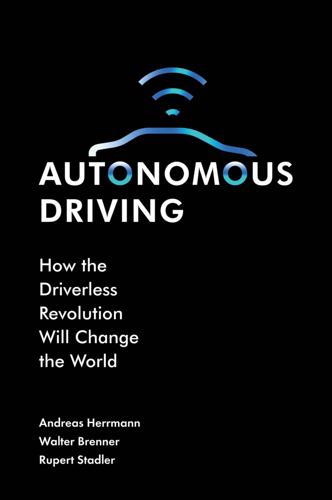
Autonomous Driving: How the Driverless Revolution Will Change the World
by
Andreas Herrmann
,
Walter Brenner
and
Rupert Stadler
Published 25 Mar 2018
According to studies, each one of these taxis replaces some 20 cars on Istanbul’s streets, thus creating more room for public space. For every trip they take, users earn points that can be redeemed to rent parking spaces in front of their homes. PARK has also become a social platform where people can discuss their ideas about political and social topics. Autonomous Driving 386 (4) The Pearl River Delta and its showcase city Shenzhen is home to multiple production facilities and is surrounded by a network of railways, canals and streets. Within 30 years, the city grew from its original 30,000 residents to a metropolis of 15 million, and it totals 42 million inhabitants with its surrounding conurbation.
…
There is still the challenge of providing the necessary infrastructure and establishing the necessary regulatory framework. These efforts have to come primarily from the private sector, since the government does not have the resources. Urban Development 389 With 650,000 employees and 150,000 inhabitants, China’s Qianhai Water City is considered to be the Wall Street of the Pearl River Delta. In recent years, the region has become a centre for developing innovative residential and traffic concepts. Currently, luxury apartments are being built at premium locations with a wide selection of shops, cafes, parks and recreational and sports facilities. The traffic concept has been integrated into urban planning, which means that several new opportunities are available for designing intermodal mobility.
…
See Le Super Electric Ecosystem (LeSee) Lexus, 173 Liability, 355 356 law, 237 mechanism, 237 Lieu, Ted, 145 Life magazine, 40 436 Light detection and ranging technology (lidar technology), 95, 96, 126 lane-level and intersection mapping based on, 105 sensors, 338 systems, 181, 331 Line-haul transportation, 160 168 Little, Patrick, 126 Live roads, 100, 102 Living Machine, The, 39 Localisation, 94 accurate lane, 103 vehicle’s own, 104 Localising, 94, 101 104 Logistics operations, 159 London Centre for Economic and Business Research in, 189 dynamic patterns of movement in city of, 390 lidar print cloud of Blackfriars Bridge in, 104 pedestrians in traffic in, 196 Long-distance autonomous vehicle, interior of, 15, 16 Long-haul trucks, 69 Long-term evolution (LTE), 65 LTE-V, 131 133 Luxe app, 319 Lyft, 174, 344 Ma, Jun, 373 Machine-learning, 99, 113, 332 333 algorithms, 93, 96, 98, 116 117, 336 technology, 332 Macroeconomic analyses, 243 ‘Made in China 2025’, 371 372 Magna, 9 Manufacturers, 17, 21, 45, 55, 84, 179 181, 263, 331 Mapping, 94, 101 104 Index Mars Rover Curiosity, 153 Mass motorisation, 39 McKinsey & Company, 320 Megacities, 58, 381 383 Megatrends in mobility, 25 connectivity, 25 26 electrification, 26 27 sustainability, 27 28 urbanisation, 26 Melody of speech, 292 Mercedes, 137, 179, 180, 316, 318, 322, 332 333, 398 F015, 282 Mercedes-Benz, 372 Mercedes-Benz robot, 290 S-Class cars, 184, 261 Self-Driving F015, 5 Mercedes’ Self-Driving F015, 5 Metaphors, 290 Metropolises, 382, 406 Meyer, Andreas, 175 Microsoft Windows, 9, 183, 247, 327 Military industry, 153 Mobileye, 9, 16 Mobility, 363 autonomous, 171 172 behaviours, 222 connected, 138 platforms, 174 177, 184, 317 Mobility as social interaction communication, 198 200 cultural differences, 195 197 pedestrians in traffic in London, 196 pedestrians in traffic in Teheran, 197 Mobility, disruptions in, 31, 34 arguments, 34 35 history, 32 33 OICA, 34 Mobility, megatrends in, 25 connectivity, 25 26 electrification, 26 27 Index sustainability, 27 28 urbanisation, 26 Mobility, problem with implications of congestion in United States, 188 safety, 192 193 time, costs and emissions, 187 192 Modes of transportation, 12, 81, 138, 343, 384 Modified 3-series BMW, 180 MOIA Company, 317 Monitoring, 106 108 Monotonous voices, 292 Montparnasse Station, Paris, accident at, 32, 33 Moore’s Law, 124 Moovel mobility platform, 19, 174, 317 Moral behavior, 253 254 Morgan Stanley Research, 65, 66 MP3 technology, 312 Multi-layered cyber security approach, 145 Multi-purpose vehicles, 14 Multimodal approach, 281 Multimodal transport app, Finland, 371 Multipliers, 225, 228 Musk, Elon, 181 National Highway Traffic Safety Administration, 55, 57, 61, 125, 144, 191 Nauto, 41, 42 Navia, 158 Navya, 41, 42 Nelson, Bill, 146 Netflix, 141, 311, 319 Network coverage, 403 Neural Networks, 99, 115 116 New Displays, 283, 284 New York City public transportation network, 363 437 Nida-Rümelin, Julian, 253 254 Nielsen’s ten usability heuristics, 283 NioEV’s new sports car Nio EP9, 5 Nissan, 6, 198 Nissan Leaf, 27 Nissan Teatro for Dayz, 273 274 Nokia, 130, 131 Norms, 241 242, 243 246 NuTonomy, 6, 9, 16, 112, 315 Nvidia, 6, 9, 16, 117, 125, 183, 315 Object recognition, 55, 93 Ohlsen, Jörg, 83 Online services, 129, 136 137 OnStar, 136 137 Open-source software, 119 Operating costs, 301 302 Organisation Internationale des Constructeurs d’Automobiles (OICA), 34 Original equipment manufacturers (OEMs), 146 Orix, 317, 344 Output layer, 119 Over-provisioning, 127 Paolo (Netflix Design Director), 228 PARK incentive program, 385 Park24, 317, 344 Parking space, 304 system, 78 Parsons, Philip, 388 Particulate matter (PM), 191, 204 Pearl River Delta, 386, 389 Pedestrians car’s interactions with, 200 traffic in London, 196 traffic in Teheran, 197 Index 438 Peer-to-peer car sharing, 342 343 service, 350 351 Perceptual errors, 249 Peters, Gary, 146 Peugeot Instinct concept car, 273 Physical roadside objects, 103 Pikes Peak drive, 179 Pivotal 2015, 320 Planning, 94, 106 108, 406 behavioural, 107 mission, 106 107 trajectory, 336 Platooning, 133, 163, 165 autonomous truck, 347 vehicle, 299 Platoons, 8, 49, 164, 166, 299, 369 Players manufacturers, 179 181 mobility platforms, 184 new players, 183 suppliers, 181 182 technology companies, 182 183 Playing fields, autonomous driving agricultural sector, 154 157 autonomous tractor in use, 156 last-mile delivery, 168 line-haul transportation, 160 168 logistics operations, 159 military and aerospace industry, 153 public transportation, 157 159 warehouse transportation, 159 Plug-in hybrid electric vehicles, 26 Pokrzywa, Jack (Director of SAE), 244 245 Politicians, 172, 249 Politics, 171 173 Polmans, Kristof, 123 124 Pooling, 342 345 Power, J.

Fortune's Bazaar: the Making of Hong Kong: The Making of Hong Kong
by
Vaudine England
Published 16 May 2023
He refused to engage with the thought that it’s tough on a place when the only way to vote is with one’s feet. Others say the future lies in a new version of Hong Kong’s past—as an offshoot of the trading world focused in southern China, around Guangzhou and newer satellite cities like Shenzhen all over the Pearl River delta. Indeed Canton, now Guangzhou, has been engaged in global trade since at least the 900s, and today boasts a lively mixed community of Africans, Europeans, and others alongside the Chinese in business. China academics can prove that China has always interacted with the rest of the world, that it, too, has had its cosmopolitan eras and enthusiasms.
…
Holdsworth, May, and Christopher Munn, eds. Dictionary of Hong Kong Biography (Hong Kong: Hong Kong University Press, 2012). Hong Kong Centenary Commemorative Talks, Hong Kong University Library Special Collections. Hong Kong Museum of Art. Historical Pictures (Hong Kong: Urban Council, 1991). ———. Views of the Pearl River Delta: Macau, Canton and Hong Kong (Hong Kong: Urban Council and Peabody Essex Museum, 1996). Hong Kong Museum of History, Urban Council. Historical Photographs of Hong Kong, Part 2 (1991), and Part 3 (1994). Hong Kong Tourist Association. Around and About Hong Kong April 16th 1961 (pamphlet) (Hong Kong: HK Tourist Association, 1961).
…
“Hung Hom: An Early Industrial Village in Old British Kowloon,” Journal of the Hong Kong Branch of the Royal Asiatic Society 15 (1975): 318–24. ———. “Nineteenth Century Yaumatei,” in In the Heart of the Metropolis: Yaumatei and Its People, ed. P. H. Hase (Hong Kong: Joint Publishing Co., 1999), 96–109. Smith, Carl T., and Paul A. Van Dyke. “Muslims in the Pearl River Delta 1700–1930,” Review of Culture 10 (April 2004): 6–15. Smith, George. A Narrative of an Exploratory Visit to Each of the Consular Cities of China, and to the Islands of Hong Kong and Chusan, in Behalf of the Church Missionary Society, in the Years 1844, 1845, 1846 (London: Seeley, Burnside & Seeley, 1847; New York: Harper & Brothers, 1857).
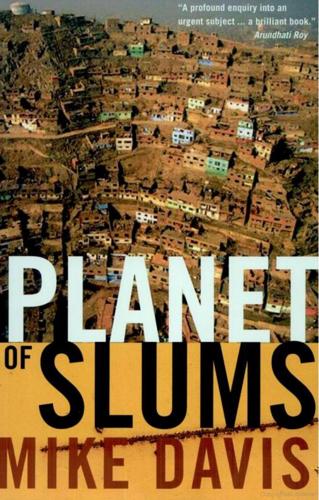
Planet of Slums
by
Mike Davis
Published 1 Mar 2006
Created in 1983, the Shanghai Economic Zone is the biggest subnational planning entity in the world, encompassing the metropolis and five adjoining provinces with an aggregate population almost as large as that of the United States.16 These new Chinese megalopolises, according to two leading researchers, may be only the first stage in the emergence of "a 13 Jean-Marie Cour and Serge Snrech (eds), Preparing for the Future: A Vision of West Africa in the Year 2020, Paris 1998, p. 94. 14 Ibid, p. 48. 15 See Yue-man Yeung, "Viewpoint: Integration of the Pearl River Delta," International Development Planning Tkeview 25:3 (2003). 16 Aprodicio Laquian, "The Effects of National Urban Strategy and Regional Development Policy on Patterns of Urban Growth in China," in Gavin Jones and Pravin Visaria (eds), Urbanisation in Large Developing Countries: China, lnonesia, Brazil, and India, Oxford 1997, pp. 62-63.
…
Without the official citizenship in the city provided by a valid household registration card, this immense mass of poor peasants (currendy estimated at 100 million) had no legal entitlement to social services or housing. Instead they became super-cheap human fuel for the export sweatshops of the Pearl River Delta and the building sites of Shanghai and Beijing, while housing themselves in makeshift shacks and overcrowded rooms at the edges of the cities. The return of capitalism to China brought with it the squalid urban shantytown. Finally, in the late 1980s South Africa's rulers, faced with the most significant shantytown uprising in world history (the "civics" movement in the black townships), were forced to dismantle the totalitarian system of controls — first, the Pass Law in 1986, then the Group Areas Act in 1991 — that had restricted African urban migration and residence.
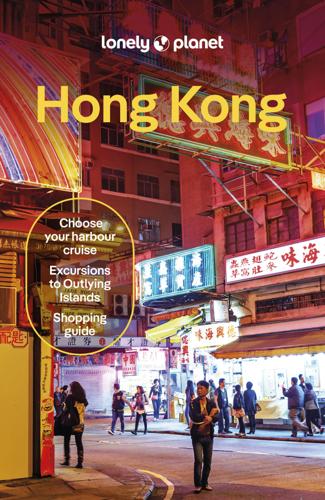
Lonely Planet Hong Kong
by
Lonely Planet
Ferries & Ships Frequent scheduled ferries connect a string of towns and cities on the Pearl River Delta, including Macau, with the China Ferry Terminal in Kowloon and/or the Hong Kong–Macau Ferry Terminal on Hong Kong Island. International cruise ships dock at the Kai Tak Cruise Terminal, and Ocean Terminal in Tsim Sha Tsui. Hong Kong–Zhuhai–Macau Bridge Completed in 2018 at a cost of US$20 billion, the HZMB is the world’s longest sea-crossing bridge-tunnel system. Various shuttle buses make the 55km crossing over (and under) the Pearl River Delta, connecting Macau and the Chinese city of Zhuhai with Hong Kong. Journey times range from 45 minutes to two hours.

Smart Cities: Big Data, Civic Hackers, and the Quest for a New Utopia
by
Anthony M. Townsend
Published 29 Sep 2013
But as our ability to build has accelerated through improvements in construction engineering, the frenetic business of real estate development, and new financing schemes, that historic way of designing cities has come undone. As a result, in fast-growing cities decisions about the location of different buildings, facilities, or roads have become ad hoc, arbitrary, and ill informed. Architect Rem Koolhaas, who studied the rapid urbanization of China’s Pearl River Delta region in the 1990s, described the pace of design there, telling students, “in China, 40-story buildings are designed on Macintoshes in less than a week.”42 One can hardly expect good decisions amid such haste. Oddly, just as the pace of building the physical world speeds up, there are signs that as computing hits the streets, the pace of innovation is about to slow down, or at least get a lot more complicated.
…
Right now the problem with the Internet of Things is we get so focused on the thing itself that we fail to recognize that the potential to find new ways to express ourselves to each other through this medium.”43 As electronics makers all around the world have learned, the most telling sign of success is to have your product knocked off by the “shanzhai” factories of China’s Pearl River Delta region just north of Hong Kong. Numbering in the thousands, these tiny, fiercely competitive manufacturers are always looking for a niche to exploit before the others. In 2011, while trying to troubleshoot one student’s flaky Arduino, Igoe noticed something was off. The reset button was green, instead of the usual red.
…
Web app for, 239–40 Botanicalls, 134–35, 140 Bo Xilai, 273 brain drain, as “brain circulation,” 172 Brand, Paul, 177 Brasilia, urban design for, 7 Brazil, 67, 90–92 paternalistic governance in, 90 rapid-transit in, 11 squatter cities (favelas) in, 2, 91–92 urban development plans of, 30 Brazil, 258 Bristol, 205 Broadacre City, 26 broadband, 127, 171, 178, 180, 194–99, 286 community owning of, 288–89 public infrastructure for, 287–89 Broadcom, 272 Broad Institute, 254 Bryant Park Restoration Corporation (BPRC), 131 “Building a Science of Cities” (Batty), 85 building automation, 22–24, 26–27 Burnham, Daniel, 94 Burns, Red, 115–18, 120, 164–67, 303 Buro Happold, 290–91 Bush, Vannevar, 75–76 cable technology, 115–19 cable television, 115, 117 CabSense, 232–33 Cairo, in Arab Spring, 12, 300 Calhoun, George, 52 California, University of, at Berkeley, 41 Calvino, Italo, 305 Cameron, William Bruce, 316–17 Campanella, Tom, 72, 98, 101, 104, 106 Camper, Brett, 202 Canberra, urban design for, 7 carbon dioxide emissions, 278–79 Caro, Robert, 7, 102–3 Carrier IQ, 271, 274–75 “car wars,” 98–107 Case Foundation, 238 Casson, Herbert, 5 cellular networks, 52–53, 262–64 for global Wi-Fi roaming, 55 hurricane and tsunami damage to, 262–63 industry for, 55 population density as threat to, 263 Census, U.S., 5, 57–61, 294 Centre for Advanced Spatial Analysis, 85 Centrino processor, 132 Cerdà, Ildefons, 43–44, 93 Cerf, Vint, 303 Chambers, John, 24 Chattanooga, Tenn., 287–88 Chernobyl, 257 Chicago, Ill., 36, 94, 207–11, 292, 307 Chicago Shovels in, 208 industrialization of, 5 Neighborhood Health Index for, 209–10 Snow Corps of, 208 China: growth of smartphones in, 4 migration into cities in, 47–48 pace of building design in, 112 Pearl River Delta in, 112, 141 special economic zones in, 24 as threat to high-tech industry, 26 “tofu buildings” in, 257 urban development plans of, 2, 30 urban surveillance projects in, 273–74, 276 Chisinau, 168, 171 Chongqing, 273 “Peaceful Chongqing” surveillance in, 273 Cisco Systems, 8, 34, 38, 39, 44, 55, 249, 273, 290 Bangalore Globalisation Centre East of, 45 planners of new data networks by, 44–46 as planners of Songdo’s technology, 24, 26–28 as promoter of smart cities, 31–32 at Shanghai Expo 2010, 48, 172 videoconferencing through, 46–49 vision of future by, 47–49 Cities From the Sky (Campanella), 72 Cities in Evolution (Geddes), 97 CityMart, 246–47 City-search, 121 Civic Commons, 158–59 civic hackers: advantages over big tech companies of, 162–63 alternative visions of, 9 institutionalized techniques of, 239 problems with, 165–66, 224–25 Claris Networks, 288 Clark, David, 109 Clarke, Arthur C., 6 climate change, 112 Clinton, Bill, 248 cloud computing, 263–65, 289, 294 CNN, 116 Coast, Steve, 187 CoDeck, 233–34 Code for America, 237–43, 291 Brigade of, 243 Cold War, 79, 277 Collier’s, 56 Collins, John, 77, 84 Colorado, 197–98 Comer, Andrew, 290–91 Cometa Networks, 130 Community Access, 175 community antennas (CAs), 116 community media, 133, 154 Compass systems, 265 “computational leadership networks,” 242 computer modeling, 77–79, 81, 85 Computing-Tabulating-Recording Company, 62 Congress, U.S., 57–58 Connected Cities (Haselmayer), 245 Constitution, U.S., 57 “control revolution,” 59, 64, 316 Convensia Convention Center, 23–24 Cook, Justin, 83–85, 298 Corbett, Peter, 200 Costa Rica, 176 Council on Foreign Relations, U.S., 63 Coward, Andrew, 274 Cowen, Tyler, 107–9 crowd-sourcing, 121, 151, 155, 166, 192, 203, 214–15, 308–9 traffic apps through, 157, 202 Crowley, Dennis, 121–26, 134, 144–52 Crystal Palace (London), 19–21 Convensia evoked in, 23 Cuartielles, David, 137 Cummings, E.
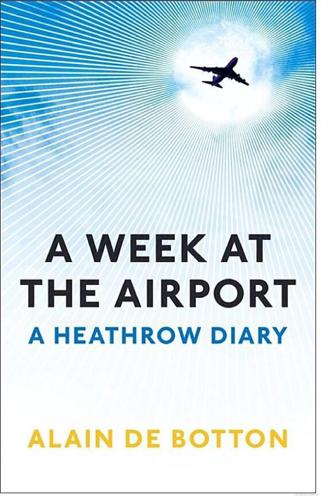
A Week at the Airport: A Heathrow Diary
by
Alain de Botton
Published 1 Jan 2009
One might have come from Shanghai to join Malcolm and Mike for a drive down to Bournemouth to learn English for the summer: a two-month sojourn in a bed and breakfast near the pier, with regular lessons from a tutor who would teach her class how to say ‘ought’ and help them master business English, a subcategory of the language that would vouchsafe future careers in the semi-conductor and textile industries of the Pearl River delta. For his part, Mohammed was waiting for Chris’s flight from San Francisco. The former, originally from Lahore, was at present based in Southall, while the latter, from Portland, Oregon, now lived in Silicon Valley – not that either man would attempt to discover these details about the other.
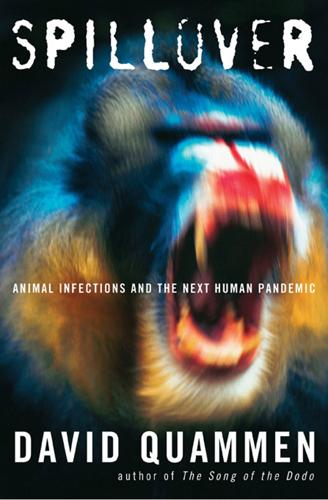
Spillover: Animal Infections and the Next Human Pandemic
by
David Quammen
Published 30 Sep 2012
When the infection first crossed the border, from Guangdong to Hong Kong, very little information crossed with it. Guangdong is drained by the Zhu (Pearl) River, and the whole coastal area encompassing Hong Kong, Macau, Guangzhou, and a new border metropolis called Shenzhen, as well as Foshan, Zhongshan, and other surrounding cities, is known in English as the Pearl River Delta. On November 16, 2002, a forty-six-year-old man in Foshan came down with fever and respiratory distress. He was the first case of this new thing, so far as epidemiological sleuthing can determine. No samples of his blood or mucus were later available for laboratory screening, but the fact that he triggered a chain of other cases (his wife, an aunt who visited him in the hospital, the aunt’s husband and daughter) strongly suggests that SARS was what he had.
…
Feeling sick in Shenzhen, he commuted home to another city, Heyuan, and sought medical treatment there at the Heyuan City People’s Hospital, where he infected at least six health-care workers before being transferred to a hospital in Guangzhou, about 130 miles to the southwest. One young doctor who rode to Guangzhou in the ambulance with him also became infected. Not long afterward, during late December and January, other such illnesses started occurring in Zhongshan, sixty miles south of Guangzhou and just west across the Pearl River Delta from Hong Kong. Within the next several weeks, twenty-eight cases were recognized there. Symptoms included headache, high fever, chills, body aches, severe and persistent coughing, coughing up bloody phlegm, and progressive destruction of the lungs, which tended to stiffen and fill with fluid, causing oxygen deprivation that in some cases led to organ failure and death.
…
Stir-fried cat, in such a context, seems sadly inevitable rather than shocking. But the civet cat (Paguma larvata) is not really a cat. More accurately known as the masked palm civet, it’s a member of the viverrid family, which includes the mongooses. The culinary trade in such unusual wild animals, especially within the Pearl River Delta, has less to do with limited resources, dire necessity, and ancient traditions than with booming commerce and relatively recent fashions in conspicuous consumption. Close observers of Chinese culture call it the Era of Wild Flavor. One of those observers is Karl Taro Greenfeld, who served as editor of Time Asia in Hong Kong during 2003, oversaw the magazine’s coverage of SARS, and soon afterward wrote a book about it, China Syndrome.
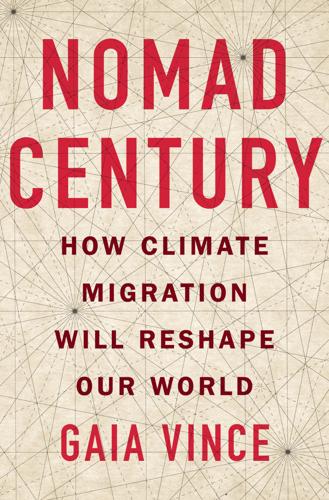
Nomad Century: How Climate Migration Will Reshape Our World
by
Gaia Vince
Published 22 Aug 2022
Singapore and Hong Kong are similar success stories that became rich on the back of better legal systems, less corruption, stronger rule of law and more competent administration. Notably, Singapore and Hong Kong also benefit from their strategic locations: both are gateway cities that control massive trade flows through the Malacca Straits and the Pearl River Delta respectively. Romer’s model wouldn’t be suitable for the needs of the coming decades, of course, as large populations will be migrating away from climate-ravaged lands – and the idea that poor countries exchange sovereignty for a hike out of poverty is likely to prove unpalatable for many. Nevertheless, private charter cities are already under way, mooted as an economic development model that enables residents to escape climate impacts.
…
Kung peoples Kutupalong refugee camp, Bangladesh Kyrgyzstan Lagos Lake Chad Lammy, David land ownership language/linguistics; language classes for new arrivals; and nation state Laos Las Vegas Latin America: Amazon region; first nation states in; fragile social systems in; impact of climate emergency; mega-El Niño (1997–8); migrants in Parla, Spain; rivers fed by glaciers; rural to urban migration League of Nations Leipzig liberalism Libya Lima livestock farming: by drone; feeding of animals; impact of drought; inhumane treatment of animals; insects as feed; land and water used for; meat and dairy subsidies; need for huge reduction in Ljubljana, Slovenia locust plagues London Macau Maillard chemical reaction maize production, global Malacca Straits Malaysia Maldives Mali Manchester Mangroves Marijuana marine life: fish populations; impact of global warming; starved of oxygen by algae marshes Mayan civilization Mayors Migration Council McCarthy, Kate McCay, Adam McConnell, Ed Medellín, Colombia media, prejudice against migrants Mediterranean Mekong River Melbourne, Pixel Building Merkel, Angela Mesopotamia Met Office, UK, methane Mexico Mexico City Miami Micronesians Middle East migrant cities: the Arctic as new region for; charter cities option; and circulation of community resources; ‘climate haven’ cities; creation of entirely new cities; as cultural factories; environmental sustainability; evidence of decline of tribalism in; expanding existing cities; in the new north; planning future cities; repurposing/adaptation of; successful urban development/planning in; as synergistic; training for rural migrants; water-management infrastructure migrants/immigrants: arrival in family groups; ‘Bangla’ communities in London; contribution to global GDP; creation of active markets by; distinction between refugees and; dominant hostile narratives of in West; ‘economic migrant’ term; evidence of decline in hostility towards; harnessing potential of; immigrant inclusion programmes; as indentured labour; internal migration; Boris Johnson’s language on; language classes for; levels of patriotism of; living in slums/shanty towns; mentoring and support for; as percentage of global population; racist and prejudicial tropes about; returning to origin countries; seasonal; situations of appalling abuse/danger; state-sponsored support needed for migration: and advantageous genetic modifications; barriers to today; as benefitting everyone; controlled by city authorities; as deeply interwoven with cooperation; and diversified genes/culture; evidence of decline of anti-immigrant feeling; free movement ends in twentieth century; and historic climate change; historical; human displacement at record levels; inherited routes and channels; and mental illness; as not reduced by aid; reluctance to move; and skin colour; of stuff/resources; as survival strategy used widely in nature; as valid and essential part of human nature; world’s major cities created by migration, arguments against/fears around: fears around crime and violence; and jobs; long evolutionary roots to prejudice; in the media; populist politicians; pressure on inadequate host services; prospect of radical change; resting on true/pure national identity idea; security/terrorism issues; and welfare systems migration, climate-driven: Covid cooperation as hopeful example; due to flooding; and geopolitical mindset; global agreement on pathways needed; hypothetical scenarios/models enabling; as inevitable; Kiribati’s ‘migration with dignity’ programme; mass movement already under way; move to higher elevations; national and regional relocation schemes; need for strong nation-states; need to plan practically now; numbers affected today; predicted future numbers; and Refugee Convention (1951); risk of domination by wealthy elites; as solution not problem; speed of movement of climate niches; water issues to be main driver migration, urban; access to health and education; community sponsorship models; family retention of farmland; and intensive infrastructure development; as most effective route out of poverty; population fall due to; role of business in migrant integration; from rural areas; successful management of; as unplanned and iterative; in the West (1850–1910); and workforce shortages in global north Miller, David mineral supples/extraction mining industry Mongla (Bangladesh) Mongolian steppes Morocco Mumbai, mussels Myanmar Nairobi Nansen, Fridtjof nation state: Anderson’s ‘imagined communities’; claims that country is ‘too full’; first created by revolutionaries; and genetic variation; and geopolitical mindset; and language; leases/purchases of territory by; model as often failing; nationality as arbitrary line drawn on map; need for reinvention of; as norm after First World War; and system of borders; translocation of existing nation states National Health Service (UK) national identity: and anti-immigrant feeling; and bureaucracy; creation of first nation states; ethnic and cultural pluralism as the norm; evidence of decline of tribalism; feelings of loss of/decline; and ideology of nationalism; lack of political meaning before end of eighteenth century; nation state as norm after First World War; need to change immigration narrative; patriotism of welcomed migrants; predicated on mythology of homogeneity; and supranational identity; transition to pan-species identity Nauru Neanderthals negative emissions technologies Netherlands; Delta Programme; Energiesprong house insulation Neukölln (Berlin) New Orleans New Story (nonprofit) New York City; ‘Big U’ seawall project; NYCID programme New Zealand; Managed Retreat and Climate Adaptation Act Newtok, Alaska Nicaragua Niger, West Africa Nigeria nitrogen Noem, Kristi nomadic pastoralism Nordic nations Normans North Korea Northern Ireland Northwest Passage Norway Notre Dame, University of, Global Adaptation Initiative nuclear power; fusion reactor technology Nusantara (Borneo) Nuuk (Greenland) Obayashi (Japanese firm) oceans/seas: acidification; as energy source in north; and enhanced weathering techniques; global warming absorbed by; impact of 4° C-hotter world; impact of carbon emissions; jellyfish explosions; long-distance migratory voyages; marine heatwaves; and migratory raiders; Miocene Era sea levels; North Atlantic currents; Northwest Passage; nutrient and oxygen circulation; ocean fertilization; release of carbon dioxide; rise in sea levels; sea grasses; sourcing food from; toxic algae blooms oil industry OmniTrax (US freight company) Ottoman Turks Overjeria, Bolivian village Paine, Thomas Pakistan Palaeo-Eskimos, Canadian palaeontology Palestine Panama Papua New Guinea Paris climate meeting (2015) Parla (near Madrid) passports Patagonia Patel, Priti patriotism Pearl River Delta Peatlands people-traffickers Peri, Giovanni permafrost, infrastructure built on Persian Gulf Peru Pfizer vaccine Philippines; nurses from Philistines Photios of Constantinople Phuket, Thailand Phytoplankton plains/steppes plants/vegetation: destruction of by wildfires; genetic tools to help adaptation; grass verge areas; heat damage to crops; during last ice age; move to plant-based diet; planted to increase crop yields; replanting of; rooftop vegetation/gardens plastic waste Pleistocene epoch Poland political and socioeconomic systems: in Africa; benefits to democracy of migration; cooperation during Covid upheaval; corporate food system; democracy based on inclusiveness; development of governance systems; end of multinational empires; erosion in the powers of global bodies; failure over decarbonization; far-right political parties/groups; fossil fuels as embedded in; geopolitical constraints; geopolitical implications of farming’s shift north; global institutions with enforceable powers needed; and ideal temperature question; inequality as failure of policy; institutional bias over skin-colour; institutional trust levels; international diplomacy; move from feudalism to centralized monarchy; nation-state model spreads; need for global planning over migration; need for redistributive policies; need for strong nation-states; new regional unions option; pledge of ‘strong borders’ as vote-winner; possible new political institutions/structures; post-war institutions and inequality; strong/stable institutions in north; translocation of existing nation states; and transnational rivers/’water towers’; vested interests in the rich world; Westphalian state system pollinators pollution Polynesians populist politicians Portugal postcolonial diaspora poverty see inequality and poverty Próspera ZEDE (embryonic charter city) Prussia Puerto Rico Putin, Vladimir Pygmies Qatar race and ethnicity: and anti-immigrant feeling; deliberately prejudicial policies; and demographic change; European colonialism; fallacy of biological ‘race’; heat related inequalities; unconscious bias in society; white supremacists rain gardens rainfall: altering patterns of; captured by roof gardens/storage; seeding of clouds rare earth metals Raworth, Kate, Doughnut Economics, recycling Refugee Convention (1951) refugees: from Afghanistan; barred from working; Burmese Rohingya in Bangladesh; climate change not in legal definition of; distinction between migrants and; EU seeks quota system for; hostile rhetoric towards; judgemental terms used about; and Nansen passports; privately sponsored; from Syrian crisis (2015–16) see also asylum-seekers renewable power production: as adding to, not replacing, fossil fuels; artificial light delivered by LEDs; hybrid hydro-solar power concept; hydroelectric plants; as leading job creator; and net zero targets; phenomenal rise in; refrigerant units in global south; solar-powered closed-cycle farming; storage technology; zero-carbon new-builds Republic of the Congo restoring our planet’s habitability; biodiversity loss; ‘blue carbon’; climate change-biodiversity loss as linked; cooling of global temperatures; decarbonizing measures; enhanced weathering techniques; future repopulation of abandoned regions; genetic tools to help species adapt; as global, labour-intensive task; natural restoration after human abandonment; nature guardianship in tropical regions; need for speed; negative emissions technologies; ocean fertilization; paying communities to protect ecosystems; regenerative agriculture; replanting of vegetation; solar radiation reduction tools, see also geoengineering retail services rice; SRI cultivation process rivers: drying out of; fed by glaciers; heavier rainfall as increasing flows; lack of in Gulf region; pollution discharged into; transnational Roatan, Caribbean island of Rocky Mountains Rome, ancient Romer, Paul Rotterdam rural living: and depopulation crisis; flight from drought/heat hit areas; impact of flooding; massive abandonment of in coming decades; migration to urban areas; and population expansion in Africa; remittances from urban migrants; as single largest killer today; and water scarcity Russell, Bertrand Russia: and charter cities model; depopulation crisis; economic benefits from global heating; economic sanctions on; expansion of agriculture in; infrastructure built on permafrost; invasion of Ukraine (2022); mega-heatwave (2010); migrant workforce in east; as potential area for charter cities; small-scale modular nuclear reactors in; water resources in Rwanda: Hutus and Tutsis in; special protective zones in; and UK asylum-seeker plan Salla, Finnish town of sanitation Saudi Arabia Saunders, Doug Sawiris, Naguib Scandinavia scientific discovery Scotland sea grasses Seasteading movement Seven Dials, London sex industry Shanghai sharing/circular economy Shenzhen Shyaam a-Mbul Siberia silicates Silicon Valley Silk Road Singapore sinkholes Skellefteå, Sweden slavery Slovenia slum dwellers; conditions at Kutupalong refugee camp; in Lagos; in Lima; and urban heat island effect; vulnerability to flooding social class/hierarchies: and anti-migrant attitudes; barriers erected against migration of the poorest; despair and anger of ‘left behind’ natives; development of; and gentrification; middle class migrants; myth of meritocracy; prejudice as often defensive fear-based reaction social networks; benefits of trade; cities as focal points for trade; Dunbar number; entangled ancestries/identities; forged by migrants; and knowledge flow; loss due to gentrification; migrants in family groups; and mistrust of outsiders; need for inclusive governance; and reluctance to migrate; in slum areas; social clustering of migrants; synergy created by; and unjust hierarchies; welcoming of strangers to social services see welfare systems and social services socioeconomic system see political and socioeconomic systems soil: ‘biochar’ use in; biomatter decay in; as carbon store; impact of heat on; impact of wildfires on; integrated soil-system management in China; and overuse of fertilizers; and perennial cereals; use of silicates in solar power Solar Radiation Management Governance Initiative South Dakota South Korea Southern Ocean Soviet Union soya production Spain Spitalfields, London stateless persons Sudan sulphate cooling concept Sumerian civilization Sunak, Rishi Sweden Switzerland Syrian crisis (2015–16) Tabasco, Mexican state of Tabassum, Marina Tahiti Tajikistan Tanzania Tasmania textiles industry Thailand Thepdet, Supranee thermal wallpaper Thiel, Peter Thirty Years War Thwaites Glacier Tokyo Toltecs Tong, Anote Tourism trade and commerce; cities as focal points for networks; free movement of goods; free trade; global trade deals; origins and development of transport infrastructure: aviation; decarbonizing of; electric-powered vehicles; equitable access to; in global south; and limitations of battery weight; problems due to extreme heat; sail power as due a revival; in successful migrant cities; use of foot or pedal trees: American chestnut trees; cycles of burn and recovery; as ‘emissions offset’; giant sequoias; ‘green wall’ tree-planting projects; vine-like lianas Trestor, Anne Marie tropical regions: benefit of solar cooling idea; impact of climate emergency; nature guardianship in; population rise in Trump, Donald Tsipras, Alexis tundra Turkey Turkmenistan Tuvalu UAE Uganda Ukraine: maize exports; Russian invasion of (2022) United Kingdom: ageing population in; anti-immigrant feeling in; Brexit; Commonwealth Immigrants Act (1962); and Covid pandemic; destruction of peatlands in; flood defences in London; historical migration to; history of granting asylum; ‘hostile environment’ policy; impact of climate emergency; and inevitability of change; low statutory sick pay level; migratory shift to southeast; planned fusion reactors; planning laws; renewable power production; Rwanda proposal for asylum-seekers; slow processing of asylum claims; small boats in English channel; wet-farming in United Nations: Global Compact for Safe, Orderly and Regular Migration (2018); HCR; Human Rights Council; International Labour Organization; International Organization for Migration; and Nansen Passport concept; suggested new global migration body United States: Chinese Exclusion Act (1882); ‘climate-proof’ cities in; as created from global migrants; dam removal in; demographic change in; and depopulation crisis; and extreme La Niña events; and future climate problems; Green New Deal; heat related inequalities; Homestead Act; immigrant-founded companies; impact of climate emergency; indigenous communities; and inevitability of change; lack of universal healthcare in; leases/purchases of territory by; low spending on social services; mass incarceration of Mexicans in; meat industry in; migration to since 1980s; and mineral extraction; municipal codes; net zero commitment; nineteenth century migration to; patriotism of migrants; refugee children in detention camps; resettlement project in Louisiana; rural to urban migration; seeding of clouds in; Trump’s work visa restrictions; ‘urban visas’ in; yield gap in university towns urban development/planning: Bijlmermeer (outside Amsterdam); and elderly populations; and inclusive government policies; machizukuri process in Tokyo; need for integrated high-rise/low-rise; new canals/water features to combat heat; parks/squares/public spaces; planning and zoning laws; slum clearance programmes; social capital investment in cities USAID Uttarakhand, Indian state Uzbekistan Venezuela Venice Vermont Vietnam Vikings war/violent conflict: over water scarcity; triggered by climate upheaval water, fresh: circulated, cleaned, stored and reused; closed-circuit water recycling; conflict triggered by scarcity; crop irrigation; desalination techniques; drip-irrigation systems; evaporative losses; geopolitics of water control; held in glaciers; impact of heat on supplies; importance of new water policies; inland lake systems; need for urban underground reservoirs; new waterways and river diversions; pumping of groundwater; purified sewage recycled; as resource anxiety of this century; running dry of aquifers; salination of groundwater; used for livestock; water pricing/tax policies Waterloo, Ontario weather systems: cyclonic storms in Bay of Bengal; El Niño events; extreme La Niña events; extreme weather events; Intertropical Convergence Zone (ITCZ); monsoon regions; trade winds welfare systems and social services: access to in migrant cities; and arguments against migration; and bureaucracy; despair and anger of ‘left behind’ natives; intensive infrastructure development needed; low spending on in USA; migrant access to; migration as benefitting social care systems; punitive restrictions on new migrants Westphalia, Peace of (1648) Whales wheat production, global Wilson, E.

The Uninhabitable Earth: Life After Warming
by
David Wallace-Wells
Published 19 Feb 2019
By 2100, if we do not halt emissions, as much as 5 percent of the world’s population will be flooded every single year. Jakarta is one of the world’s fastest-growing cities, today home to ten million; thanks to flooding and literal sinking, it could be entirely underwater as soon as 2050. Already, China is evacuating hundreds of thousands every summer to keep them out of the range of flooding in the Pearl River Delta. What would be submerged by these floods are not just the homes of those who flee—hundreds of millions of new climate refugees unleashed onto a world incapable, at this point, of accommodating the needs of just a few million—but communities, schools, shopping districts, farmlands, office buildings and high-rises, regional cultures so sprawling that just a few centuries ago we might have remembered them as empires unto themselves, now suddenly underwater museums showcasing the way of life in the one or two centuries when humans, rather than keeping their safe distance, rushed to build up at the coastline.
…
It will take thousands of years, perhaps millions, for quartz and feldspar to degrade into sand that might replenish the beaches we lose. Much of the infrastructure of the internet, one study showed, could be drowned by sea-level rise in less than two decades; and most of the smartphones we use to navigate it are today manufactured in Shenzhen, which, sitting right in the Pearl River Delta, is likely to be flooded soon, as well. In 2018, the Union of Concerned Scientists found that nearly 311,000 homes in the United States would be at risk of chronic inundation by 2045—a timespan, as they pointed out, no longer than a mortgage. By 2100, the number would be more than 2.4 million properties, or $1 trillion worth of American real estate—underwater.
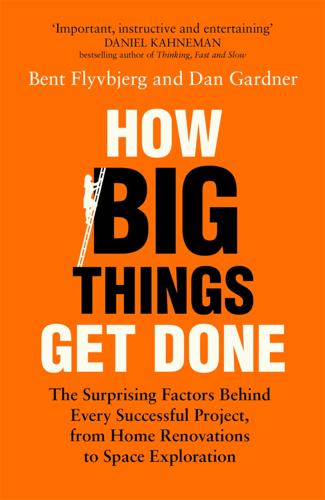
How Big Things Get Done: The Surprising Factors Behind Every Successful Project, From Home Renovations to Space Exploration
by
Bent Flyvbjerg
and
Dan Gardner
Published 16 Feb 2023
In 2010, as China was launching one giant infrastructure project after another, Hong Kong’s Legislative Council approved a megaproject that was ambitious even by Chinese standards: the world’s first fully underground high-speed rail system, to be known as “XRL,” including the world’s largest underground high-speed rail station, four stories deep, dynamited into bedrock, smack in the center of Hong Kong. The twenty-six-kilometer (sixteen-mile) line would halve the travel time between Hong Kong and the mainland city of Guangzhou, further integrating one of the world’s most important ports and financial centers with the largest urban agglomeration on Earth, including the Pearl River Delta Economic Zone. XRL would be built by Mass Transit Railway (MTR), the corporation that operates Hong Kong’s giant rail network. MTR has an excellent track record, both in its daily operations and in delivering big projects. Yet it soon got into trouble with XRL. When construction began in 2011, it was scheduled to be finished in 2015.
…
Skamris, ref1 Holmes, Elizabeth, ref1 home and kitchen renovations, ref1, ref2, ref3, ref4, ref5, ref6, ref7, ref8, ref9, ref10 honest numbers, ref1 Hong Kong, ref1, ref2, ref3, ref4, ref5 Hoover, Herbert, ref1, ref2 Hoover Dam, ref1, ref2, ref3 Hopper, Dennis, ref1 Hornsea Project, United Kingdom, ref1 Hughes, Robert, ref1 hurricanes, ref1 hydroelectricity, ref1 ice melt, ref1 Ickes, Harold, ref1 ignorance, ref1 IKEA, ref1 illusion of explanatory depth, ref1 inchstone approach, ref1 Incredibles, The (movie), ref1 Infinite Jest (Wallace), ref1 information technology (IT) projects, ref1, ref2, ref3, ref4, ref5, ref6, ref7, ref8, ref9, ref10, ref11, ref12, ref13, ref14, ref15 (see also specific projects) Inside Out (movie), ref1, ref2 inside view (detail), ref1, ref2, ref3 Instagram, ref1 International Energy Agency, ref1, ref2 International Olympic Committee (IOC), ref1 International Renewable Energy Agency, ref1 Internet, ref1 intuitive judgments, ref1, ref2, ref3, ref4, ref5 iPod, ref1 Ireland, ref1 Iron Law of Megaprojects, ref1, ref2 iterations (see planning) Ive, Jony, ref1 James Webb Space Telescope, ref1, ref2 Japan, ref1, ref2, ref3, ref4, ref5, ref6, ref7 Jaws (movie), ref1, ref2 Jay-Z, ref1 Jobs, Steve, ref1, ref2, ref3, ref4, ref5 Johnson, Lyndon B., ref1 Jørgensen, Hans Lauritz, ref1, ref2 Judaism, ref1 Justice, US Department of, ref1 Kahneman, Daniel, ref1, ref2, ref3, ref4, ref5, ref6, ref7, ref8, ref9 Kazan, Elia, ref1, ref2 Kennedy, John F., ref1 King Kong, ref1 Kissinger, Henry, ref1 Klein, Gary, ref1, ref2 Kmart, ref1 Kramer, Eddie, ref1, ref2, ref3 kurtosis, ref1 LaGuardia Airport, New York, ref1 Lamb, William, ref1, ref2 large numbers, law of, ref1 Larsen, Henning, ref1 Lasko, Jim, ref1, ref2 Last Movie, The (movie), ref1 Lawrence of Arabia (movie), ref1 lean startup model, ref1 Lean Startup, The (Ries), ref1, ref2 Led Zeppelin, ref1 Lego, ref1, ref2, ref3, ref4, ref5, ref6, ref7 Lennon, John, ref1 Levi Strauss, ref1 Levinson, Marc, ref1 Levy, Steven, ref1 lightbulbs, ref1, ref2 Lincoln, Abraham, ref1, ref2 Lincoln Center, New York City, ref1 lock-in, ref1, ref2, ref3 London, Olympic Games in, ref1 Los Angeles, California, ref1, ref2, ref3, ref4 Lötschberg Base Tunnel, Switzerland, ref1 Machiavelli factor, ref1 Madrid Metro, ref1, ref2, ref3 Maersk, ref1 Mandelbrot, Benoit, ref1, ref2 Marriott hotel, New York City, ref1 Mass Transit Railway (MTR), Hong Kong, ref1, ref2, ref3, ref4, ref5 masterbuilders, ref1 maximum virtual product model, ref1, ref2 McAllister, Ian, ref1 McKinsey & Company, ref1 McLean, Malcolm, ref1 Mead, Margaret, ref1 mean, regression to, ref1 means and ends, ref1, ref2 megaprojects, ref1, ref2, ref3 adjustments and, ref1, ref2, ref3, ref4 airports, ref1, ref2, ref3, ref4, ref5, ref6, ref7, ref8 anchoring and, ref1, ref2, ref3, ref4, ref5, ref6, ref7, ref8 budgets and cost overruns, ref1, ref2, ref3, ref4, ref5, ref6, ref7, ref8, ref9, ref10, ref11, ref12, ref13, ref14, ref15, ref16, ref17, ref18, ref19, ref20, ref21, ref22, ref23, ref24, ref25, ref26, ref27, ref28, ref29, ref30, ref31, ref32, ref33, ref34, ref35, ref36, ref37, ref38, ref39, ref40, ref41, ref42, ref43 commitment, escalation of, ref1, ref2 ending world hunger, as a megaproject, ref1, ref2 estimates and, ref1, ref2, ref3, ref4, ref5, ref6, ref7, ref8, ref9 experience and (see experience) fat-tailed distribution and, ref1, ref2, ref3, ref4, ref5, ref6, ref7, ref8, ref9 forecasting and, ref1, ref2, ref3, ref4, ref5, ref6, ref7, ref8, ref9 heuristics for better leadership, ref1 home and kitchen renovations, ref1, ref2, ref3, ref4, ref5, ref6, ref7, ref8, ref9, ref10 information technology (IT) projects, ref1, ref2, ref3, ref4, ref5, ref6, ref7, ref8, ref9, ref10, ref11, ref12, ref13, ref14, ref15 inside view (detail) and, ref1, ref2, ref3 Lego and, ref1, ref2, ref3, ref4, ref5, ref6, ref7 modularity and, ref1, ref2, ref3, ref4, ref5, ref6, ref7 movie production, ref1, ref2, ref3, ref4, ref5, ref6 normal distribution and, ref1, ref2, ref3, ref4 outside view (accuracy) and, ref1, ref2, ref3 planning and, ref1, ref2, ref3, ref4, ref5, ref6, ref7, ref8, ref9, ref10, ref11, ref12, ref13, ref14, ref15, ref16 rail projects, ref1, ref2, ref3, ref4, ref5, ref6, ref7, ref8, ref9, ref10, ref11, ref12, ref13, ref14, ref15, ref16, ref17, ref18, ref19, ref20 reference-class forecasting (RCF) and, ref1, ref2, ref3, ref4, ref5, ref6, ref7 right to left, thinking from, ref1, ref2, ref3, ref4, ref5, ref6 risk mitigation and, ref1, ref2, ref3, ref4, ref5, ref6, ref7 schedules and, ref1, ref2, ref3, ref4, ref5, ref6, ref7, ref8, ref9, ref10, ref11, ref12, ref13, ref14, ref15, ref16, ref17, ref18, ref19, ref20, ref21, ref22, ref23, ref24, ref25, ref26, ref27, ref28, ref29 teams and, ref1, ref2, ref3, ref4, ref5, ref6 think slow, act fast and, ref1, ref2, ref3, ref4, ref5, ref6, ref7, ref8, ref9, ref10, ref11, ref12, ref13 tunnels, ref1, ref2, ref3, ref4, ref5, ref6, ref7, ref8, ref9, ref10, ref11 uniqueness bias and, ref1, ref2, ref3, ref4, ref5, ref6, ref7, ref8 Mexico City, ref1 Microsoft, ref1 milestones, ref1, ref2 Miller, Diane Disney, ref1 minimum viable product model, ref1, ref2 mining, ref1, ref2, ref3 models, ref1 models and simulation, ref1, ref2, ref3, ref4, ref5 modularity, ref1, ref2, ref3, ref4, ref5, ref6, ref7 Møller, Arnold Maersk Mc-Kinney, ref1 Monju nuclear power plant, Japan, ref1, ref2, ref3, ref4 Montreal Gazette, ref1 Montreal Olympic Games (1976), ref1, ref2, ref3, ref4 Moses, Robert, ref1, ref2 movie production, ref1, ref2, ref3, ref4, ref5, ref6 Museum of Modern Art, New York City, ref1 Musk, Elon, ref1 NASA (National Aeronautics and Space Administration), ref1, ref2, ref3, ref4 National Architectural Association, ref1 National Health Service, United Kingdom, ref1 National Museum of Qatar, ref1 naturalistic decision making (NDM), ref1 negative heuristics, ref1 negative learning, ref1 Nepal school project, ref1, ref2, ref3, ref4, ref5, ref6, ref7 Netherlands, ref1, ref2 New York Public Library, ref1, ref2 New York Review of Books, The, ref1 New York Times, The, ref1, ref2, ref3 New Yorker, The, ref1 Newsday, ref1 Newsom, Gavin, ref1 Newton, Isaac, ref1 NIMBY (not in my back yard), ref1 No Time to Die (movie), ref1 Nobel Prize in Economic Sciences, ref1 normal distribution (Gaussian), ref1, ref2, ref3, ref4 Norway, ref1, ref2 Nouvel, Jean, ref1 nuclear power, ref1, ref2, ref3, ref4, ref5, ref6, ref7, ref8, ref9, ref10, ref11, ref12, ref13 Nuclear Regulation Authority, Japan, ref1 Obamacare, ref1 offshore wind farms, ref1, ref2 oil and gas projects, ref1, ref2, ref3 old project data, ref1 Olympic Fish, Barcelona, ref1 Olympic Games, ref1, ref2, ref3, ref4, ref5, ref6, ref7, ref8, ref9, ref10, ref11, ref12 one-building architect, ref1, ref2 one of those, ref1, ref2, ref3, ref4, ref5 OPEC (Organization of Petroleum Exporting Countries), ref1 opportunity costs, ref1 optimism, ref1, ref2, ref3, ref4, ref5, ref6 Organisation for Economic Cooperation and Development (OECD), ref1 organization of the artist, ref1 Ørsted, Hans Christian, ref1 Ørsted (DONG Energy), Denmark, ref1, ref2 outside view (accuracy), ref1, ref2, ref3 overconfidence, ref1 overpass collapse, ref1 Paralympic Games, ref1 Parliament Building, Scotland, ref1 past projects, ref1 Paz del Río steel mill, Colombia, ref1 Pearl River Delta Economic Zone, ref1 PensionDanmark, ref1 Pentagon, ref1, ref2, ref3 Pentagon, The: A History (Vogel), ref1, ref2 Perrow, Charles, ref1 phronesis, ref1, ref2, ref3, ref4, ref5, ref6, ref7 Piano, Renzo, ref1 pioneer companies, ref1 pipelines, ref1, ref2 Pixar Animation Studios, ref1 Pixar planning, ref1, ref2, ref3, ref4, ref5, ref6, ref7, ref8, ref9 Planet (Planet Labs, Inc.), ref1 Planet Dove satellite, ref1 planning, ref1, ref2, ref3, ref4, ref5, ref6, ref7, ref8, ref9, ref10, ref11, ref12, ref13, ref14, ref15, ref16, ref17, ref18 planning fallacy, ref1, ref2 planning fallacy writ large, ref1 Polanyi, Michael, ref1, ref2 politics, ref1, ref2, ref3, ref4, ref5, ref6 positive heuristics, ref1, ref2 positive learning curve, ref1, ref2 postpandemic investment, ref1 Potomac River, ref1, ref2 Poulsen, Henrik, ref1 power bias, ref1, ref2 Power Broker, The: Robert Moses and the Fall of New York (Caro), ref1 Power Mac G4 Cube computer, ref1 PR/FAQ (press release/frequently asked questions), ref1 presidential election of 1928, ref1 “Principle of the Hiding Hand, The” (Hirschman), ref1, ref2 Pritzker Architecture Prize, ref1 probability theory, ref1 Project Apollo, ref1 prospect theory, ref1 providential ignorance, ref1 psychological safety, ref1, ref2 psychology, ref1, ref2, ref3, ref4, ref5, ref6, ref7, ref8, ref9, ref10, ref11, ref12 Pulitzer Prize, ref1 Quartermaster Depot site, ref1, ref2 R.J.
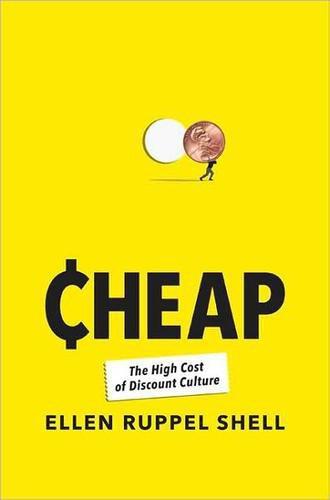
Cheap: The High Cost of Discount Culture
by
Ellen Ruppel Shell
Published 2 Jul 2009
Everything is about the economy now, just like everything was about politics in the Mao era, and forced labor or child labor is far from an isolated phenomenon. It is rooted deeply in today’s reality, a combination of capitalism, socialism, feudalism and slavery.” DONGGUAN , a boomtown in China’s industrial Pearl River Delta region, boasts steel and glass high-rises, staggering traffic jams, and the world’s biggest shopping mall. Dongguan lies a few hours’ drive north of Hong Kong in Guangdong, China’s most populated province and also its richest, thanks to the labor of roughly 30 million workers. Most of these are migrants, peasants from the neighboring provinces of Guangxi, Hainan, Fujian, Hunan, Sichuan, Guizhou, Yunnan, and Jiangxi.
…
Sellers of consumer goods of all kinds typically obscure the pedigrees of their products, making it difficult for consumers to know just what it is we are getting. Tracing the lead-painted Thomas the Train caboose to the Ohio-based RC2 Corporation, one would assume it was made in the American Midwest, not the Pearl River Delta. The same might be said for many other toy manufacturers. How are we consumers to know where our purchases come from when even Mattel’s iconic American Girl Doll is made in China? And the pricier the purchase, the more difficult it is to trace—be it to China, Vietnam, India, or Latin America.
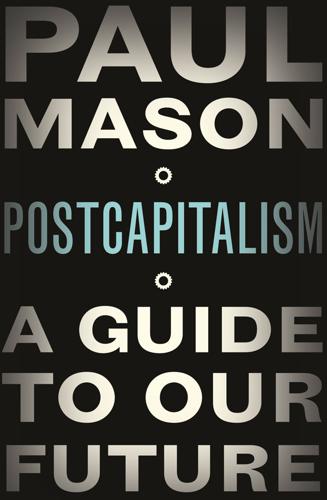
Postcapitalism: A Guide to Our Future
by
Paul Mason
Published 29 Jul 2015
Gell et al, ‘The Development of Single Crystal Superalloy Turbine Blades’, Superalloys, 1980, p. 205 5. http://www.mtu.de/en/technologies/engineering_news/others/Sieber_Aero_Engine_Roadmap_en.pdf 6. Data on the Balance Sheet, SAS Institute/CEBR, June 2013 7. P. Drucker, Post-capitalist Society (Oxford, 1993), p. 40 8. Ibid., p. 175 9. Ibid., p. 193 10. Y. Peng, ‘Internet Use of Migrant Workers in the Pearl River Delta’, in P.-L. Law (ed.), New Connectivities in China: Virtual, Actual and Local Interactions (Dordrecht, 2012), p. 94 11. P. Romer, ‘Endogenous Technological Change’, Journal of Political Economy, vol. 98, no. 5, pt 2 (1990), pp. S71–S102 12. Ibid. p. S72 13. Ibid., pp. S71–S102 14. http://www.billboard.com/biz/articles/news/digital-and-mobile/1567869/business-matters-average-itunes-account-generates-just 15.
…
Sennett, The Corrosion of Character: The Personal Consequences of Work in the New Capitalism (New York, 1998) 60. A. Negri and M. Hardt, Declaration, ebook, 2012, https://antonionegriinenglish.files.wordpress.com/2012/05/93152857-hardt-negri-declaration-2012.pdf 61. Y. Peng, ‘Internet Use of Migrant Workers in the Pearl River Delta’, Knowledge, Technology, and Policy, 21, 2008, pp. 47–54 PART III 1. G. Orwell, Nineteen Eighty-Four (London, 1949) 8. ON TRANSITIONS 1. A. Bogdanov, Red Star: The First Bolshevik Utopia (Bloomington, 1984), p. 65 2. http://www.marxists.org/archive/lenin/photo/1908/007.htm 3.

Among the Braves: Hope, Struggle, and Exile in the Battle for Hong Kong and the Future of Global Democracy
by
Shibani Mahtani
and
Timothy McLaughlin
Published 7 Nov 2023
Under Deng, the Communist country began a tentative experiment in modernizing its economy. The idea was for China to learn from the superior technology and modernity of the outside world, to “perfect” socialism by opening up on its own terms. For decades, residents watched as their neighbor across the Pearl River Delta reached higher and higher into the clouds while they remained on flat land. Embarrassingly for the Communist Party, people were still fleeing for Hong Kong in the late 1970s as they did during the Cultural Revolution. It was up to the party secretary of Guangdong, Xi Zhongxun, to help stem the outflow.
…
The Sun Yee On had directors and actors among their ranks, and other triad groups extorted film crews for protection money.2 There was little time to consider the implications of partnering. Even seconds made a difference when China’s sprawling security apparatus was hunting you down. Triad bosses quickly agreed to direct their seasoned smugglers and their sophisticated boats away from jewelry and watches, and instead ferry wanted dissidents across the Pearl River Delta. Arriving in Hong Kong was only the first step. Organizers knew it would be unwise for the wanted students to stay permanently, given that the colony would be handed back to China within the decade. They hoped to find sympathetic Western nations to take them in, but it was more difficult than they’d imagined.
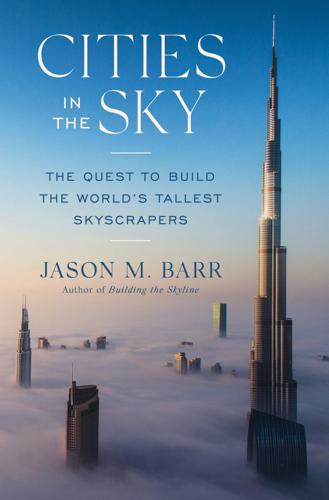
Cities in the Sky: The Quest to Build the World's Tallest Skyscrapers
by
Jason M. Barr
Published 13 May 2024
About one-third of Manhattan south of City Hall is made land. Today 6 percent of Hong Kong’s land is human-made, but more telling, however, is that 35 percent of its developed territory is landfill. The land issue, however, would fester to crisis proportions after World War II when the mainland Civil War caused major dislocations in the Pearl River Delta. With its housing stock in bad shape after the war, Hong Kong was ill prepared for the population tsunami that followed, when migrants began pouring in at a rate of 100,000 per month. By 1950, 300,000 squatters—one-quarter of the resident population—packed into shantytowns, which “spread like an unsightly rash around the permanent buildings of Victoria and Kowloon, filling the valley floors and mounting the steep hillsides,” recounts architectural historian Charlie Xue.
…
By 2020, 61 percent of its 1.4 billion people were living in cities. China’s cities—old and new—are growing to accommodate the ongoing influx. And, of course, urbanization in China means a very different thing than in the West. A “small” city in China will house 4 million people. The conurbation along the Pearl River Delta holds 78 million residents, as compared to 20 million for the New York metro area. Central government officials pore over maps and strategically erect new cities. As one example, the Communist Party is currently producing the infrastructure for a new metropolis outside Beijing, called the Xiong’an New Area, which is expected to hold 2.5 million people to house an SEZ to specialize in high-tech and green industries.

Age of Discovery: Navigating the Risks and Rewards of Our New Renaissance
by
Ian Goldin
and
Chris Kutarna
Published 23 May 2016
China’s urban population catapulted from about 200 million to almost 400 million people in four short, hectic years of transformation.48 China’s next urban boom began after 1992: Deng Xiaoping embarked on his historic Southern Tour of China’s southeast coastal region (during which he may have proclaimed, “To get rich is glorious”), solidified pro-market reforms as Communist Party dogma, and prompted an export-driven expansion that lured rural labor to the coast. Shenzhen, on China’s Pearl River Delta, became the modern-day Seville. A fishing village of some 10,000 people during the 1970s, it was anointed a Special Economic Zone in 1979 and reached 2.5 million inhabitants over the next decade. After the Southern Tour, growth leapt into a new gear: by the year 2000, Shenzhen’s population topped 8 million and by 2015, 10 million (or 15 million, counting migrant laborers).49 The story was repeated in dozens of other places, so that today over half of China’s population—nearly 800 million people—lives in its cities.50 In one generation, almost half a billion people—equal to the present population of the European Union—relocated.
…
It is not a question of if, but when, a pandemic will strike a major political, financial or industrial center and force its complete (albeit temporary) isolation from all physical flows in the global system—with hard-to-predict consequences for infrastructure services like energy and IT. But how can any large business avoid locating critical units in places like London, New York or China’s Pearl River Delta? The near-universal use of antibiotics and antimicrobials across the emerging global middle class, in everything from hospitals to cattle herds, is hastening nature’s development of resistant superbugs. And our growing connectedness is spreading them worldwide. One superbug, MRSA, has already become a persistent nuisance (and occasionally, a serious threat) in hospitals and nursing homes everywhere.
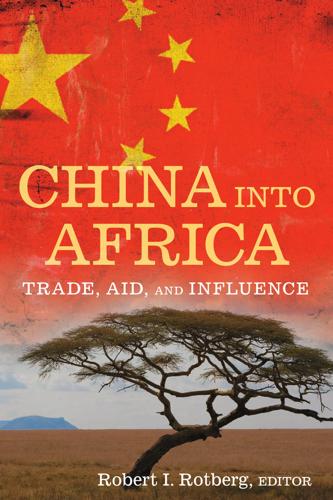
China into Africa: trade, aid, and influence
by
Robert I. Rotberg
Published 15 Nov 2008
The Hainan SEZ was the largest of the zones, including 6 cities and 13 counties with a total population of 7.4 million.1 Several other areas were targeted to attract foreign investment and joint ventures. In 1984, fourteen coastal cities were opened to outside investment, and in 1985 the same was done for coastal areas extending the economic zones of the Yangtze River Delta, Pearl River Delta, and South Fujian Triangle Delta. The designated SEZs had previously contributed less than 1 percent of China’s GDP, with a labor force engaged primarily in the agricultural sector. 07-7561-4 ch7.qxd 9/16/08 4:17 PM Page 139 Special Economic Zones 139 In 1980, Shenzhen’s GDP was RMB 270 million; Xiamen’s, RMB 375 million; and Shantou’s, RMB 889 million.
…
.- Niger Delta, 168; insurgency in, 277, China collaboration and, 308–09 281, 291, 308; Movement for the Noninterference doctrine, 7, 36, 55, 80, Emanicpation of, 178 130, 307; as Chinese foreign policy Nigeria, 6, 54, 272–93; apparel and, 107; philosophy, 56; Chinese support of, attacks against Chinese in, 178–79; 298; as CPC-ID principle, 232–33; balance of power and, 289–90; human rights abuses and, 264; polit- Cameroon conflict and, 175; as case ical outreach and, 236; in Sudan, study, 272–73; China model and, 305; in Zimbabwe, 37 287–89; China relationship and, North America, 102 274–78; Chinese goods in, 11; Chi- North China Sea Fleet, 180 nese immigrants in, 272, 280–82, North Korea, 17, 260; foreign aid and, 286–87, 292–93; Chinese technology 198 in, 35–36; Confucius Institutes in, North-South War (Sudan), 257–59, 304 29; corruption and, 301; debt relief Norwegian Initiative on Small Arms and, 302; FDI and, 106; geographic Transfers, 163 concentration and, 100–01; human Nyerere, Julius, 83, 146, 158, 273 rights and, 13, 290–93; light crude oil and, 115; market survey data, Obasanjo, Olusegun, 274–75, 290, 376; 282–86; military assistance and, 161, textile industry and, 280 167–68, 183; multinational invest- Obiorah, Ndubisi, 11, 272 ment and, 117; national security and, Official development assistance (ODA), 155; ODA and, 213; oil and, 4–5, 208–09; Chinese concessional loans 115, 118, 250; resentment of Chinese and, 222–23, 225–26, 227; estimating in, 279–81; SEZs and, 140, 147–48, amounts of, 210; West and, 213 151 Offshore exploration, 113 Nigerian Association of Chambers of Ogaden National Liberation Front, 179 Commerce, Industry, Mines, and Ogun State, Nigeria, 148 Agriculture, 275 Ohio University, 281 Nigerian Communications Commis- Oil, 88–89, 109–13, 110, 278; elites and, sion, 275 292; FDI and, 103–04; geographic Nigerian National Petroleum Company, concentration of trade and, 100; gov- 116 ernment management of, 114–18; Nigerian Telephony Project, 275 government-to-government assis- Nigeria Textile Manufacturers Associa- tance and, 109; human rights and, tion, 279 251, 254, 256; naval strategy and, Nnamani, Ken, 289 182; Nigeria and, 272, 275, 277–78, 16-7561-4 index.qxd 9/16/08 4:25 PM Page 333 Index 333 279, 281, 289; product distribution Peacekeeping operations, 176–78, 306; and, 99; refineries for, 250, 277–78; China and, 308; Sudan and, 257, 266 Sudan and, 256–57, 264; US-China Pearl River Delta, 138 relations and, 304–05; Zimbabwe People’s Daily (newspaper), 220, 225 and, 262 People’s Liberation Army (PLA), 162, Olympics, Beijing (2008), 2, 13, 68, 130, 165–67; naval strategy and, 184; 266; Darfur and, 12–13 South Africa and, 169; Zambia and, ONCC Videsh, 120 173; Zimbabwe and, 174–75 One-China policy, 211; Zambia and, Persian Gulf, 181, 184 143 Petrobras, 122 One-party states, 238–39, 242, 287 Petrodar, 257 Operation Gukurahundi, 260 Petronas, 256 Operation Murambatsvina, 260–61, 263 Political outreach, 230–43; cadre train- Opposition parties, 233, 235, 239–41, ing as, 237–38; under the CPC-ID, 242; CPC-ID strategy and, 238; in 232–35; as foreign policy, 230, Zimbabwe, 260–61 242–43; hospitality as, 235–37; infor- Organization for Economic Coopera- mation management as, 238; tion and Development (OECD), 208, National People’s Congress and, 302, 308; amount of Chinese foreign 241–42; to opposition parties, aid and, 210–11; ODA and, 213; soft 239–41; revolutionary ideology and, power and, 212 230–32 Organization for Petroleum Exporting Political parties, 230–43, 273; begin- Countries (OPEC), 118, 198 nings of outreach between, 230–32; Organization of African Unity, 156 opposition parties, 239–41; outreach Organization of European Cooperation in modern era, 232–35; outreach and Development, 9 methods and, 235–38; overview of Oshodi market, 281 outreach to, 242–43; visits by leaders, Ottawa Landmine Convention, 178 235–37 Poly Technology, 167 Pakistan, 165; foreign aid and, 199; Popular Movement for the Liberation of naval strategy and, 181–82; SEZs Angola (MPLA), 117–18, 157, 231, and, 140 238; military assistance and, 159 Pan-Africanist Congress, 156, 231 Port Harcourt, Nigeria, 179, 281 Paramilitaries, 254–55 Port Sudan, Sudan, 171 Pariah states, 263, 265 Portugal, 67, 116–17, 213 Paris Club debt, 277 Postcolonialism, 81–83, 298 Parliamentary exchanges, 241–42 Poverty, 288, 300, 307; China model Partido Frelimo, 23 and, 292, 298; conditional assistance Party of the Revolution (Chama Cha and, 288; elites and, 292; United Mapinduzi) (Tanzania), 237 States and, 304; in Zimbabwe, 260 Patel, Dipak, 72 Preferential loans.
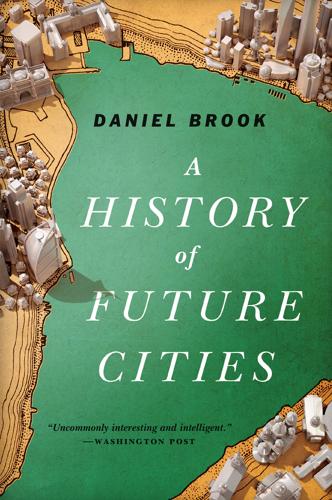
A History of Future Cities
by
Daniel Brook
Published 18 Feb 2013
The only product the British could find a market for in China was opium, a narcotic produced in their Indian empire that physically addicts its users, eroding their powers of free will. In the early nineteenth century, the limited trade the Chinese emperor permitted with the West was done through Canton (now Guangzhou), on the Pearl River Delta nearly one thousand miles south of Shanghai. Canton had historically been China’s international gateway. In the Middle Ages, Arab traders plowed its waters. With the rise of the West, first the Portuguese and later the Dutch, British, French, and Americans began trading with China through Canton.
…
Literally “buyer” in Portuguese, compradors were the Chinese fixers who helped negotiate the imperial bureaucracy and communicate with local contractors and customers. Compradors were typically Cantonese whose families had migrated to Shanghai as the new treaty port displaced China’s historic East-West exchange hub in the Pearl River Delta. There were clear racial hierarchies in the foreign city, a continuum with whites on top and Chinese on the bottom. Even after residential segregation broke down, with Chinese living in the foreign concessions, public places remained segregated by a system similar to America’s Jim Crow laws.
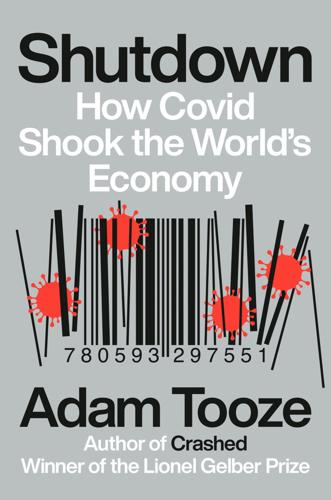
Shutdown: How COVID Shook the World's Economy
by
Adam Tooze
Published 15 Nov 2021
In 2019, Hong Kong was competing with Nasdaq and New York for the launch of the biggest initial public offerings of new shares.27 It was the third-largest dollar trading center, hosting 163 banks and 2,135 asset managers.28 The city’s growth, however, was highly lopsided. In the 1970s and 1980s, Hong Kong had been a manufacturing hub as well as a financial center. The opening up of the Pearl River Delta on Hong Kong’s doorstep had subjected the city’s light industry to ferocious competitive pressure. Surging real estate prices driven upward by buyers from mainland China and abroad added to a cost of living that left 20 percent of the population living below the official poverty line.29 Political and social discontent came together in a groundswell of anti-mainland sentiment, which exploded into open protest, first in the Umbrella Revolution of 2014 and then in a second wave of demonstrations in 2019.30 Beijing did not want a Tiananmen-style massacre in Hong Kong, but the clock was ticking toward elections to the LegCo in September 2020 and Beijing would not tolerate a strong showing from the opposition.
…
See also travel restrictions and slowdowns minimum wage, 290, 299 Mnuchin, Steve, 68, 71, 76, 120, 151, 222, 252–53, 261, 271–72 Moderna, 238–41, 245–46, 249, 289 modernization, 298–99 Modi, Narendra, 11, 87–88, 104, 135, 208 monetary policy, 113–23; and central bank interventions, 123–26, 126–30; and early responses to pandemic, 111–12, 223–24; and lessons of 2020, 294; Modern Monetary Theory (MMT), 13, 146, 183; monetization of debt and deficits, 145–47, 149–50, 203–4 Monetary Policy Committee (of the Bank of England), 125 Money Market Mutual Fund Liquidity Facility (MMLF), 129 Moody’s rating agency, 166, 257–58, 270 Moore, Stephen, 76 Morawiecki, Mateusz, 280 Moreno, Lenín, 8, 168 Morin, Edgar, 6 mortality rates of coronavirus pandemic, 28, 36–37, 37–41, 169, 171 mortgage-backed securities, 14, 113–15, 117, 122, 129, 144 mRNA technology, 244, 246, 289 Müller, Gerd, 264, 265 Munich Security Conference, 2, 70 Municipal Liquidity Facility, 129 Musk, Elon, 86 mutation of viruses, 17, 44–46, 250, 266, 285 mutual funds, 115, 117–18, 125, 127, 129, 143, 150, 202 N95 masks, 196 Namibia, 268 National Audit Office (Britain), 69 National Bureau of Statistics, 61–62 National Center for Immunization and Respiratory Diseases, 75 National Congress (Brazil), 171 National Health Commission (China), 50 National Health Service (Britain), 39, 85 National Institute for Health and Care Excellence, 39 National Institute of Health (Peru), 248 nationalism, 6, 11, 16, 20–21, 47–48, 68, 162, 185, 193, 297–98 Nationally Determined Contributions (NDCs), 190 National People’s Congress (China), 49, 56, 204 National Security Strategy, 18, 210 Navalny, Alexei, 247 Navarro, Peter, 68, 220–21 neoliberalism, 6, 10–11, 13–17, 20, 22, 132, 160, 304 Netherlands, 33, 104, 134, 179, 181, 186 New Arrangements to Borrow, 162 New Deal, 20, 105 New York City, 71, 80–81, 83, 90, 105, 220, 229 New Zealand, 138 Next Generation (NextGen EU) program, 12, 186, 189, 279–80, 282, 284–85, 302 Nigeria, 28, 88, 100, 132–33, 156, 233, 268 North Atlantic Treaty Organization (NATO), 70, 295 Norway, 33, 140, 243 Novavax, 239 Obama, Barack, 18, 46–47, 136, 177, 206, 210, 253, 275, 287–89, 300, 302 O’Brien, Robert, 218 Ocasio-Cortez, Alexandria, 20 oil and gas resources, 18, 79–80, 140, 161, 164, 204–5, 295 Olympic Games, 73, 88 Operation Warp Speed, 239–40, 303 Orbán, Viktor, 279 Organisation for Economic Co-operation and Development (OECD), 38, 138–40, 141–42, 144, 195, 281–82 Organization of the Petroleum Exporting Countries (OPEC), 79, 165 Oswaldo Cruz Foundation, 167 Overseas Private Investment Corporation, 263 Oxford University, 238, 239, 245–47 Pakistan, 83, 103, 197, 208–9, 256, 258, 263 Palin, Sarah, 226 Panama, 165 Pan American Health Organization, 167 Pandemic Emergency Purchase Programme (PEPP), 180–81 Paris Climate Agreement, 190, 193–94 Paris Club, 255, 255–56 Patrick, Dan, 39 Paycheck Protection Program (PPP), 140 Pearl River Delta, 198 Pegatron, 61 Pelosi, Nancy, 12, 222–23, 272–73, 276 Pence, Mike, 76 pension systems, 126, 266, 285 People’s Bank of China, 55, 160, 165, 188, 203–4 People’s Liberation Army, 247 People’s Political Consultative Conference, 49 personal protective equipment (PPE), 40, 66, 75, 135, 163, 196–97, 249 Peru, 158, 168–72, 198, 248, 268 Pfizer, 67, 234, 238–41, 244, 246, 248–49, 251, 289 Philippines, 11, 83, 106–7, 189 PIMCO, 146, 262 Piñera, Sebastián, 12 Poland, 279–80, 280–81, 283 polio, 30, 32, 235 “polycrisis” concept, 6, 81, 279, 288, 305 Pompeo, Mike, 68, 70, 218 populism, 3, 6, 12, 47–48, 77, 173, 179, 219, 269, 275, 280, 284 Portugal, 134, 177, 181 Powell, Jerome, 71, 76, 120–21, 123, 126–27, 130, 149, 220, 221, 272, 290, 291 Primary Market Corporate Credit Facility (PMCCF), 127 public health systems, 30, 45, 134 Putin, Vladimir, 11, 67, 295 Qatar, 267, 295 Quality-Adjusted Life Years (QALYS), 39 quantitative easing (QE), 126, 145–49, 154, 178, 203, 275 quarantines: and California wildfires, 189; in China, 52, 54, 57–59; and cruise ships, 106–7; and early responses to pandemic, 66; and economic impact of pandemic, 43; and influenza, 30; and “lockdown” term, 10; in Northern Italy, 71–72; and “polycrisis” concept, 7; “quarantine gate,” 58; and role of the WHO, 32; and short-time working, 103–4; in South Korea, 80; in Spain, 85; and Trump’s failures of leadership, 81; in UK, 84.
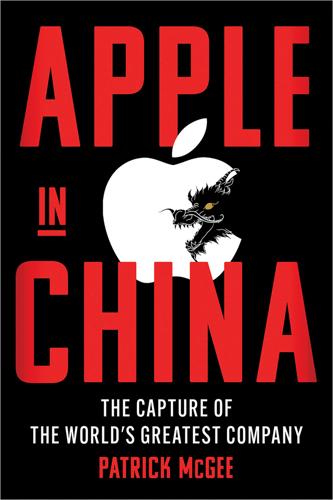
Apple in China: The Capture of the World's Greatest Company
by
Patrick McGee
Published 13 May 2025
An internal “attrition memo” corroborates this, saying: “Worker exit rates at Pegatron Shanghai averaged 6% per week, and average tenure was only 68 days.” Finding that amount of labor was becoming increasingly difficult as smartphone production consolidated into China in general, and into the Pearl River Delta area in particular. Apple, through its suppliers, was in competition for labor with emerging Chinese brands Xiaomi, Vivo, and Oppo, as well as Korea’s Samsung. All these suppliers depend on an ecosystem of labor brokers who take empty buses out to villages in the interior of China, where they recruit workers.
…
Norton, 2018, 301. “$2 billion in nickels and dimes”: Dean, “The Forbidden City of Terry Gou.” Chapter 9: The Silicon Valley of Hardware—“Foxconn isn’t called ‘Fox-con’ for nothing” “Third World costs”: Michael J. Enright, Edith E. Scott, and Ka-mun Chang, Regional Powerhouse: The Greater Pearl River Delta and the Rise of China. Singapore: Wiley, 2005. The ODM/OEM difference has a blurry parallel to the world of semiconductors. An ODM is more like Nvidia and Qualcomm, whose prowess is in chip design, not manufacturing; an OEM is more like TSMC, which operates a foundry to produce, or “fabricate,” a chip.
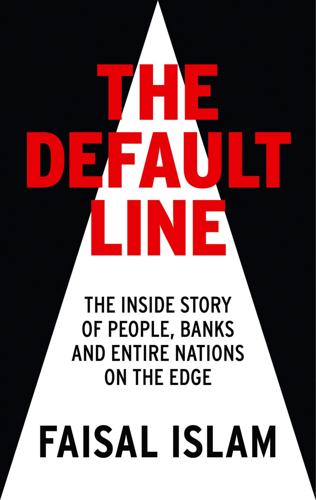
The Default Line: The Inside Story of People, Banks and Entire Nations on the Edge
by
Faisal Islam
Published 28 Aug 2013
It’s a long journey repeatedly taken by Deng Zhi, a 24-year-old migrant worker. Since the age of 17, he has been regularly making this twenty-six-hour journey from farm to factory. Typically that has meant working twelve-hour days, six days a week, at an electronics factory in Dong Guan, on the Pearl River Delta. Deng Zhi is paid the equivalent of £100 a month. ‘How much can you earn from farming?’ he asks himself. ‘Working in the cities, you make at least 1,000 renminbi [£100] a month. How many kilos of rice can you buy with this money? It just doesn’t pay to farm.’ Of his £100 factory wages, Deng Zhi sends back about £30 to his family to pay for health, education and pensions, none of which are adequately provided by the state.
…
In a letter to Queen Victoria in 1839, Lin Zexu wrote: ‘The wealth of China is used to profit the barbarians… By what right do they then in return use the poisonous drug to injure the Chinese people?’ The British remained deaf to his appeals, and in June 1840 an expeditionary force of barracks ships, gunboats and smaller vessels carrying 4,000 sailors and marines arrived in the Pearl River Delta, so launching the First Opium War. The Chinese have not forgotten this humiliation. The original pits where British opium was seized and burnt are still maintained in Dong Guan, itself now a symbol of Chinese global trade, alongside a statue of Lin Zexu. In 2010, the Chinese government even objected to David Cameron wearing the unrelated Remembrance poppy on his lapel during a trade visit to China.
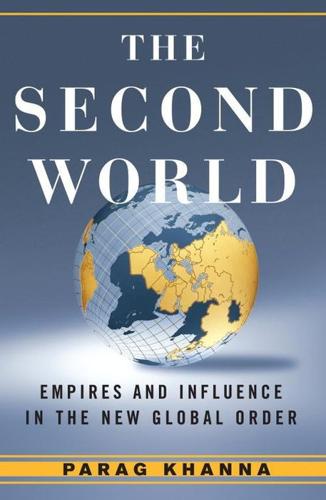
Second World: Empires and Influence in the New Global Order
by
Parag Khanna
Published 4 Mar 2008
The fifty-five million overseas Chinese, mostly settled in the Asian periphery, are the demographic equivalent of climate change: imperceptibly advancing, knowing no boundaries, and affecting everyone.5 Organic Chinese links are rekindling across political borders, fueling a demographic blending no less significant than that of the Americas or across the Mediterranean. Historical ties between China’s northeast and South Korea and Japan, the Pearl River delta region and Hong Kong, the Yangzi River delta and Taiwan, and the southeast and the greater Mekong subregion all form natural economic territories that transcend peace and conflict.6 China’s massive gender imbalance (stemming from the one-child policy and pronounced boy bias) has led it to import women from Vietnam and North Korea, further diluting diverse bloods into a Chinese-based mongrel race.
…
In 1997, when the “last British colony surrendered to the last Communist tyranny,” in the words of the island’s final British governor, Chris Patten, China was gifted this global financial capital where now less than one in ten people work in manufacturing despite an annual export value greater than India’s or Russia’s. Land reclamation on both Hong Kong island and mainland Kowloon have narrowed the grand Victoria Harbor between them—a symbol for the closing gap between Hong Kong and the upper Pearl River delta cities of Shenzhen and Guangzhou (Canton), which together form the wealthiest Chinese region.45 The delta was Britain’s entrepôt on the maritime Silk Road, and now it is the channel on which ancient Yueh cities have reclaimed modern glory as export-processing zones. In nearby Macao (China’s own Las Vegas) and Hainan Island, Chinese mega-infrastructure projects are paving the way for Taiwanese, Korean, and Hong Kong investors to build hugely profitable hotels and resorts; buy up real estate; and launch low-cost airlines to ferry Chinese there from all over the mainland, while Beihai offers an ideal location for the coastal trade with Vietnam.
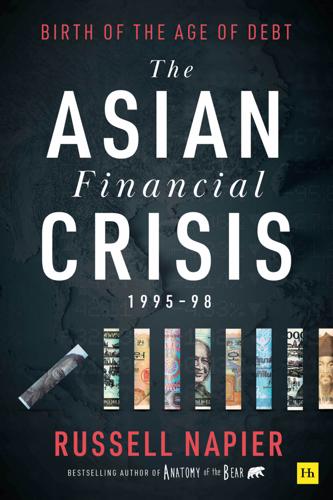
The Asian Financial Crisis 1995–98: Birth of the Age of Debt
by
Russell Napier
Published 19 Jul 2021
One of the world’s great bull markets took place in Hong Kong from 1969 to 1971. The PE multiple of the market reached almost 100× as the equity market rose 16.5× in a spectacular liquidity-driven bull run. Meanwhile, just a few miles north, the worst excesses of the Cultural Revolution roared on, and across the Pearl River Delta the government of Portugal offered to evacuate Macau! The social and economic disintegration of the PRC occurred as equity prices surged in Hong Kong. Currently, consensus sees a political, social or economic disintegration in Indonesia as leading to a higher ‘Asia’ risk premium and thus producing a further setback for Asia’s recovery.
…
This business of capital inflow and capital outflow was not just about the dance of figures across a Bloomberg screen. The Investors’ Forum was an exhausting affair consisting of about eight one-hour meetings in a day and client entertainment in the evenings, and it lasted for four days. When it ended we retreated across the Pearl River Delta to the still fairly sleepy Macau and the old Bella Vista hotel. With Macau to be handed back to the PRC in December 1999, the hotel was to close and become the residence of the Portuguese consul general. Macau was not to stay fairly sleepy. It now takes in more at the gambling tables than Las Vegas.
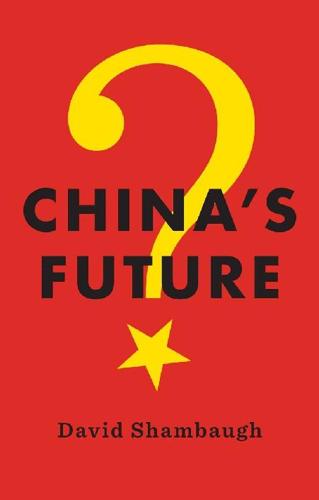
China's Future
by
David Shambaugh
Published 11 Mar 2016
The sheer magnitude of China’s cities is hard to grasp. Today there are five cities with a population over 10 million; fourteen cities over 5 million; and 41 cities of 2 million or more.33 By 2025, McKinsey & Company estimates, 46 of the world’s 200 largest cities will be in China.34 There are plans to turn the greater Pearl River Delta—including Guangzhou, Shenzhen, and Zhuhai—into one enormous megacity () of 42 million people,35 and the Beijing-Tianjin-Hebei triangle (known as Jing-Jin-Ji) into an even larger one covering 82,000 square miles and a total population of 130 million people.36 The new strategy to create megalopolises is a shift from just a few years ago when the government’s priority was to develop small and medium-sized cities.37 Creating “ecocities” and “green urbanization” are another part of the government’s plan—an appropriate goal given the environmental catastrophe that besets many Chinese cities.
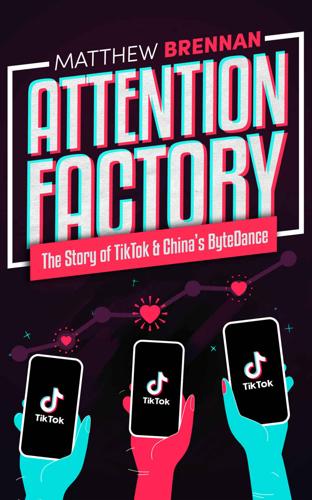
Attention Factory: The Story of TikTok and China's ByteDance
by
Matthew Brennan
Published 9 Oct 2020
Yiming’s mother was a nurse, and his father was a member of the local city science and technology commission, who often discussed the latest technologies at home. Yiming’s father, Zhang Hanping, would later resign from his position to try his luck in the booming “workshop of the world,” the Pearl River Delta, 300 miles southwest. He set up an electronics factory in the gritty industrial city of Dongguan, close to Shenzhen and Hong Kong. This business’s income ensured that Yiming would be well taken care of despite being born and raised in a modest countryside environment. While not wealthy, his family was commonly described as being “comfortable.”
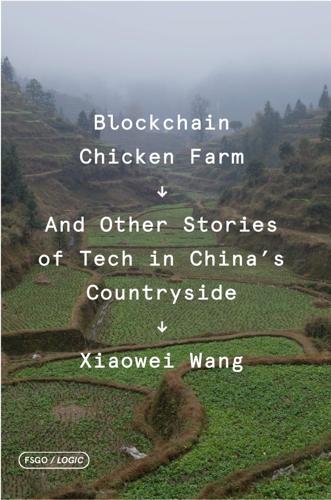
Blockchain Chicken Farm: And Other Stories of Tech in China's Countryside
by
Xiaowei Wang
Published 12 Oct 2020
I feel flushed with embarrassment as I place the bird back on the windowsill, but I keep knocking it over during the rest of my visit. During the stirrings of the Chinese economic boom in the 1990s, my uncle helped run an import-export business that sold millions of small birds like these. My uncle would frequently fly from the Pearl River Delta to the United States for trade shows, bringing sample boxes of fake birds, fake flowers, small baskets, little Styrofoam mushrooms and gnomes. He’d stay with my family for a few days, enjoying my mother’s cooking instead of the American fast food available on the road. Sometimes he would leave extra boxes of these trade show samples with us, no longer useful once deals were made.
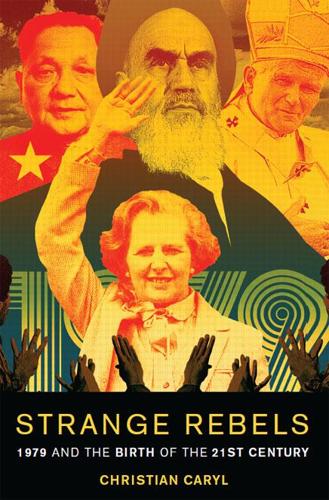
Strange Rebels: 1979 and the Birth of the 21st Century
by
Christian Caryl
Published 30 Oct 2012
The direct proximity of Hong Kong, whose population included many Cantonese-speaking refugees from Guangdong, meant that the province still had access to an extensive web of contacts with the outside world, including the huge network of overseas Chinese. All this meant that a certain amount of illegal trade had continued even during the darkest days of Maoism. (Indeed, considering the huge and intricate possibilities for smuggling offered by the Pearl River delta, the gateway to Guangdong, it could have hardly been otherwise.) Many Guangdong residents received remittances from their relatives in Hong Kong or places more distant, and these funds were a major source of revenue for a region that had otherwise been severed from its natural trading hinterland after 1949.
…
The border guard hands you your passport, and you step across onto the mainland—or, to be more precise, the city of Shenzhen, which introduces itself as a warren of neon-lit shops offering everything from knock-off designer goods to toy helicopters to Mont Blanc fountain pens, all of it on sale right there in the same sprawling immigration building. Much of what you see was made here. Today, by one estimate, Shenzhen and the surrounding Pearl River delta boast a larger manufacturing workforce than the entire United States. Its factories churn out everything from exercise equipment to iPods; by 2005 Shenzhen boasted the world’s fourth-busiest port and one of its biggest stock exchanges. As you roam the city, you will marvel at the traffic jams, the infectious energy of the bustling crowds, the immense shopping centers selling the latest cell phones and computers.
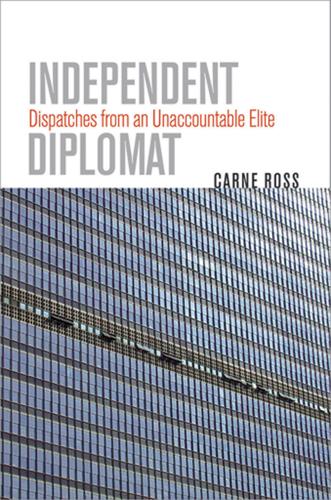
Independent Diplomat: Dispatches From an Unaccountable Elite
by
Carne Ross
Published 25 Apr 2007
Perhaps even our emotions are not immune, given the omnipresent and insidious effects of our economic, cultural and physical environment. Globalisation has done for the notion of locality what the internet has done for the paper letter. All politics is international. The spread of global markets and global production has made us familiar with how jobs in south Wales or Pennsylvania are affected by wage levels in the Pearl River Delta. But how is it that a subsidy for cows can affect immigration? (The answer is that agricultural subsidies in Europe and the US reduce export earnings in developing countries, and thus income and employment levels, thereby increasing pressures for migration, legal or, more often, illegal.) Plans for your retirement can be affected by your employer’s need to reduce pensions in order to keep costs as low as its Chinese or Korean competitors (as General Motors has discovered).1 In the European Union food standards require your morning boiled egg to be of particular colour and shape.
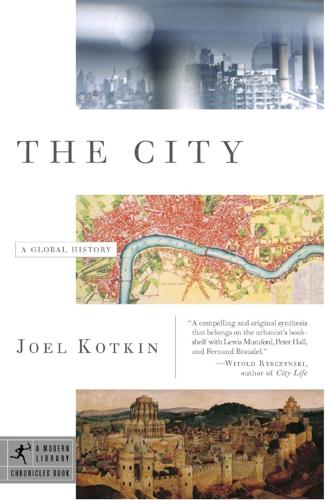
The City: A Global History
by
Joel Kotkin
Published 1 Jan 2005
Local officials now encouraged private initiative and outside investment. The creation of special economic zones, such as that in Shenzen between Hong Kong and Canton, attracted the largest amounts of foreign capital, much of it from Hong Kong, Taipei, and Singapore. Within fifteen years, the area around the Pearl River Delta had become much like the British Midlands in the mid-nineteenth century, not only the “country’s workshop,” but rapidly the workshop of the world.27 Arguably more so than at any time in Chinese history, the country’s cities now assumed primacy as central places in the national life. Freed from strict controls on their movements and seeking new opportunities, rural migrants streamed toward the cities by the tens of millions.

White City, Black City: Architecture and War in Tel Aviv and Jaffa
by
Sharon Rotbard
Published 1 Jan 2005
Other red lines can be thrown down – what does it mean to build in the Occupied Territories, or for the army, or for corporations, or within the framework of problematic projects such as ‘evacuation & construction’? It is important to note that these questions are relevant not only in Israel. The wild urbanism taking place in China, for example, as described by Rem Koolhaas in his study of the new cities being created in the Pearl River Delta, asks difficult ethical questions given that these projects demand the transfer of hundreds of thousands, maybe even millions, of inhabitants from their homes.236 This is just one of an endless index of examples to choose from. Clearly simplistic divisions into black and white are not always useful in this context and establishing the dichotomy between innocent and guilty does not help tackle the issues at hand.
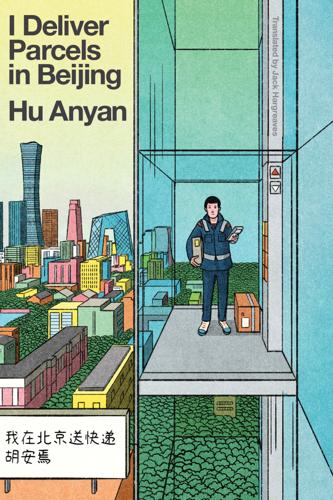
I Deliver Parcels in Beijing
by
Hu Anyan
The village was originally called Luokeng—this I discovered when I came across the discarded plaque of an old house. Changing the village’s name from one that included the word for “pit” to one that suggested “luck” or “prosperity” felt dishonest somehow. But I can appreciate the locals thinking that calling their hometown a pit might hurt trade. Imagine you’re a small business owner in the Pearl River Delta wanting to spruce up your office with some lucky bamboo; plants from Luoheng Village are going to be much more appealing than those from Luokeng. The thing was, living in Luoheng was inconvenient. There wasn’t a supermarket there, or a hairdresser, or restaurant, just two convenience stores that had a small range of products.
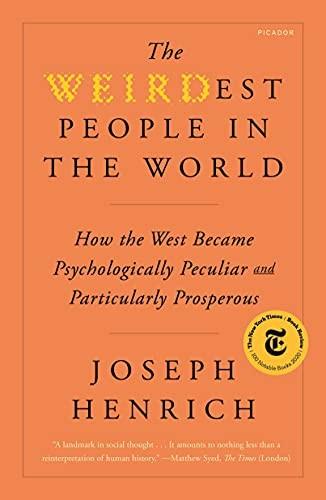
The WEIRDest People in the World: How the West Became Psychologically Peculiar and Particularly Prosperous
by
Joseph Henrich
Published 7 Sep 2020
Over about 800 years, this resulted in the gradual spread and intensification of patrilineal clans in various regions of China, but particularly in regions with the greatest potential for paddy rice. By the early 20th century, clans corporately owned about a third of the cultivated land in Guangdong Province and roughly 44 percent in the Pearl River delta.10 Today, China’s provinces vary dramatically in the amount of agricultural land devoted to paddy rice (Figure 7.5). Moving from the south to the north, regional populations gradually decrease their reliance on paddy rice while increasing their cultivation of other staples, such as wheat and corn.
…
Muthukrishna, Michael mutual aid mutual monitoring mutual obligations Nairobi Napoleon Bonaparte natural disasters natural philosophers natural rights natural selection; CREDs and; cultural evolution and; cultural learning and navigation neolocal residence nepotism Nestorian Christianity Nestorian Church Netherlands neurocognitive functioning neurological diversity neuroticism Newcomen, Thomas New Guinea New Ireland New Spain Newton, Isaac New World New York City New York Stock Exchange New Zealand Nggwal Bunafunei Ninety-Five Theses (Luther) Ningxia Nisbett, Richard nonconformity nonrelational institutions nonrelational morality nonrelational responses nonreproductive sexual activity Norenzayan, Ara normative standards norm-breakers norm-violators Norway novel animals nuclear family; children and; gradual creation of; kin-groups breaking down into; with neolocal residence Nuer nutrition obedience obligations occupational specialization Oceania “Of the Influence of Commerce on Manners” (Smith) Old Bailey Old High German Old Poor Law of 1601 Old World one-child policy Onorato, Massimiliano Gaetano orchestrated teamwork effect organizational norms organizational policies Oriental Church Oromo peoples Orthodox Church, see Eastern Orthodox Church other-esteem Otto I Out-In-Group Trust ownership paddy rice Paik, Christopher Paine, Thomas pair-bonding; bird species and; inbreeding avoidance and; instincts; monogamy and; polygynous Pakistan Paleolithic societies papal decisions papal privilege papermaking Papin, Denis parasite stress parenting parent-to-child transmission Parisian Royal Academy of Sciences participatory formal institutions participatory governance particularism particularistic responses Pashtun Passenger’s Dilemma pastoral societies paternity path-dependence patience; cultural evolution and; diffusion of; global distribution of; incentivizing; intensive kinship and; market integration and; measures of; shift in patriarchal patrilineages patriarchal power patrilineal clans patrilineal families patrilocal residence pattern recognition peace Peace of Augsburg peace treaties Pearl River delta peer-punishing opportunities Penn, William People’s Republic of China perjury permanent ties personal attributes personal identity personality personality psychologists personal mobility Peruvian Amazon Petition of Right petroleum PGG, see Public Goods Game Philadelphia Philippines Philosophical Transactions of the Royal Society (journal) pig rearing Pinochet, Augusto plagiarism plague plant growth pocket watches poison polarization political centralization political institutions political integration political legitimacy political organization political parties political pluralism political power political units polyandrous marriage polyandry polygamous marriage polygamy polygynous marriage; children and; Hadza hunter-gatherers and; intergroup competition and; legal; low-status unmarried men and; women and polygynous pair-bonding polygynous societies polygyny; excess men created by; social dynamics of polygyny bias Polynesia Polynesian gods Pontius Paulinus population growth population-level differences pornography positive-sum thinking poverty prayer times pre-Christian Europe pre-Columbian period prefrontal cortex preindustrial world premarital labor period premodern states; clans and; formation of; kin-based institutions and; WEIRD societies and prestige-biased group transmission Principia (Newton) printing press private businesses private contracts private security property rights prostitution Protestantism; capitalism and; Cistercian Order and; Counter-Reformation and; democratic governance and; diffusion of; economic growth and; economic prosperity and; forms of; incest and; individualism and; Industrial Revolution and; literacy and; missionaries; origins of; Prussia and; Reformation; self-regulation and; sola scriptura and; spread of; suicide inducing effects of; Switzerland and; WEIRD psychology and Prussia psychological adaptations psychological by-products psychological changes psychological differences psychological diversity psychological fit psychologically-potent rituals psychological shifts psychological tethering psychological variation; China and; within Europe; global; India and; in individualism; Industrial Revolution and; patterns of psychology; food availability and; institutions and; kin-based institutions and; see also human psychology public goods Public Goods Game (PGG); average contributions in; China and; cooperation in; cousin marriage and; noncompetitive; Switzerland and public knowledge public services punishment; based on mitigating factors; collective; for crimes in China; gods and; informal; intensive kinship and; marriage and; of peers; supernatural; threat of; types of; see also Third-Party Punishment Game purgatory Puritan New England Pythagoras’s theorem Al Qaeda Qinghai Quakers racism RAG, see Random Allocation Game raiding Random Allocation Game (RAG) rationality reading refugees regulated-relational societies; kin-based institutions in; self-control; shame and relatedness relational contexts relational freedom relational mobility relational networks relational responses relationship-based norms religions, evolution of religiosity religious architecture religious beliefs; earthquakes and; economic productivity and; intergroup competition and; rituals and; sharing; shocks on religious convictions religious faith religious groups; intergroup competition and; war and remarriage Renaissance representative governance representative government Republic of Letters reputation; collective; judgments of; social norms enforced by; standards of residential mobility revenge-related actions revenge-seeking Revolutionary War rhythmic music Ricard, Samuel rice cultivation; China and; India and; intensive kinship and; psychological differences and; self-focus and Richardson, Gary Rights of Man (Paine) risk-taking rites of terror ritually-bonded young men rituals; ancestor gods and; attendance at; character of; communal; dance and; doctrinal; imagistic; initiation; intergroup competition and; internal harmony and; major; obligations of; psychologically-potent; religious beliefs and; social norms and; violation of; women and Robinson, James Rod and Frame Task Roebuck, John Roman Catholic Church, see Western Church Roman Empire; brothels and; Holy; kin-based institutions and; law of; Western Roman law romantic love Rome (ancient) Rousseau, Jean-Jacques routine practices Royal Exchange rubber boom ruggedness rule-based categories rule of law rural populations Rustagi, Devesh Salali, Deniz salvation Samburu Samoans Satan Saudi Arabia Savery, Thomas scale of cooperation scaling up Schulz, Jonathan Scientific Revolution Scotland Scottish Enlightenment second-generation immigrants secular primes secular rulers sedentism segmentary lineages; clans and; egalitarian societies and; Scotland and self-concepts self-control; diffusion of; influences on; intensive kinship and; shift in self-discipline self-enhancement self-esteem self-focus Self-focus Task Self Game self-governance self-government self-interest self-interested benchmark self-obsession self-regulation; incentivizing; Industrial Revolution and; marriage and; Middle Ages and; Protestantism and; psychological shifts and Sepik communities sexual attraction sexual jealousy sexual repulsion sexual slavery Al Shabab Shamash shame; collective; experiences of; guilt and; KII and; Matsigenka and; regulated-relational societies and shared identity shared interests Shariff, Azim Sharing Game shipbuilding Sicily Sierra Leone; civil society in; war exposure in silent trade sinners slavery slaves Slingerland, Ted small-scale religions small-scale societies small-scale tribal populations Smith, Adam social devaluation social expectations social incentives social interdependence sociality social networks; broad; building; dense; intensive kinship and; newly formed; organization of; relationships not in social norms; adhering to; apprenticeship and; clans and; complementary; cultural evolution and; culturally transmitted; distinct; enforced by reputation; impersonal interaction and; impersonal prosociality and; impersonal suite of; intensive kinship and; internal harmony and; marriage and; outcomes of; ritual and; violation of; violators of; war and social relationships social safety nets social skills social technologies social ties societal complexity societal evolution societal-level institutions sola scriptura solidarity; Durkheim on; fostering; in-group; of voluntary associations; war and sororate marriage Southeast Asia South Korea South Pacific sovereignty Spain; Islam and; southern speech processing Spencer, Archibald spinning mule spinning wheel Spirit of the Laws, The (Montesquieu) Środa state bureaucracies state-level institutions steam engine stock traders Stone Age populations stratification stress responses striatum Sudan suicide Suleiman the Magnificent Sunday effect supernatural beings: cultural evolution and; desire to serve; mentalizing abilities and; shared beliefs in supernatural beliefs; cultural evolution and; development of; pushing past; sharing supernatural surveillance super-tribes surplus boys surplus men Sursurunga surveillance Swan, Joseph Sweden Switzerland; participatory governance and; PGG and; Protestantism and symbolically-marked ethnic groups synchronous dance synchrony Synod of Hertford Synod of Neocaesarea taboos; broad-ranging; broken; food; imposition of; Ju/'hoansi, against incest; marriage and; MFP and; see also incest Tajik ethnolinguistic group Tajikistan talents Talhelm, Thomas Tambaran Tambaran gods Tambaran spirit house Tanzania tax collection team sports technologies; increasingly sophisticated; social temporal discounting temporal systems terminological systems testosterone; between-group competition and; boost; Christianity and; suppression of; trustworthiness evaluations and; WEIRD societies and Teutonic Knights theft Theory of Moral Sentiments, The (Smith) third-party norm enforcement Third-Party Punishment Game Thöni, Christian 300 rule Tierney, Brian tightness of societies Tilly, Charles time-related technologies time thrift; global variation in; High Middle Ages and; incentivizing Tocqueville, Alexis de Tongans “To the Councilmen of All Cities in Germany That They Establish and Maintain Christian Schools” (Luther) town councils town privileges trade; family-based organizations; Islam and; long-distance; silent; state bureaucracies and traditional societies traditions training regimens Traité Genéral du Commerce (Ricard) trance dance Triad Task tribalism tribal organizations tribal psychology Trinidad and Tobago trust; broad; China and; evaluations; impersonal; without impersonal trust; motivations for; variation in; see also impersonal trust Tsimane' peoples Turkey Tuzin, Donald Twelve Apostles (New Spain) Uganda Ukraine Ultimatum Game (UG) unfairness unilineal descent unilineal kinship institutions Unitarianism United Nations United States; belief in ghosts in; Bill of Rights; conformity and; Constitution; Declaration of Independence; economic growth and; evangelical churches and; Matsigenka and; South; state-funded education and; trust and Universal Declaration of Human Rights universalistic responses universalizing faiths universalizing religions universal morality; Christianity and; demanding; intensive kinship and; Western Church and; see also moral universalism universities; collective brain and; Middle Ages and; new; spread of University of Oxford University of Paris unpaid parking tickets urban centers; invention and; Middle Ages and; spread of urban charters urban clusters Urban II (Pope) urban incorporations urban interconnectedness urbanization; economic growth and; economic prosperity and; estimates for; Europe and; evolution of; High Middle Ages and; intensive kinship and; Islam and; occupational specialization and; rates; rise of; war and; WEIRD-5 personality dimensions and; widespread Urubamba River van Ypersele, Tanguy Vatican vegetarians ventral occipito-temporal region verbal memory Veronesi, Marcella Viking raiders village-level gods virtues Visigoths visual processing Voltaire voluntary associations; Black Death and; bonds among; competition and; in High Middle Ages; Japan and; proliferation of; in rural regions; solidarity of; spread of voluntary blood donations voluntary organizations; competition among; proliferation of voluntary social groups von Rueden, Chris voting vulcanized rubber wage labor walking speed war; China and; Christianity and; crimes; economic prosperity and; endemic; Europe and; experience of; exposure in Sierra Leone; human psychology and; impact of; individuals affected by; psychological impacts of; religious groups and; rural populations and; social norms and; solidarity and; urbanization and; violence related to; see also specific wars water mills Wathaurung tribe Watt, James Watts, Joseph weak family ties Weber, Max WEIRD-5; personality dimensions; traits highly genetically heritable; urbanization and WEIRD institutional frameworks WEIRD populations; intergroup competition and; isolation of WEIRD prosociality WEIRD psychology; aspects of; collective brain and; creation of; cultural; cultural evolution and; cultural evolutionary pathway of; emergence of; Europe and; genetic evolution and; High Middle Ages and; increasingly; individualism and; innovation and; key elements in; origins of; peculiarity of; Protestantism and; proto-; Western Church and WEIRD religion WEIRD science WEIRD societies; families in; immigration to; institutions acquired from; nonstudent adults in; premodern states and; testosterone and Western Church (Roman Catholic Church); competitors of; conformity and; cousin marriage and; domination by; Eastern Orthodox Church difference with; expansion of; exposure to; footprints of; High Middle Ages and; incest and; independence and; individualism and; indulgences and; influence of; intensive kinship and; kin-based institutions and; literacy and; marriage and; missionaries; modern European languages and; package of prohibitions; papal decisions; universal morality and; unusual nature of; WEIRD psychology and Western Empire Western Law Western Roman Empire what-cues Whitehurst, John who-cues Why Nations Fail (Acemoglu and Robinson) Wilkinson, John William of Ockham William the Conqueror windmills within-group competition Woessmann, Ludger women; literacy and; marriage and; menopause and; Nggwal Bunafunei; polygynous marriage and; rituals and Woodburn, James World Health Organization World Values Survey World War II writing systems Wycliffe, John yam-growing contests Yasawa Island Yiddish yourmorals.org zero-sum zero-sum competition zero-sum thinking Zimbabwe Zoroastrianism Zulu peoples Zwingli, Ulrich ALSO BY JOSEPH HENRICH The Secret of Our Success: How Culture Is Driving Human Evolution, Domesticating Our Species, and Making Us Smarter Why Humans Cooperate: A Cultural and Evolutionary Explanation (with Natalie Henrich) A NOTE ABOUT THE AUTHOR Joseph Henrich is the author of The Secret of Our Success: How Culture Is Driving Human Evolution, Domesticating Our Species, and Making Us Smarter, among other books.
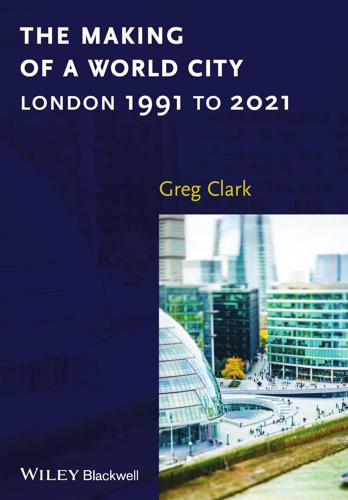
The Making of a World City: London 1991 to 2021
by
Greg Clark
Published 31 Dec 2014
Investment from Europe, North America and the Middle East still flows heavily into these two cities, not least because of their proximity to a rapidly expanding Asian middle class. Singapore is now a world-class research hub, and the only world city consistently positively evaluated for its commuting experience, health and security outcomes. Hong Kong’s access to the manufacturing hinterland of the Pearl River Delta and to the wider Chinese economy makes it a uniquely attractive professional and producer services gateway. The success of Singapore and Hong Kong has not yet, however, come at the expense of the historic ‘big four’ – London, New York, Paris and Tokyo. Established global centres have cemented their position within national and regional urban hierarchies during the economic slowdown; their diverse concentrations of skilled labour have been disproportionately attractive to risk-averse private sector organisations.
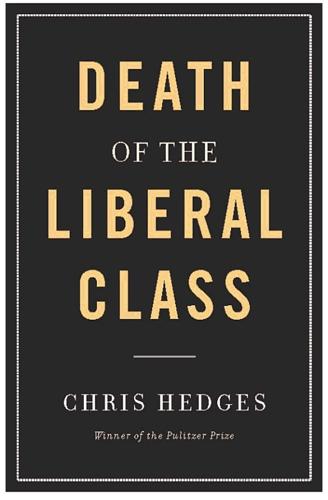
Death of the Liberal Class
by
Chris Hedges
Published 14 May 2010
Unpaid pensions and wages, defaults on medical subsidies, and inadequate collective consumption are the main grievances triggering labor unrest in Liaoning.”5 In the southern province of Guangdong, China’s export-oriented industry is booming. The province in 2000 accounted for forty-two percent of all China’s exports, 90 percent of which came from eight cities in the Pearl River Delta. The area attracts many of China’s eighty to one hundred million migrant workers. But here Lee found “satanic mills” that run “at such a nerve-racking pace that workers’ physical limits and bodily strength are put to the test on a daily basis.”6 Workers can put in fourteen- to sixteen-hour days with no rest day during the month until payday.

Norman Foster: A Life in Architecture
by
Deyan Sudjic
Published 1 Sep 2010
The journey revealed the sometimes counterintuitive contrasts between the nature of public life in an advanced capitalist society and what, despite a massive economic transformation since the death of Mao, still declares itself to be a Marxist state guided by a socialist ideology. For all the neon glitter of the new cities on the Pearl River Delta, China is still fractured between extremes of poverty and absurd over-indulgence. Yet it was not Beijing’s Capital International Airport that felt on the edge of chaos but Terminal Four in London, one of the world’s richest cities. Terminal Four has become a place where flight disruptions regularly leave thousands of delayed passengers camping outside the departure gates.
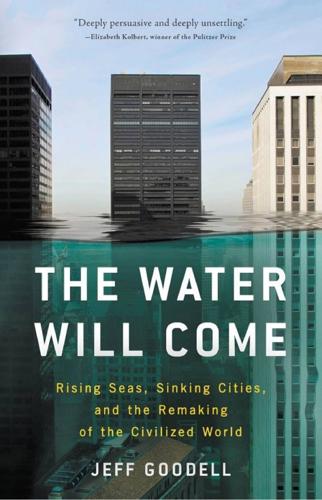
The Water Will Come: Rising Seas, Sinking Cities, and the Remaking of the Civilized World
by
Jeff Goodell
Published 23 Oct 2017
There is also the question of complacency. Walls, dikes, and levees make people feel safe, even when they are not. When Hurricane Katrina hit New Orleans, many people didn’t evacuate because they assumed the levees would not fail; that assumption cost some people their lives. In 2008, when a typhoon hit China’s Pearl River Delta, one third of the granite seawalls in Zhuhai crumbled, letting water flood into the city. “Walls often make people stupid,” said Richard Jorissen. “They allow you to ignore the risk of living in dangerous place—if something goes wrong, it can be a catastrophe.” There were other, less brutal ideas for how to protect Lower Manhattan.

This Changes Everything: Capitalism vs. The Climate
by
Naomi Klein
Published 15 Sep 2014
As if it was not our governments and our multinationals that pushed a model of export-led development that made all of this possible. It is said as if it were not our own corporations who, with single-minded determination (and with full participation from China’s autocratic rulers), turned the Pearl River Delta into their carbon-spewing special economic zone, with the goods going straight onto container ships headed to our superstores. All in the name of feeding the god of economic growth (via the altar of hyper-consumption) in every country in the world. The victims in all this are regular people: the workers who lose their factory jobs in Juárez and Windsor; the workers who get the factory jobs in Shenzhen and Dhaka, jobs that are by this point so degraded that some employers install nets along the perimeters of roofs to catch employees when they jump, or where safety codes are so lax that workers are killed in the hundreds when buildings collapse.
…
(Werner), 449–50 Ishpingo oil field, 410 island states, low-lying, 12 Istanbul, 23, 157 Italy, 65, 154, 225 Ithaca, N.Y., 316–17 Ithaca College, 317 Jackson, Tim, 93 Jackson, Wes, 438, 439–40, 446 Jacobin, 94 Jacobson, Mark Z., 101, 102, 137, 214–15 Jacques, Peter, 38 Jakarta, 223 James, Jewell Praying Wolf, 323 Japan, 68, 69 Jawaharlal Nehru National Solar Mission, 65 Jevons, William Stanley, 29 job creation, 70, 93, 118, 121, 126–28, 141, 154, 237–38 Johnson, Lyndon B., 73, 261 Jonah Field, 215 Jones, Mary Harris “Mother,” 367 Jones, Van, 156 Jordan, John, 405 Jost, John T., 57 Journal of Geophysical Research, 270 JP Morgan, 215 Juhasz, Antonia, 111–12 Kaczynski, Ted, 41–42 Kahan, Dan, 36–37, 56–57 Kaiama, Nigeria, 307 Kaiama Declaration, 307–8 Kakarapalli, India, 350 Kalamazoo River, 331, 338 Karoo, South Africa, 347 Kartha, Sivan, 388, 465 Kasser, Tim, 60 Katmai eruption (1912), 273–74 Katrina, Hurricane, 4, 9, 47n, 105, 407, 465 Kearl open-pit mine, 145, 147 Keeter, Scott, 35 Keith, David, 247, 254, 263, 268, 269, 275, 280, 281 Kennedy, Robert, Jr., 356n Kenya, 109, 202 Kernza, 440 Kerry, John, 34, 225 Keynes, John Maynard, 178 Keynesianism, 38, 75, 125 growth and, 178 Keystone XL pipeline, 139–41, 149, 197, 205, 237, 245, 302–3, 312 campaign against, 301–3, 304, 318, 323–24, 359, 403 eminent domain laws and, 361 Indigenous land rights violated by, 375 landowner suits against, 313, 361 Ogallala Aquifer route of, 346 Khor, Martin, 77 Kibale National Park, 222 Kilimanjaro Energy, 247 killifish, BP oil spill and, 432 Kinder Morgan, 217 King, Jeff, 395, 396 King, Lucas, 397 King, Martin Luther, Jr., 449, 453 Kintisch, Eli, 263 Kitimat, Canada, 302 Kivalina, 112 Klare, Michael T., 320 Klaus, Václav, 42–43 Klein, Naomi (author): ecological despair of, 419–20 fertility crisis of, 420–25, 427, 436–37, 441–42 pregnancy and childbirth of, 419, 440, 448 Kliegerman, Stephen G., 51 Knight, Alan, 246, 252–53 Koch, Charles and David, 44, 45, 227 Koch Industries, 44 Koenig, Kevin, 411 Koonin, Steven, 282 Krupp, Fred, 191, 207–8, 226–29, 356n Kyoto Protocol, 69, 76, 77, 79, 150, 165, 218–19 labor, 176, 177 cheap, 81–83 cooperative, 122–23 in Industrial Revolution, 171 public sector, 157 labor movement, see trade unions Laboucan-Massimo, Melina, 322 Labrador, 348 Lac-Mégantic, Canada, oil train disaster at, 311–12, 332, 333 LaDuke, Winona, 443 laissez-faire economics, see free-market ideology Laki eruption (1783), 273 Lakota Nation, 375 Lame Deer, Mont., 390, 395 Lameman, Al, 378–79 Lameman, Crystal, 379 Lamkin, John, 426 Lander, Edgardo, 363 land ethic, 184 Land Institute, 438, 439–40 land management, 91 land rights, of Indigenous peoples, see Indigenous peoples, land rights of Lane, Lee, 282–83 Lang, Chris, 223 Lasch, Christopher, 117 Latin America: colonial land grabs in, 414 overdependence on resource extraction in, 179–82 Latour, Bruno, 278–79 Laval, Canada, 313 La Via Campesina, 134 Lawson, Nigel, 42 Lawyers’ Committee for Civil Rights Under Law, 314 Leadership in Energy and Environmental Design (LEED) standards, 406 lead particulates, 203 Leard State Forest (Australia), 301 Lee, Marc, 112 left wing: climate change and, 63 extractivism and, 178–82 political potential of climate change ignored by, 157 traditional institutions of, 158 legislation, environmental, 141, 150–51 Lehrer, Eli, 50–51, 234 Leidreiter, Anna, 97 Leopold, Aldo, 184–85 Levitt, Steven D., 262–63, 271–72 Lewis, Wayne, 64 Liberal Party (Canadian), 36 liberals, climate change and, 61–62, 156 Li Bo, 351, 352 Liepert, Ron, 312 lifestyle changes, 4, 17–18, 91 Lifton, Robert Jay, 57 Limits to Growth (Club of Rome), 185–86, 207 Lipow, Gar, 113 liquid nature, 223–24 Little Red, 242 Liverpool, 172 Living in Denial (Norgaard), 462 LNG (liquefied natural gas), 376 local hiring, 92 local power, 96 local production, 7, 68–70, 71, 76, 85–86 of food, 90, 134–35, 222, 404–5 London, 13, 148, 172 Lone Pine Resources, 358–59 long-haul transportation, 83, 84, 85 long-range planning, 95, 124–26 and jobs, 126–28 for power, 128–36 Longueuil, Canada, 313 Los Angeles, Calif., 13 Los Angeles Times, 272, 300 Losing Ground (Dowie), 84, 203 Louisiana, 330, 431 Love Canal Homeowners Association, 206 Lovell, Evan, 239, 240 Lovelock, James, 231 love of place, in Blockadia movement, 337–66 low-carbon economy, 16, 21, 91, 93 for developing world, 76 infrastructure in, 72, 124 low-consumption activities, 93–94 Lower Elwah Klallam, 374–75 Lubicon Lake First Nation, 322 Lukacs, Martin, 383 Lula da Silva, Luiz Inácio, 179 Lummi Nation, 322–23, 370, 374, 389 Lynas, Mark, 279 Lynchburg, Va., 333 Maccario, Paolo, 65–66, 68–69 McClendon, Aubrey, 312, 356 McCright, Aaron, 46–47 MacDonald, Christine, 189 McDonald’s, 196, 208 McIntosh, Alastair, 210 McKibben, Bill, 139–40, 148, 353–54, 404 Madagascar, 220, 221–22 Madrid, 157 Maegaard, Preben, 132 Magna, 68 Maher, Bill, 137 Maine, 435 malaria, 109 Malawi, agroecology in, 135 Maldives, 13 Mali, 270 Maliseet First Nation, 371–72 Malm, Andreas, 80–81, 172, 394 Manchester, England, 172, 300 Manhattan Project, 278 Manne, Robert, 41 Mann, Michael, 55–56, 107 Manuel, Arthur, 367–69, 383 Mao Zedong, 178 Marcellus Shale, 312, 328 marine life: climate change and, 433–35 food chain in, 259 impact of Deepwater Horizon spill on, 425–26, 431–34, 451 impact of Exxon Valdez oil spill on, 337–39 oceanic acidification and, 259, 434 Marine Stewardship Council, 209 markets: carbon, 211 cyclical nature of, 225 expansion of, 171 limits of, 136–39, 142 see also free-market ideology Marom, Yotam, 153 Mars, terraforming of, 288 Marshall, Donald, Jr., 372 Marshall, George, 213 Marshall decision, 371–72, 374 Marshall Plan for the Earth, 5–7, 40 Martínez, Esperanza, 176, 304, 408–9 Marx, Karl, 177 materialism, 25, 60 Matsés people, 220–21 Maules Creek mining project, 300–301 Maxmin, Chloe, 354 May, Brendan, 249n Means, Landon, 395 meat, demand for, 14 media: climate change denial and, 34 elite control over, 18, 369–70 Meeting Environmental Challenges (Kasser and Crompton), 60 Melbourne, Australia, 446 Melbourne, University of, Energy Institute of, 102 Men’s Health, 429 Merchant, Carolyn, 395 Merchants of Doubt (film), 42 mercury, 176, 203 Merkel, Angela, 136, 141, 218 Mesoamerica, 439 methane, 15, 143–44, 214, 217, 222, 304 in water supply, 328–29, 332 Métis, 371 Mexico, 19, 68, 81, 82, 84, 202 Zapatista uprising in, 182 Mexico, Gulf of, 147, 330 see also BP, Deepwater Horizon disaster of Meyer, Alden, 200–201 Miami University, 401 Michaels, Patrick, 32, 33, 45, 47, 48, 142 Michigan, Enbridge pipeline rupture in, 331–32, 338 Microsoft, 237 migrants, 154, 166–67 climate refugees, 7 Mi’kmaq, 299, 303, 371–74, 381 Mi’kmaq Warrior Society, 373 military budgets, 114 military, U.S., petroleum consumed by, 113 Mill, John Stuart, 178 Millennium Pipeline, 317 Miller, Colin, 157 Mills, Christina, 313 Minerals Management Service, 333–34 mining, 91n, 173, 176 mountaintop removal, 303, 309, 310, 329, 353 open-pit, 180, 296, 325, 329, 348, 445 see also specific projects Minisink, N.Y., 317 Minnesota, 27 Minnesota, University of, Institute on the Environment at, 58 miscarriages, environmental toxins linked to, 424–25, 429, 439 Mississippi, 431 Mississippi River: drought of 2012 in, 2–3 flooding of 2011 in, 3 Mississippi River Delta, ecological damage in, 425–26 Mitchell, Stacy, 209 Mobil, 192 Mohave Generating Station, 398 Mohit, Nastaran, 103–5 Molina, Patricia, 182 Monbiot, George, 363–64 Monsanto, 9, 80, 135, 196 monsoons, 268, 269, 270, 273–74, 287 Montana, 53n, 318, 370, 381 coal mining in, 320, 342–43, 346, 370, 388–93, 395, 397, 445 Environmental Quality Department of, 397 State Land Board of, 389 Monterey Shale, 347 Montreal, Canada, 313 Montreal, Maine & Atlantic railroad, 333 Montreal Protocol on ozone depletion, 220 moose, disappearance of, 26–27 Morales, Evo, 180–81 moral hazard, geoengineering and, 261 moral imperative: in abolition movement, 462–63 in climate movement, 336, 386–87, 464 divestment movement and, 354–55 in social movements, 462, 463–64 Morano, Marc, 32, 34, 45 Morton, Oliver, 259 Mosaddegh, Mohammad, 454 Moses, Marlene, 64, 449 Mossville, La., 429–30 Mother Earth, see Earth Mother/Mother Earth concept Mount Elgon National Park, 222 Movement Generation, 448 Movement for the Survival of the Ogoni People (MOSOP), 306 Mueller, Tadzio, 138 Muir, John, 183–84, 211 Mukherji, Joydeep, 368–69 multinational corporations: cheapest labor force and, 81–82 export-led development and, 82, 412 Mumbai, 13 Munich, Germany, 97 Murdoch, Rupert, 35 Myhrvold, Nathan, 262, 264, 269, 277, 280, 281 Nagasaki, atomic bombing of, 277–78 Narain, Sunita, 96, 414 NASA, 14, 152 earth-from-space photographs by, 286 Goddard Institute for Space Studies at, 22, 73 NatCen Social Research, 117 Nation, 420 National Academy of Sciences, U.S., 152, 282 National Association of Manufacturers, 227 National Audubon Society, 84 National Center for Atmospheric Research, 272 National Energy Board, Canada, 362 National Environment Appellate Authority, India, 350 National Guard, 103 National Oceanic and Atmospheric Administration (NOAA), U.S., 102, 426, 432–33, 434, 436 national security, 49 National Toxics Campaign, 206 National Union of Rail, Maritime and Transport Workers, 253 National Wildlife Federation, 84, 185, 191, 226, 390, 393 Native American cosmologies, 184 natural gas, 67, 102, 219 Big Green’s advocacy of, 199–201, 235n, 236 as bridge fuel, 128–30, 211, 213–14, 252, 257, 287 climate benefits of, 144n conventional, 215 flaring of, 305–6 fracking and, see fracking renewables displaced by, 44n, 128–30, 214–16, 252 for vehicles, 237 Willett’s support for, 235–36 natural gas industry: Sierra Club and, 197 strategic miscalculations by, 316–17 Natural Resource Partners, 349 Natural Resources Defense Council, 84, 115, 198, 205, 213, 226, 325, 357 Move America Beyond Oil campaign, 231 Nature, 37, 259 nature: delayed response of, 175 fertility cycle of, 438–39, 446–48 legal rights of, 443–45 steam power and freedom from, 172–74 Nature Climate Change, 290 Nature Conservancy, 191–95, 196, 206, 208n, 210, 212n, 226, 233n, 355 Business Council of, 196 fracking supported by, 215 oil and gas drilling by, 192–95, 196, 206, 215, 451 Paraná offset and, 221, 222 Nauru, 64, 161–69, 175, 187, 221n, 311 Australian offshore refugee detention center on, 166–67 independence of, 162 phosphate of lime in, 162–63 Navajo, 398–99 Navarro Llanos, Angélica, 5–7, 40, 409 Navigable Waters Protection Act, gutting of, 381–82 Nebraska, 403 Nelson, Gaylord, 153 neoliberalism, 39, 43, 72–73, 80, 131, 132, 154, 158, 466 Netherlands, 99 anti-fracking movement in, 348 divestment movement in, 354 neuropathy, 436, 438 “New Abolitionism, The” (Hayes), 455 New America Foundation, 263 New Atlantis (Bacon), 266 New Brunswick: anti-fracking campaign in, 299, 303, 370, 373–74, 381 Indigenous rights conflict in, 371–74 oil train explosion in, 333 New Deal, 10, 453, 454 New Democratic Party (Canadian), 36 New England, 441 New Era Colorado, 98 New Era Windows Cooperative, 123n Newfoundland, anti-fracking movement in, 348 New Green Revolution, 135 New Jersey, Superstorm Sandy in, 53 New New Deal (Grunwald), 124 New Orleans, La., 4, 9, 53, 105, 407 New South Wales, anti-coal movement in, 300–301, 376 New York, N.Y., 13, 63, 103–6, 157 Bloomberg as mayor of, 235 disaster infrastructure in, 51 New Yorkers Against Fracking, 214 New York State: anti-fracking ordinances in, 361, 365 fracking in, 316–17 fracking moratorium in, 348 renewable power plan for, 102 Superstorm Sandy in, 53, 405 New York Times, 333, 411 New York Times Magazine, 286 New Zealand, 163, 182, 290 Nexen, 246 Nez Perce, 319, 370 Nicaragua, 348n Niger, 270 Niger Delta, 197, 219 government repression of anti-oil movements in, 306–7, 308, 370 oil extraction in, 305–9, 358 Nigeria, 219, 305 carbon emissions of, 305 colonial heritage of, 370 political unrest in, 308–9, 358 Nile River, volcanic eruptions and, 273 Nilsson, David, 220–21 9/11, 6, 63 Nixon, Richard, 125 Nixon, Rob, 276 Nompraseurt, Torm, 321 nonbinding agreements, at Copenhagen, 12, 13–14, 150 nongovernmental organizations (NGOs), 362 geoengineering and, 264, 280 Norgaard, Kari, 462 Norse Energy Corporation USA, 365 North Africa, 274 North America, 182 emissions from, 40 program cuts in, 110 wealth in, 114 World War II rationing in, 115–16 North American Free Trade Agreement (NAFTA), 19, 71, 76, 78, 83–85, 358–59 North Dakota, Bakken formation in, 71 Northern Cheyenne, 322–23, 346, 370, 386, 389–93, 399 traditional values of, 391–92 unemployment among, 391 Northern Cheyenne Reservation, 322, 389, 390, 397, 408 fire on, 396 solar heaters for, 393–96 Northern Gateway pipeline, 312, 362, 381 campaign against, 302, 337–42, 344–45, 365–66, 367, 380 cost of, 400 Joint Review Panel for, 337–42, 363, 365 North Texas, University of, 312 North Vancouver, Canada, 323 Norway, 99, 130, 179, 198 Nova Scotia, 371 npower, 149 nuclear holocaust, 15 nuclear power, 57, 58, 97, 118, 131, 199, 202, 205 Germany’s phasing out of, 97, 136–38 “next generation” technologies for, 137n, 236 in the wake of Fukushima, 136 Obama, Barack, 12, 227, 392, 412 “all of the above” energy policy of, 22, 302, 304–5 environmental agenda of, 45, 118, 120–21, 141–42 and fossil fuel industry, 141 health care law of, 105, 125, 151, 227 and Keystone XL, 140–41, 403 responses to financial crisis by, 120–26 support for biofuels by, 32 Occupy Sandy, 103–5, 406 Occupy Wall Street, 103, 153, 206, 464 Oceana, 330–31 oceans, 175 acidification of, 165, 259, 434 dead zones in, 439 iron “fertilization” in, 257, 258, 268, 279 see also marine life O’Connor, John, 327 Office of Price Administration, 115 offshore drilling, 22, 80, 144 deepwater, 2, 142, 300, 310, 324 lifting of limits on, 145 see also Arctic drilling; BP, Deepwater Horizon disaster of Ogallala Aquifer, 346 Ogoni, Ogoniland, 306, 309, 370 oil, 102, 128, 215 Oil Change International, 115 oil industry, 197 political and economic power of, 316 public ownership of, 130 and drop in conventional production, 147 see also extractive industries Oil Sands Leadership Initiative (OSLI), 246 Ojo, Godwin Uyi, 306, 309 Okanagan, land claims of, 368 O’Neill, Gerard, 288 One Million Climate Jobs, 127 Ontario, 56, 382 feed-in tariffs in, 67, 133 local content provision challenged in, 68–70, 71, 99, 126 renewable energy sector in, 66–69 Oomittuk, Steve, 375 Operation Climate Change, 307–8 opposition movements, 9–10 see also Blockadia; climate movement Oregon, 319, 320, 349 Oreskes, Naomi, 42 Organisation for Economic Co-operation and Development (OECD), 114–15 Orwell, George, 96 Osuoka, Isaac, 307–8 Otter Creek, Mont., 322–23, 389, 397 Our Hamburg—Our Grid coalition, 96–97 oysters, 431–32, 434 ozone depletion, 16 Pacala, Stephen, 113 Pacific Northwest: ecological values of, 319–20 proposed coal export terminals in, 320, 322, 346, 349, 370, 374 Pacific Ocean, acidification of, 434 Paine, Tom, 314 Palin, Sarah, 1 palm oil plantations, 222 Papanikolaou, Marilyn, 361 Papua New Guinea, 200, 220 Paradise Built in Hell (Solnit), 62–63 Paraná, Brazil, 221, 222 Parenti, Christian, 49, 186 Parfitt, Ben, 129 Paris, public transit in, 109 Parkin, Scott, 296 Parr, Michael, 227 particulate pollution, 176 Passamaquoddy First Nation, 371–72 Patel, Raj, 136 Patles, Suzanne, 381 Paulson, Henry, 49 Peabody Energy, 391 Pearl River Delta, 82 Pelosi, Nancy, 35 Pendleton, Oreg., 319 Peninsula Hospital Center, 104 Penn State Earth System Science Center, 55 Pennsylvania: fracking in, 357n Homeland Security Office of, 362 water pollution in, 328–29 Pensacola, Fla., 431 permafrost, 176 Peru, 78, 220–21 pest outbreaks, 14 Petrobras, 130 PetroChina, 130 Pew Center on Global Climate Change, 226 Pew Research Center for People & the Press, 35 Philippines, 107, 109 Phillips, Wendell, 463 phosphate of lime, 163–64, 166 photovoltaic manufacturing, 66 Pickens, T.
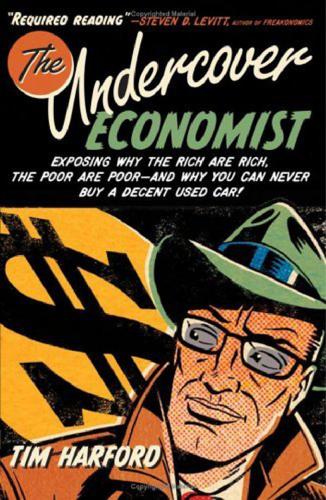
The Undercover Economist: Exposing Why the Rich Are Rich, the Poor Are Poor, and Why You Can Never Buy a Decent Used Car
by
Tim Harford
Published 15 Mar 2006
Foreign-owned factories pay a bit more and enjoy easier recruitment and lower turnover. But wages will have to rise and conditions will have to improve, because inland China is catching up. In 2003, Yang Li did what many Chinese workers have done: she left home to work in a sweatshop in the Pearl River delta. A month later, after working thirteen-hour shifts, she decided to go home and start her own business—a hair salon. “Every day at the factory was just work, work,” she says. “My life here is comfortable.” Yang Li’s parents had to survive the Cultural Revolution; her grandparents, the Great Leap Forward.
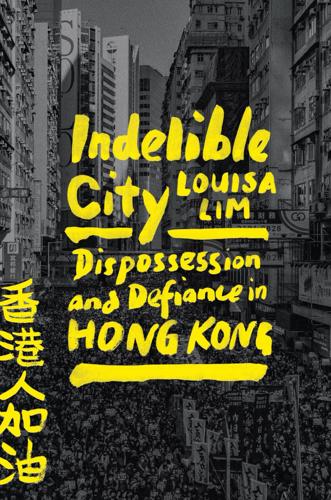
Indelible City: Dispossession and Defiance in Hong Kong
by
Louisa Lim
Published 19 Apr 2022
The battle for Chusan on July 4, 1840, took precisely nine minutes, leaving some 280 Chinese dead and 462 wounded, with no British deaths. The treaty negotiations, however, dragged on for six fruitless months while the Chinese plenipotentiary Qishan stalled for time. Elliot lost patience and on January 7, 1841, launched the Second Battle of Chuenpi at the Humen Strait in the Pearl River delta. The British captured forts on the islands of Taikoktow (now Dajiaotou) and Shakok (now Shajiao) in less than an hour, prompting China’s shocked surrender. Accounts by British soldiers described a frightful scene of slaughter, with bodies piled three or four deep, the fort “bespattered with brains,” and floating corpses blackening the sea.
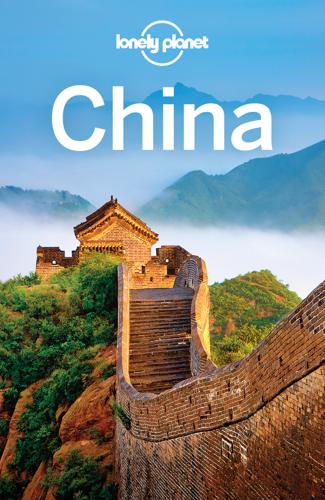
Lonely Planet China (Travel Guide)
by
Lonely Planet
and
Shawn Low
Published 1 Apr 2015
The following companies (all with counters at HKIA Terminal 2) have buses going to points in southern China (Foshan HK$230, Guangzhou HK$250, and Shenzhen airport HK$130): CTS Express Coach Eternal East Cross Border Coach ( GOOGLE MAP ; %3760 0888, 3412 6677; 4-6 Hankow Rd, 13th fl, Kai Seng Commercial Centre; h7am-8pm) Trans-Island Limousine Service FERRY You can also head straight from the airport to other Pearl River delta cities by ferry: Skypier (%2215 3232) A fast ferry service that links HKIA with Macau and six Pearl River delta destinations. Travellers can board ferries without clearing Hong Kong customs and immigration. Book a ticket prior to boarding from ticketing desks located in the transfer area at Arrivals (Level 5, near to immigration counters). Chu Kong Passenger Transportation Co Has ferries from HKIA to Shenzhen airport (HK$220, 40 minutes, eight daily, 10.15am to 6.30pm) and to Macau, Shekou, Dongguan, Zhuhai and Zhongshan.
…
Hong Kong AirlinesAIRPORT (HX; %3151 1888; www.hongkongairlines.com) Cheaper airline that specialises in regional routes, including 17 cities in mainland China. Boat Regular ferries link the China Ferry Terminal ( GOOGLE MAP ; China Hong Kong City, 33 Canton Rd, Tsim Sha Tsui) in Kowloon and the Hong Kong–Macau Ferry Terminal ( GOOGLE MAP ; Shun Tak Centre, 200 Connaught Rd, Sheung Wan) on Hong Kong Island with towns and cities on the Pearl River delta – but not central Guangzhou or Shenzhen. You’ll find left-luggage lockers (HK$20 to HK$30 per hour) in both terminals. Chu Kong Passenger Transportation Co (%2858 3876; www.cksp.com.hk) provides regularly scheduled ferries to Zhuhai (HK$200, 70 minutes), Zhongshan (HK$230, 1½ hours), Shunde (HK$240, two hours), Zhaoqing (HK$220, four hours) and Shekou (HK$140, one hour).
…
If it’s Unesco-crowned heritage you’re after, Kaiping’s flamboyant watchtowers and the stylised poses of Cantonese opera will leave you riveted. What's all the fuss about Hakka and Chiuchow cultures? Well, find out in Meizhou and Chaozhou. Historically Guangdong was the starting point of the Maritime Silk Road and the birthplace of revolution. On the scenic byways of the Pearl River delta, you’ll uncover the glory of China’s revolutionary past. While on the surf-beaten beaches of Hailing Island, an ancient shipwreck and its treasures await. When to Go AApr–Jun Verdant paddy fields against the built wonders of Kaiping and Meizhou. AJul–Sep Blue pines and stained-glass windows offer respite from summer.
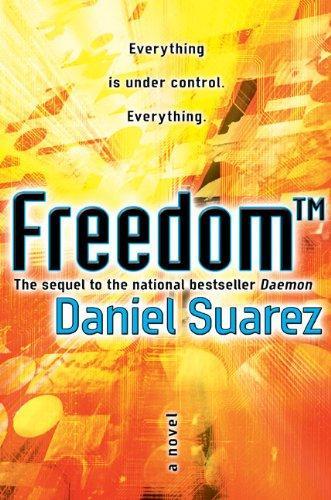
Freedom
by
Daniel Suarez
Published 17 Dec 2009
The project was made feasible through the recent discovery of comprehensive biometric data for the late Roy Merritt in the Building Twenty-Nine security database. The data includes body and facial geometry, textures, voice, gait, and other info. Contributors need a five-star reputation score and at least fifteen levels of proficiency in their primary class. XiLAN_oO*****/ 2,930 23rd-level Programmer Situated just across the Pearl River Delta from Hong Kong, Shenzhen was a city of migrants. Declared a Special Economic Zone by the Chinese government in 1980, it was an experiment in limited capitalism--and had grown with astonishing speed. Fueled by cheap labor, Shenzhen's population exploded from three hundred thousand to over twelve million people in less than three decades.
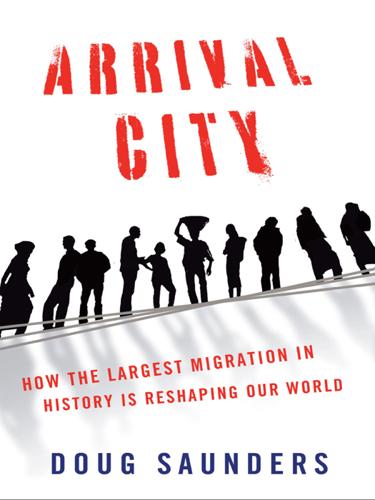
Arrival City
by
Doug Saunders
Published 22 Mar 2011
Each month, they keep $45 for food and $30 to cover expenses and send all the rest back to their village to support their daughter’s secondary-school education and to feed their parents, who raise their daughter. For 11 years, beginning in 1993, the two of them lived in more modern and somewhat less cryptlike worker dormitories in Shenzhen, the all-industrial city in the Pearl River Delta, 1,500 kilometers south. The garment factories there, which made goods for Western companies, had better working conditions and paid more. But they discovered a serious flaw: in Shenzhen, there was no prospect of arrival. No matter how much the couple saved, they could never afford an apartment, and the city offered them no option of purchasing a piece of shantytown housing, of the sort that dominates Liu Gong Li, because none exists in the planned city of Shenzhen.

Arriving Today: From Factory to Front Door -- Why Everything Has Changed About How and What We Buy
by
Christopher Mims
Published 13 Sep 2021
From Vietnam’s factories, barges carry things like Hyundai cars, Nike and Adidas sneakers, clothing bearing the labels of Patagonia, the North Face, Gap, Uniqlo, and H&M, as well as the majority of Samsung smartphones sold worldwide, which—surprise!—aren’t made in either Samsung’s home country of Korea or in what we usually think of as the electronics-manufacturing capital of the world, the Pearl River Delta area of China. Google also shifted manufacture of its phones to Vietnam; Apple suppliers have shifted production of AirPods to the country, and they may eventually make the iPhone there, too. Many of those barges converge southeast of Saigon at the Port of Cai Mep, on the dredged ship channel in the Thi Vai River.
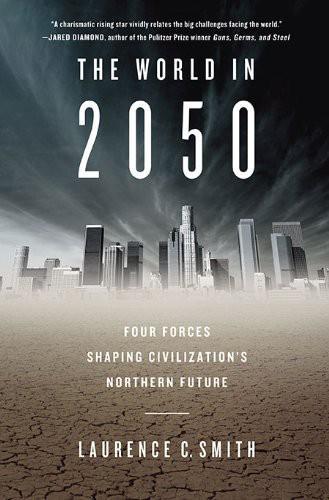
The World in 2050: Four Forces Shaping Civilization's Northern Future
by
Laurence C. Smith
Published 22 Sep 2010
By April, crop failures in Chattisgarh state drove fifteen hundred Indian farmers—unable to repay their debts without water—to commit suicide.194 Within days of the Iowa floods, heavy rains also struck eastern India and China, killing sixty-five people and displacing five hundred thousand in India. In China, floods in Guangdong and Guangxi Zhuang, Sansui City, and the Pearl River delta killed 176 and displaced 1.6 million. While America’s eyes were fixed on Sarah Palin, hydrologist Bob Brakenridge at Dartmouth was watching floods from space, using satellites to track them all over the world.195 In the ten months between Barack Obama’s winning the Iowa caucuses on January 3, and the general election on November 4, Brakenridge documented 145 major floods carving destruction around the planet.
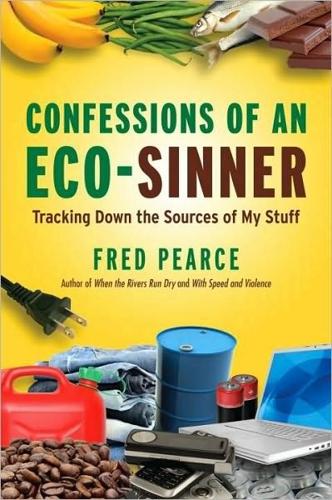
Confessions of an Eco-Sinner: Tracking Down the Sources of My Stuff
by
Fred Pearce
Published 30 Sep 2009
And it flourished wherever there was waste – in Chinese cities, or where containerloads docked from Europe. Wong said imports of waste plastic didn’t reach him, because they were snapped up by people nearer the port in Xiamen. But elsewhere I heard of vast amounts of plastic waste being imported from Britain to Hong Kong and shipped on barges up the Pearl River delta to recyclers around the industrial cities of Dongguan and Shenzhen. There, whole villages specialize in specific types of plastic waste, like PET bottles or plastic bags made of LDPE (low-density polyethylene). We in Britain occasionally get press reports of Tesco’s bags billowing through the back streets of southern China.
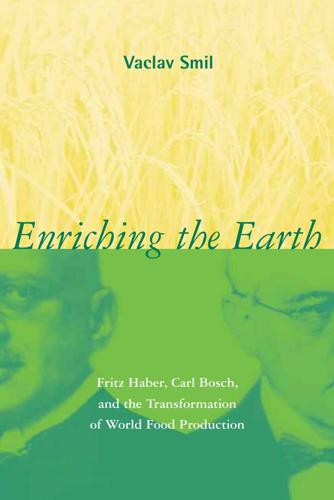
Enriching the Earth: Fritz Haber, Carl Bosch, and the Transformation of World Food Production
by
Vaclav Smil
Published 18 Dec 2000
Perhaps the highest nitrogen inputs in traditional agriculture were reached during the late nineteenth and early twentieth centuries in parts of South China where yearround cropping is possible, particularly in Sichuan’s Red Basin and in the lowlands of the southern provinces, especially in Guangdong’s Zhujiang (Pearl River) delta. 34 Chapter 2 There the combination of nitrogen inputs—intensively recycled human and animal wastes, regular cultivation of green manures and food and feed legumes, and biofixation by cyanobacteria in paddy fields—provided annually well in excess of 100 kg N/ha of arable land. My detailed reconstructions of nitrogen flows on small Sichuanese and Hunanese farms show that their highest managed inputs amounted typically to between 120 and 150 kg N/ha.57 Yet another traditional Chinese agroecosystem managed even higher nitrogen inputs, but as it involved a major component of aquaculture, its performance is not directly comparable with crop-based schemes.
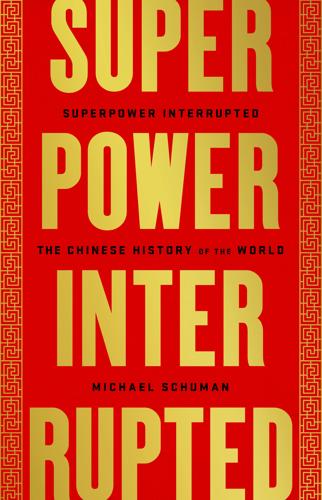
Superpower Interrupted: The Chinese History of the World
by
Michael Schuman
Published 8 Jun 2020
“They do really look like devils,” he wrote in his diary of the Portuguese men, with their short, curly hair and small tufts of beard. “They also have devil-slaves, called black devils, who come from the country of the Moors.… They are blacker than lacquer, and were this color from the time of their birth.”10 Amazing indeed. Lin had no idea what these barbarians were up to on the other side of the Pearl River delta. The same day he began his return journey from Macau to Guangzhou, Elliot had fired upon some Chinese war junks near the island of Hong Kong. Amid another dispute, Lin had barred the British from receiving supplies until they handed over the suspected murderer of a Chinese man, and after frustrated attempts to access food, Elliot got into the scuffle with the junks.
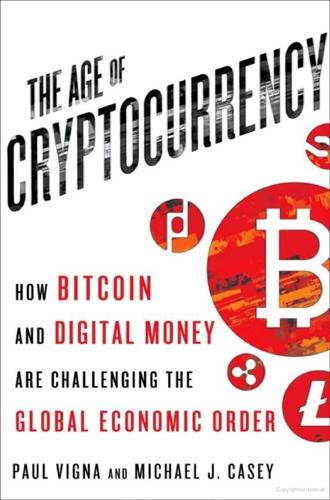
The Age of Cryptocurrency: How Bitcoin and Digital Money Are Challenging the Global Economic Order
by
Paul Vigna
and
Michael J. Casey
Published 27 Jan 2015
Walmart parlayed those cost savings into the cheapest prices anywhere in the United States, which turned it into the iconic and, to some, infamous behemoth that now dominates American suburbia. Just as important, its high-tech network had a feedback effect on suppliers, contributing to the concentration of manufacturing in hubs such as China’s Pearl River Delta. As Walmart became an increasingly powerful but relentless hunter of the cheapest manufacturing sources, and as other Western buyers caught on to its high-tech lead, factories paying low wages in the developing world would congregate in locales where it was most efficient to tap into Walmart’s network.
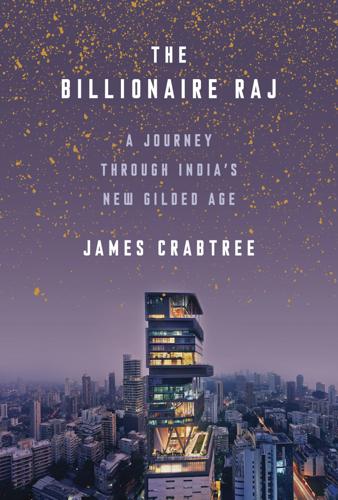
The Billionaire Raj: A Journey Through India's New Gilded Age
by
James Crabtree
Published 2 Jul 2018
In 2002, Adani Enterprises, his main holding company, was worth barely $70 million.2 A decade later he claimed to have built assets worth $20 billion, while the value of his companies had jumped more than one hundredfold.3 By the time of India’s most recent election in 2014, Forbes listed his fortune at $7 billion.4 Above all, Adani’s controversial reputation rested on a final factor: his friendly ties to Narendra Modi, the man who would go on to become India’s prime minister. Adani’s businesses began taking off in the years following Modi’s arrival as Gujarat’s chief minister back in 2001. Under Modi the state grew into a vibrant industrial hub, with a particular strength in export-focused manufacturing, even drawing comparisons with the Pearl River Delta, the region around Hong Kong that powered China’s transformation into a global trading giant. The two men enjoyed symbiotic careers. Modi’s pro-business policies helped Adani expand. Adani’s own companies, meanwhile, built many of the grand projects that came to symbolize Modi’s “Gujarat model,” with its emphasis on infrastructure investment, attracting foreign capital, and export industries.
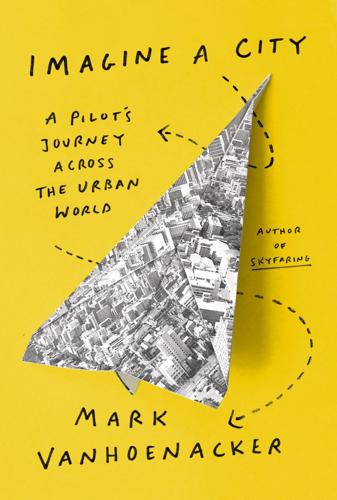
Imagine a City: A Pilot's Journey Across the Urban World
by
Mark Vanhoenacker
Published 14 Aug 2022
On these, Cape Town’s mountains, skies, and seas have been drawn by Chinese artisans who worked 7,000 miles away from a city they would never see, and who surely couldn’t have imagined the circumstances in which I’d pause to look upon their work in the twenty-first century, nor those by which, in a few months, I’ll descend through the skies of the Pearl River Delta en route to Hong Kong. EARLY SUMMER I’m covered in sweat after the hike up through the streets of Bo-Kaap, and the well-shaded swing, suspended from a tree and swaying gently in the breeze, is tempting, but even as I walk toward it I realize I’m not certain I’m allowed to use a swing that hangs in a cemetery.
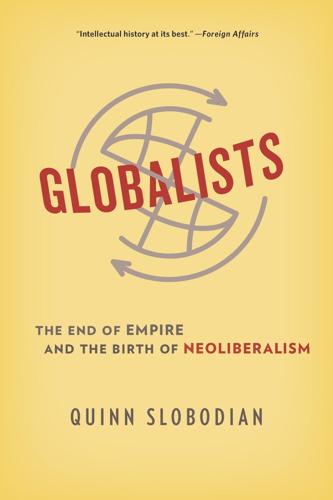
Globalists
by
Quinn Slobodian
Published 16 Mar 2018
Deng Xiaoping’s reforms started a process toward China’s own form of nonmajoritarian capitalism, slowly introducing market freedoms without expanding political representation. The price mechanism was permitted without the mechanism of popular sovereignty—the multiparty election. In 1979, China opened the country’s first export processing zones in the Pearl River Delta, a region of exception outside of the national tax structure that would become a defining form of neoliberal-style development by the 1990s.100 This future was distant in the 1970s, however, and in the decade of the NIEO, the situation still looked dire to neoliberals. The Hong Kong address presented by MPS president George Stigler was titled “Why Have the Socialists Been Winning?”
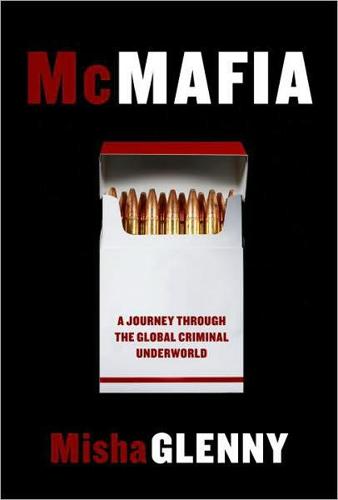
McMafia: A Journey Through the Global Criminal Underworld
by
Misha Glenny
Published 7 Apr 2008
Twenty years ago, Shenzhen had a population of several thousand and was no more than a few scattered villages. From the gentle agricultural pastures of northern Hong Kong, you can now cross into a 12 million–strong giant of hypermalls, factories, tower blocks, and work, work, work. Shenzhen on the Pearl River Delta is the gateway to the new China, having formed a profoundly dynamic symbiotic relationship with Hong Kong. One of the original special economic zones, not only has Shenzhen become the blazing vanguard of China’s future, but it has even rescued the former British colony from decline by throwing it a lifeline of economic opportunity.
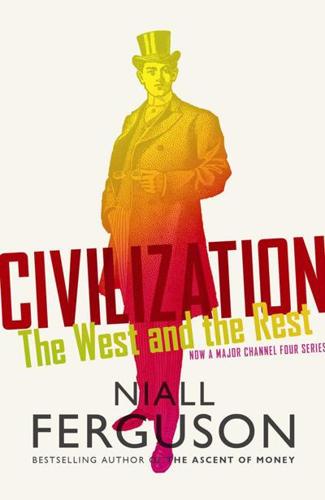
Civilization: The West and the Rest
by
Niall Ferguson
Published 28 Feb 2011
And it must be remembered that, though the Portuguese had precious few goods the Chinese wanted, they did bring silver, for which Ming China had an immense demand as coins took the place of paper money and labour service as the principal means of payment. In 1557 the Portuguese reached Macau, a peninsula on the Pearl River delta. Among the first things they did was to erect a gate – the Porta do Cerco – bearing the inscription: ‘Dread our greatness and respect our virtue.’ By 1586 Macau was an important enough trading outpost to be recognized by the Portuguese Crown as a city: Cidade de Nome de Deus (City of the Name of God).
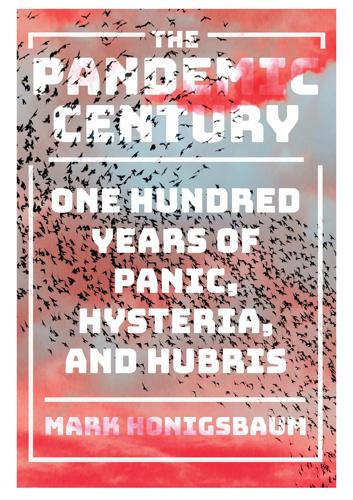
The Pandemic Century: One Hundred Years of Panic, Hysteria, and Hubris
by
Mark Honigsbaum
Published 8 Apr 2019
Since the market liberalization measures introduced by China’s Maoist leadership in the late 1970s, Shenzhen and the provincial capital, Guangzhou, have witnessed astonishing rates of economic growth. Spurred by the production of sports trainers, cheap toys, and electronics, between 1978 and 2002 Guangdong’s GDP grew by an average of 13.4 percent per annum, while the urban population of the Pearl River Delta region, which encompasses Guangzhou, expanded to the point where it now accounts for 70 percent of the province’s total population. This manufacturing boom has had two major ecological effects. First, to feed the vast labor force in its factories, Guangdong raises millions of chickens on industrial-scale poultry farms (in 1997, the province was home to an estimated 700 million chickens and by 2008 was producing one billion “high quality” broiler chickens a year).
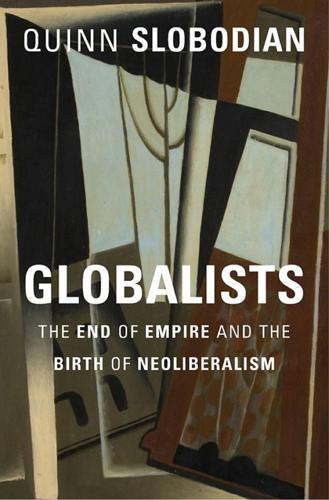
Globalists: The End of Empire and the Birth of Neoliberalism
by
Quinn Slobodian
Published 16 Mar 2018
Deng Xiaoping’s reforms started a process toward China’s own form of nonmajoritarian capitalism, slowly introducing market freedoms without expanding political representation. The price mechanism was permitted without the mechanism of popular sovereignty—t he multiparty election. In 1979, China opened the country’s first export processing zones in the Pearl River Delta, a region of exception outside of the national tax structure that would become a defining form of neoliberal-style development by the 1990s.100 This future was distant in the 1970s, however, and in the decade of the NIEO, the situation still looked dire to neoliberals. The Hong Kong address presented by MPS president George Stigler was titled “Why Have the Socialists Been Winning?”
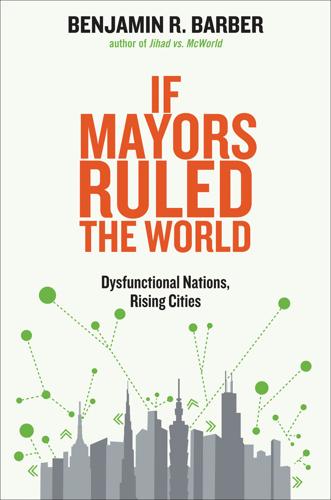
If Mayors Ruled the World: Dysfunctional Nations, Rising Cities
by
Benjamin R. Barber
Published 5 Nov 2013
Typical is Africa’s Lagos-Ibadan-Cotonou region, where Lagos alone is projected to reach twenty-five million by 2025, making it the world’s third-largest city after Mumbai and Tokyo, in a Nigeria that has six cities over a million and another dozen with 500,000 to a million—all of them growing rapidly.18 Then there is Kinshasa-Brazzaville, two interconnected cities separated by a river in rival “Congo” states. Other megacities have appeared in the Indo-Gangetic Plain, in China’s Pearl River Delta, as well as in the Northeast Corridor in the United States, Japan’s Taiheiyo Belt, Europe’s Golden Banana (sunbelt) along the western Mediterranean, and the Greater São Paulo metro region in Brazil. China’s cities are growing so fast that it is nearly impossible to keep up. A McKinsey study estimates that in the next ten to fifteen years, 136 new cities will join the world’s 600 cities with the largest GDPs, all of them from the developing world.

The River of Lost Footsteps
by
Thant Myint-U
Published 14 Apr 2006
Until the republican revolution of 1911, China would be ruled by these milk-drinking, cheese-eating onetime nomads of the far north.26 The prince of Gui’s father was the seventh son of the Wanli emperor, and the young prince had been brought up among the sybaritic pleasures and strict hierarchies of the Imperial City. He was now on the run, fleeing first to his ancestral estates in Hunan, central China, and then to the southwest near present-day Hong Kong. It was there, among the limestone cliffs of the Pearl River delta, that his fugitive court named him the Yongle emperor and rightful heir to the three-hundred-year-old Ming throne. He became a lightning rod for the growing resistance to the Manchu occupation. For the next year and a half the prince of Gui and his men trekked across the far south of China, along the borders of Vietnam, and then southwest into the tribal regions of Guangxi.
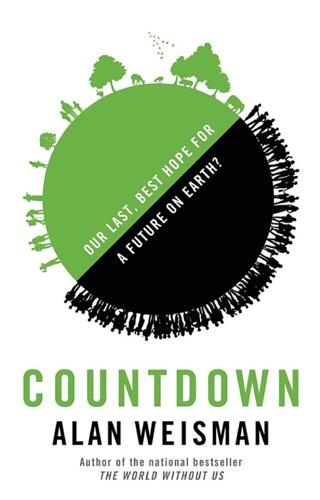
Countdown: Our Last, Best Hope for a Future on Earth?
by
Alan Weisman
Published 23 Sep 2013
As had I, the second of two children in my own family and the grateful beneficiary of an older sister’s love and guidance. In China, I raised the same question at Guangzhou University. At 13 million, Guangzhou, two hours north of Hong Kong, is now China’s third biggest city—if taken just by itself. It is actually part of the world’s largest metropolitan industrial complex: 40 million people in the Pearl River Delta, where five other now-contiguous cities top 3 million. Their astonishing growth is due to immigration from poorer parts of China for the promise of work in factories. I was speaking to four hundred college students who, relieved of shackles that restricted an entire prior generation during the Cultural Revolution, were bursting with opportunities to learn and get interesting jobs and make money.
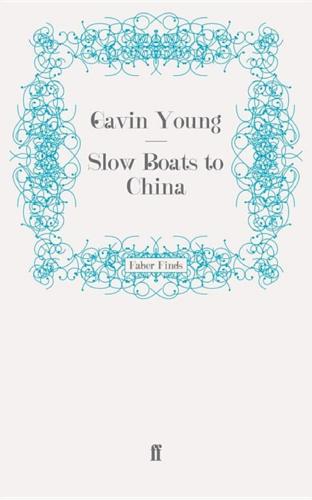
Slow Boats to China
by
Gavin Young
Published 24 Feb 1983
Seven months before, I had bathed in the sun and warmth of the Mediterranean at Piraeus, the blue of the sea and sky and the white of whitecaps and white ships. The colours of the Greek flag, I had thought then; now I was immersed in an all-pervading greyness of sea, sky, island and mainland, the pearl greyness of the Pearl river delta. I was the only non-Chinese on a hydrofoil manufactured, according to the metal plaque, by Hovermarine Transport, Southampton. We sat as if in a small theatre in ten rows, seven seats to a row, arranged two, three and two, with two aisles. From time to time the people nearest the windows rubbed them with their sleeves in a vain affort to de-mist them or clear them of the rain and spray that almost totally obscured our view of the river, passing ships and the shore.

Owning the Earth: The Transforming History of Land Ownership
by
Andro Linklater
Published 12 Nov 2013
Although the Museum liked to pretend that its readers were “plain, honest, well-meaning farmers,” it also offered them papers on the production of chemicals for dyeing and bleaching, on experiments with making artificial fertilizer, on the construction of a hydrometer, and on the design of rails for “cast-iron railroads” in order to transport heavy loads of coal or iron ore. Many disparate elements had to crystallize to produce the Industrial Revolution. It is easy to find most floating in solution in other economies. China especially had a market economy on the Yangtze and Pearl River deltas, a tradition of inventiveness, an efficient transport system using canals and rivers, and abundant energy in the form of waterwheels, windmills, and, above all, human labor. Since water remained more important than coal as a source of nonhuman energy in British industry until the 1820s, the inaccessibility of China’s inland coalfields is not relevant to its failure to industrialize.
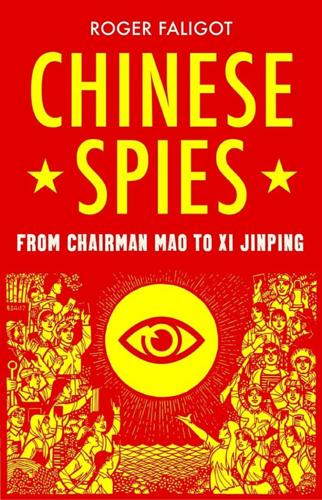
Chinese Spies: From Chairman Mao to Xi Jinping
by
Roger Faligot
Published 30 Jun 2019
Based in Canton, for the next twenty years he continued his surveillance work and advised Deng Xiaoping. To complicate matters further, all over Hong Kong, conflicts were breaking out between different communist factions in the region, which thousands of Chinese people fleeing the Cultural Revolution had reached by swimming across the Pearl River Delta. These refugees were an important source of intelligence for the CIA, for Australian China-watchers, for the extraordinary Jesuits who produced the newsletter China News Analysis (CNA), founded by Hungarian priest Father László Ladány, and for British China experts, including Professor Ride, who was married to the cousin of Alexandre de Marenches, head of the French secret services, the SDECE.

Slouching Towards Utopia: An Economic History of the Twentieth Century
by
J. Bradford Delong
Published 6 Apr 2020
Although I have said that this “second unbundling” process transferred manufacturing to the global south, that is not quite right. High-tech global manufacturing went to Korea, so much so that Korea is now a full member of the global north, alongside Japan, as well as Taiwan. It went, above all, to parts of China—but specifically to the growth-pole megacities of the Pearl River Delta, Shanghai, and Beijing, and secondarily to the coasts, but not to the interior. It also went to India—but overwhelmingly to Maharashtra and Karnataka, not to Uttar Pradesh. It went to Indonesia, Thailand, and Malaysia, and is now going to Vietnam. It went to Poland, next door to the manufacturing powerhouse of Germany, whose firms found enormous benefits in spreading out their value chains to make use of the low-wage labor found next door.
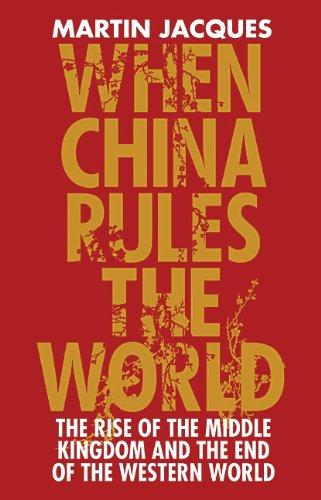
When China Rules the World: The End of the Western World and the Rise of the Middle Kingdom
by
Martin Jacques
Published 12 Nov 2009
Yu Yongding, ‘China’s Structural Adjustment’, p. 1 27 . Interview with Yu Yongding, Singapore, 3 March 2006. 28 . Andy Xie, Asia/Pacific Economics, report for Morgan Stanley, November 2002. 29 . ‘Guangdong Factories Drop Cheap for Chic’, South China Morning Post, 17 March 2008; ‘End of an Era for Pearl River Delta’, South China Morning Post, 9 February 2008. 30 . Yu Yongding, ‘China’s Rise, Twin Surplus and the Change of China’s Development Strategy’, unpublished paper, Namura Tokyo Club Conference, Kyoto, 21 November 2005, p. 12. 31 . Ibid., p. 11. 32 . Maddison, Chinese Economic Performance in the Long Run, pp. 94-6. 33 .

Growth: From Microorganisms to Megacities
by
Vaclav Smil
Published 23 Sep 2019
But most of this area in eastern Sichuan is rural, comprised of 25 districts, 13 counties, and more than 1,200 towns and townships. The municipality’s population has surpassed 30 million, but the city itself covers less than 500 km2 and contains fewer than 9 million people. But China has a better claim to having the world’s largest urban conglomeration in Guangdong’s Pearl River Delta, just north of Hong Kong, where some 65 million people lived in 2015 spread across an area of about 56,000 km2 (HKTDC 2017). Before the rise of megacities, most of the world’s largest cities during the preindustrial era were in Asia: eight out of ten in 1500 and still six out of ten in 1825, but then the Western urbanization shifted the order and by 1900 nine out of the ten largest cities were in Europe and the US (Jedwab and Vollrath 2014).
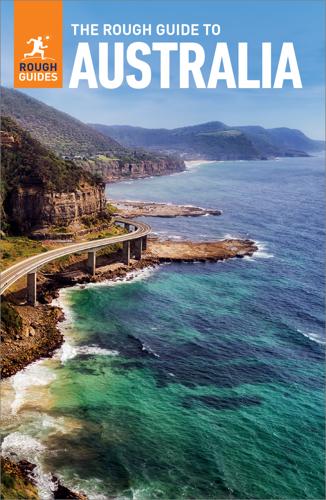
The Rough Guide to Australia (Travel Guide eBook)
by
Rough Guides
Published 14 Oct 2023
North of Bourke Street, and running parallel to it, is Little Bourke Street, with the majestic Law Courts by William Street at the western end, and Chinatown to the east between Exhibition and Swanston streets. Australia’s oldest continuous Chinese settlement, Melbourne’s Chinatown began with a few boarding houses in the 1850s (when the gold rushes attracted Chinese people in droves, many from the Pearl River Delta near Hong Kong) and grew as the gold began to run out and Chinese fortune-seekers headed back to the city. Today, the area still has a low-rise, narrow-laned, nineteenth-century character, and it’s packed with restaurants, stores and some of Melbourne’s best-hidden laneway bars and restaurants.